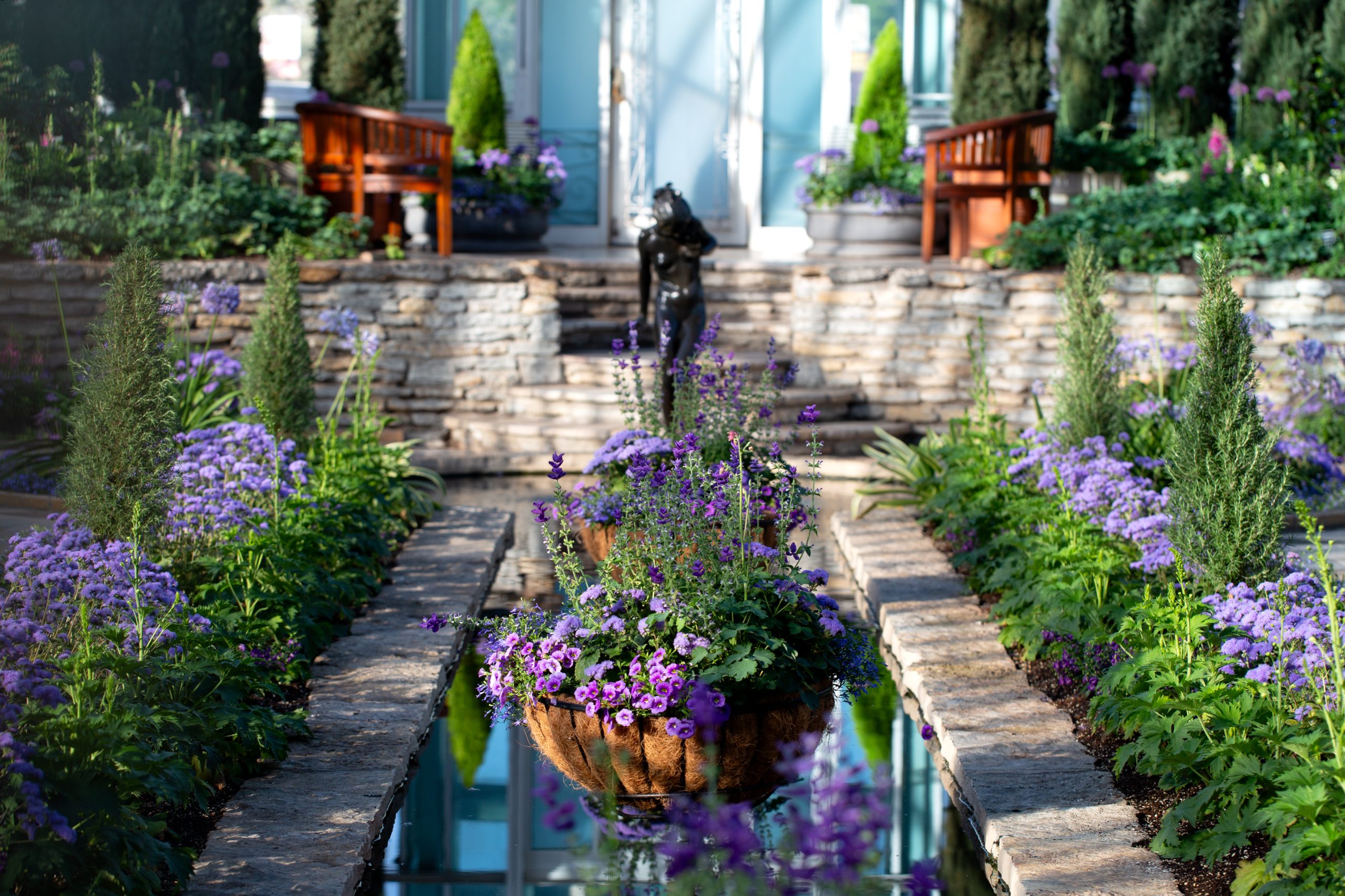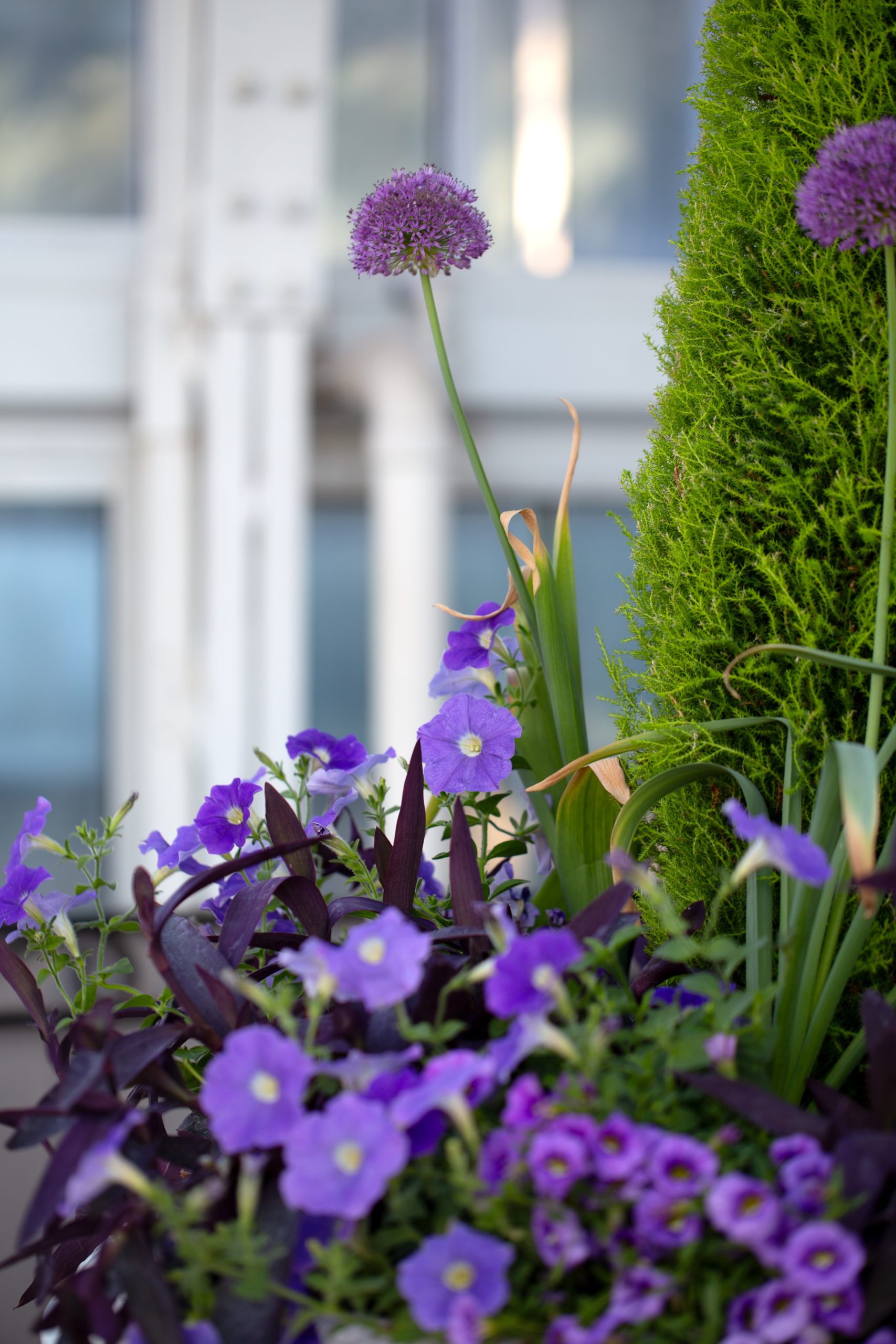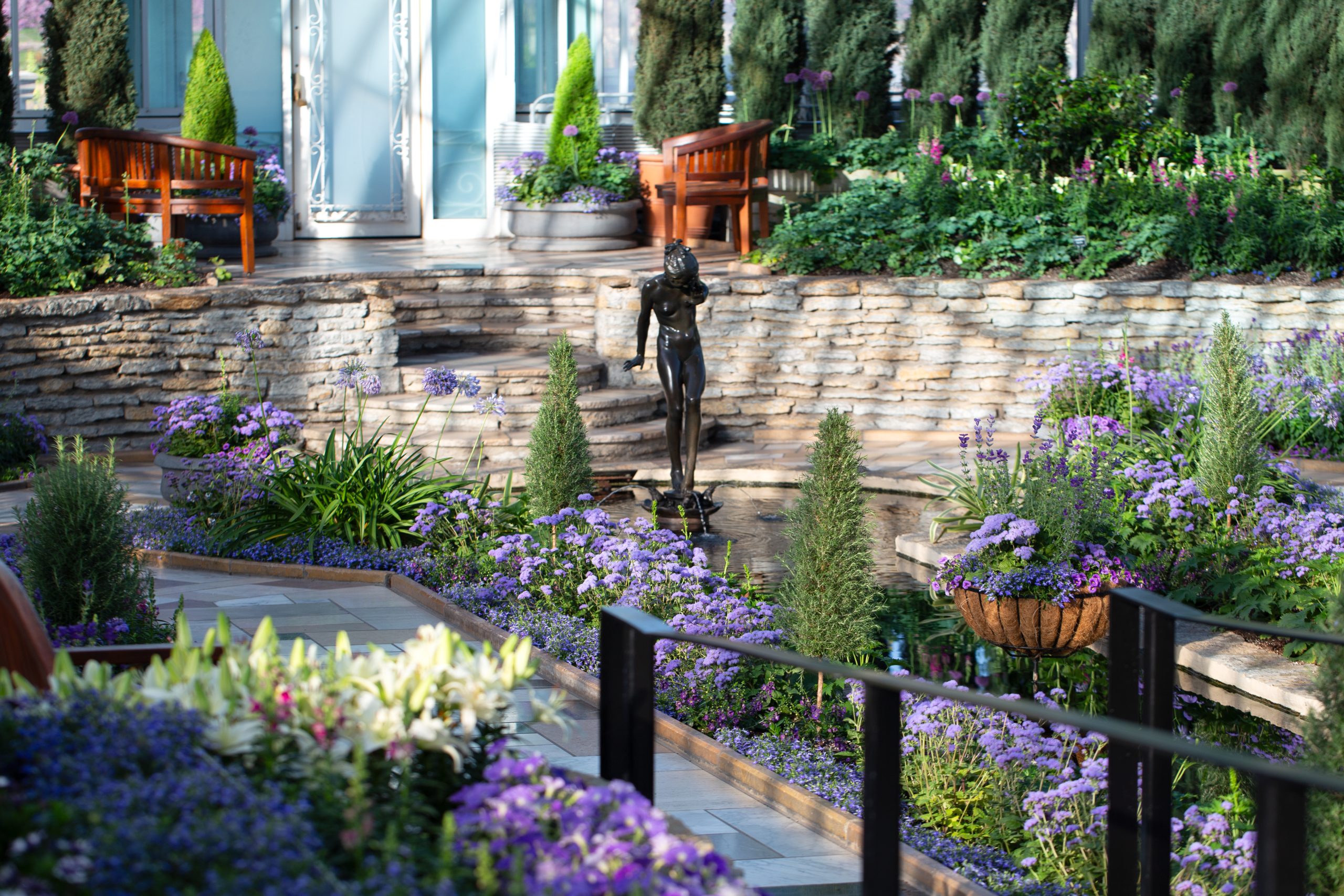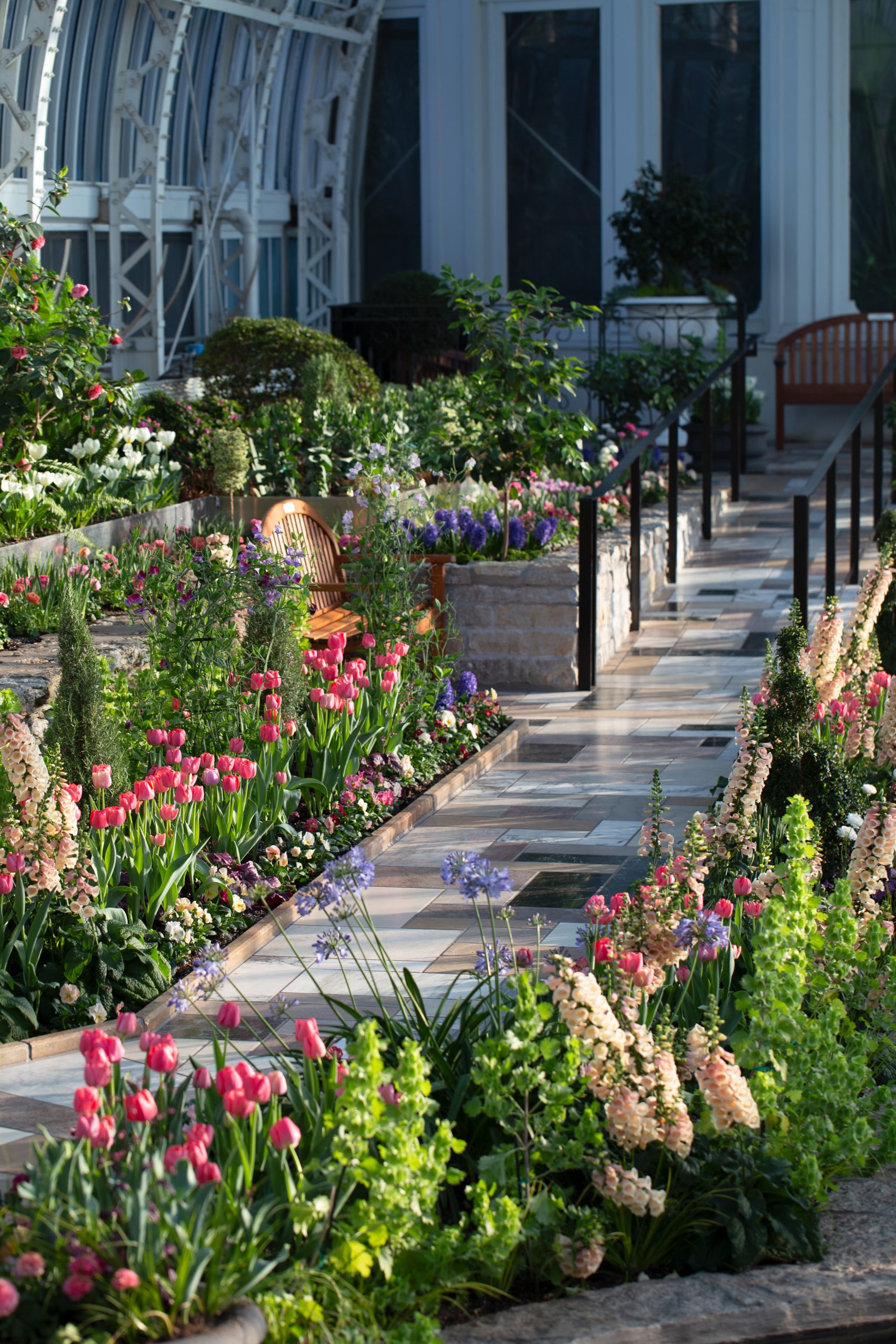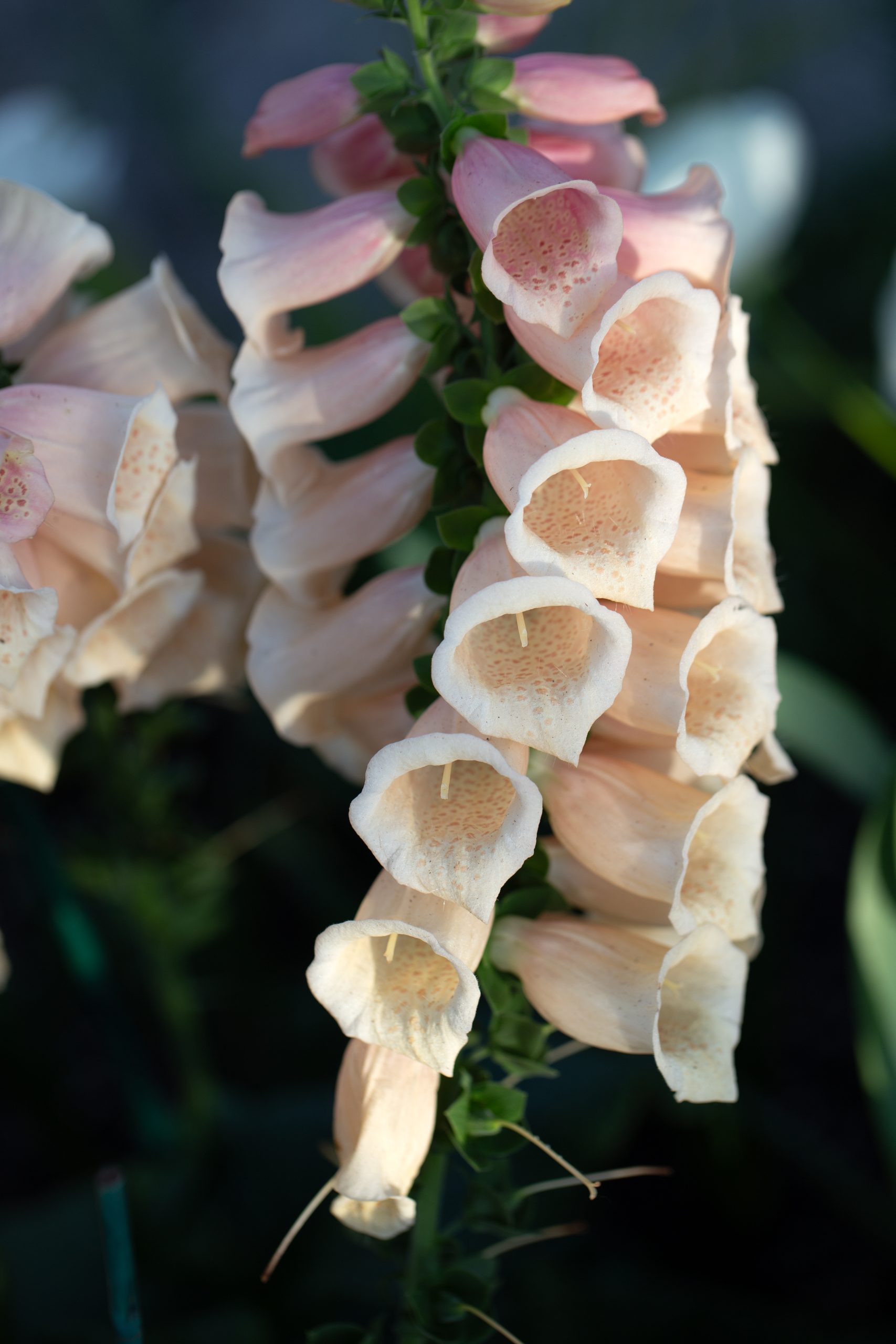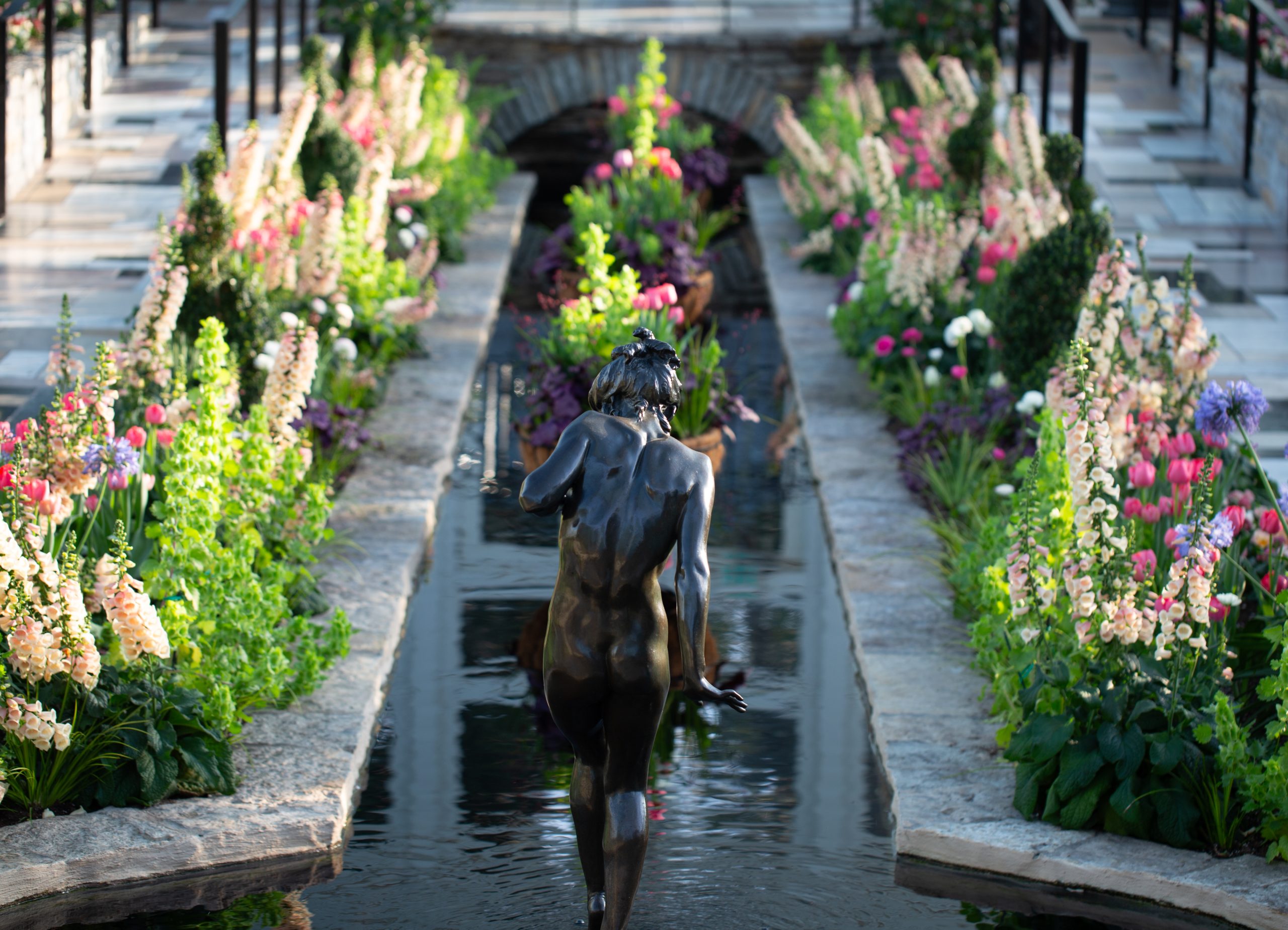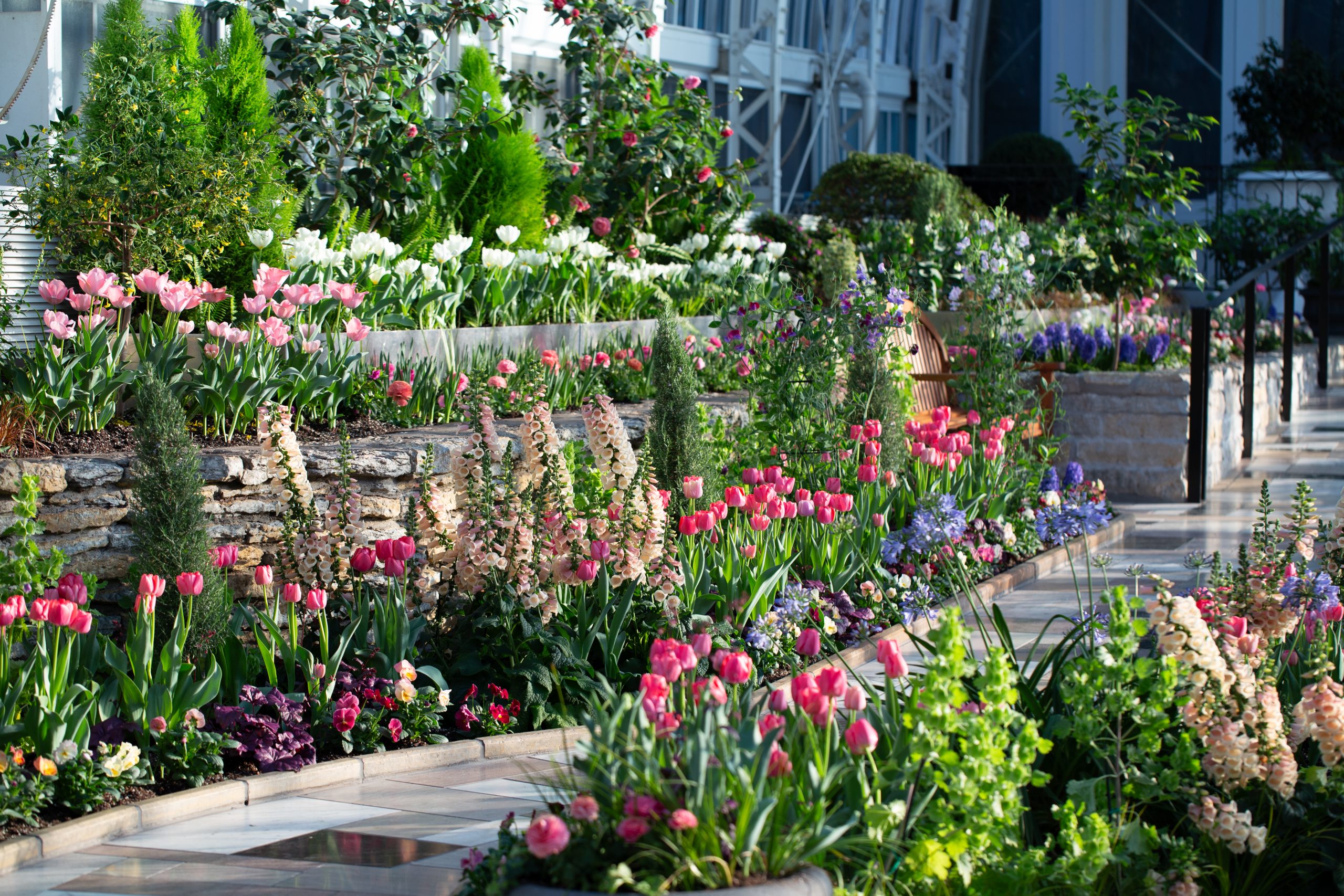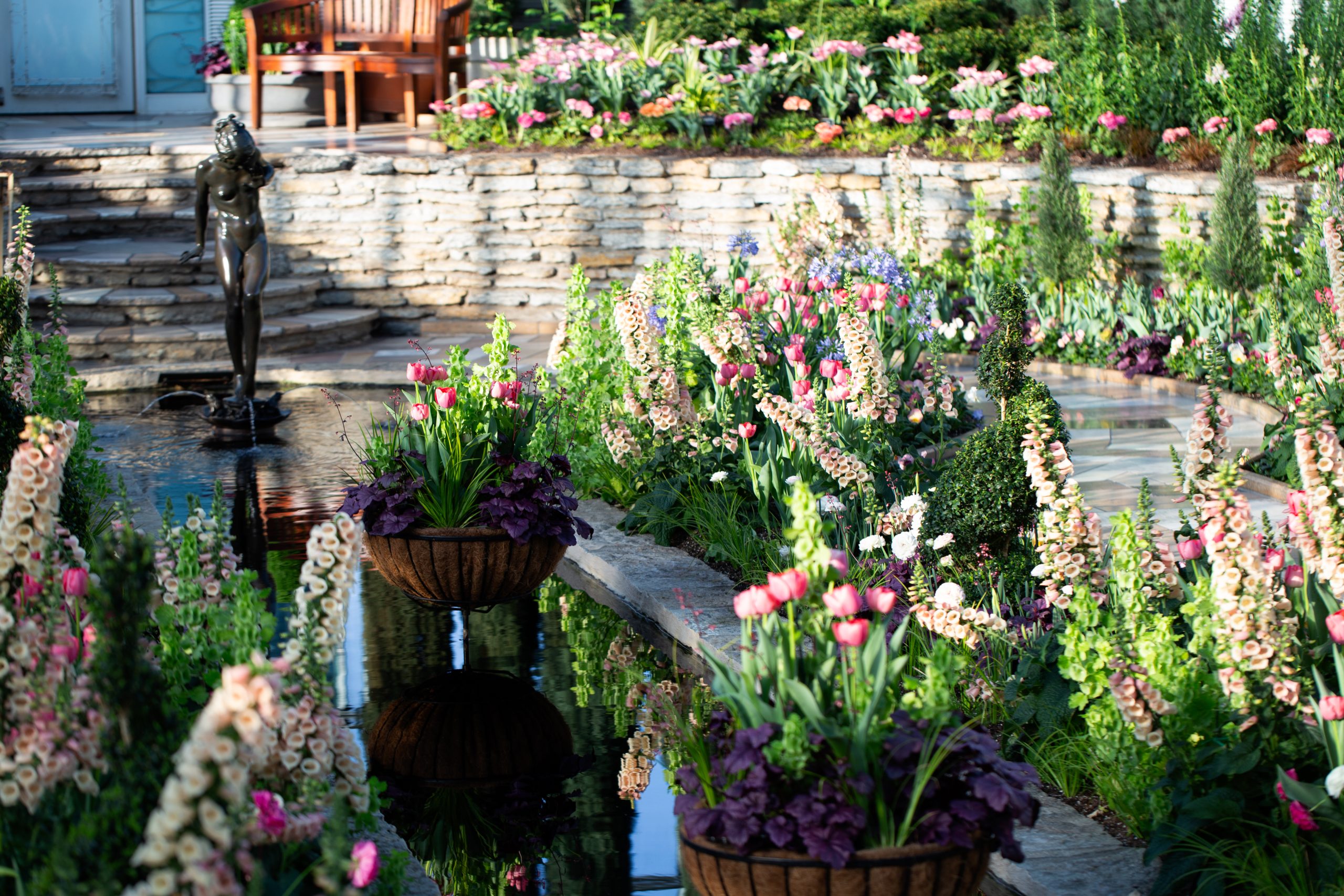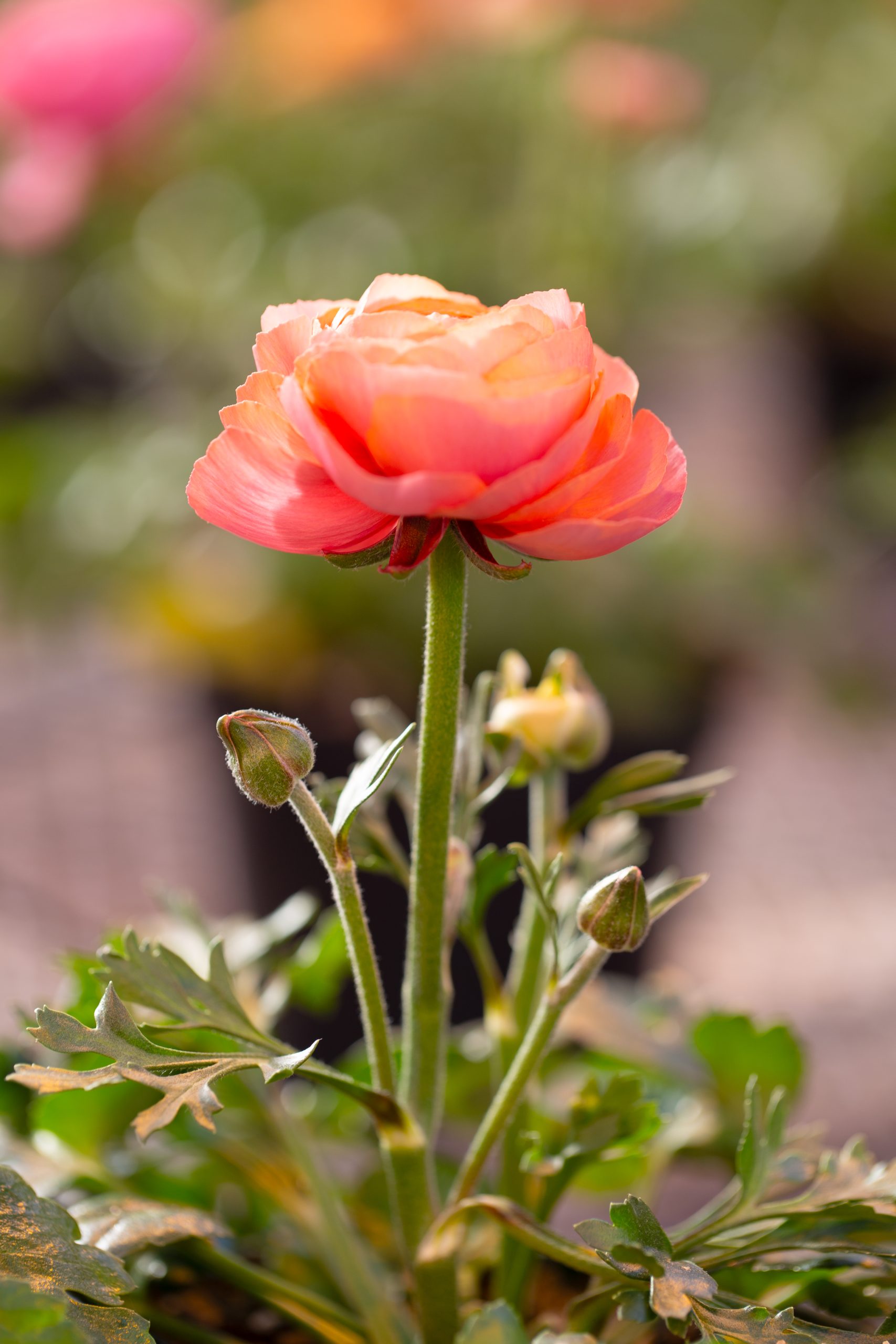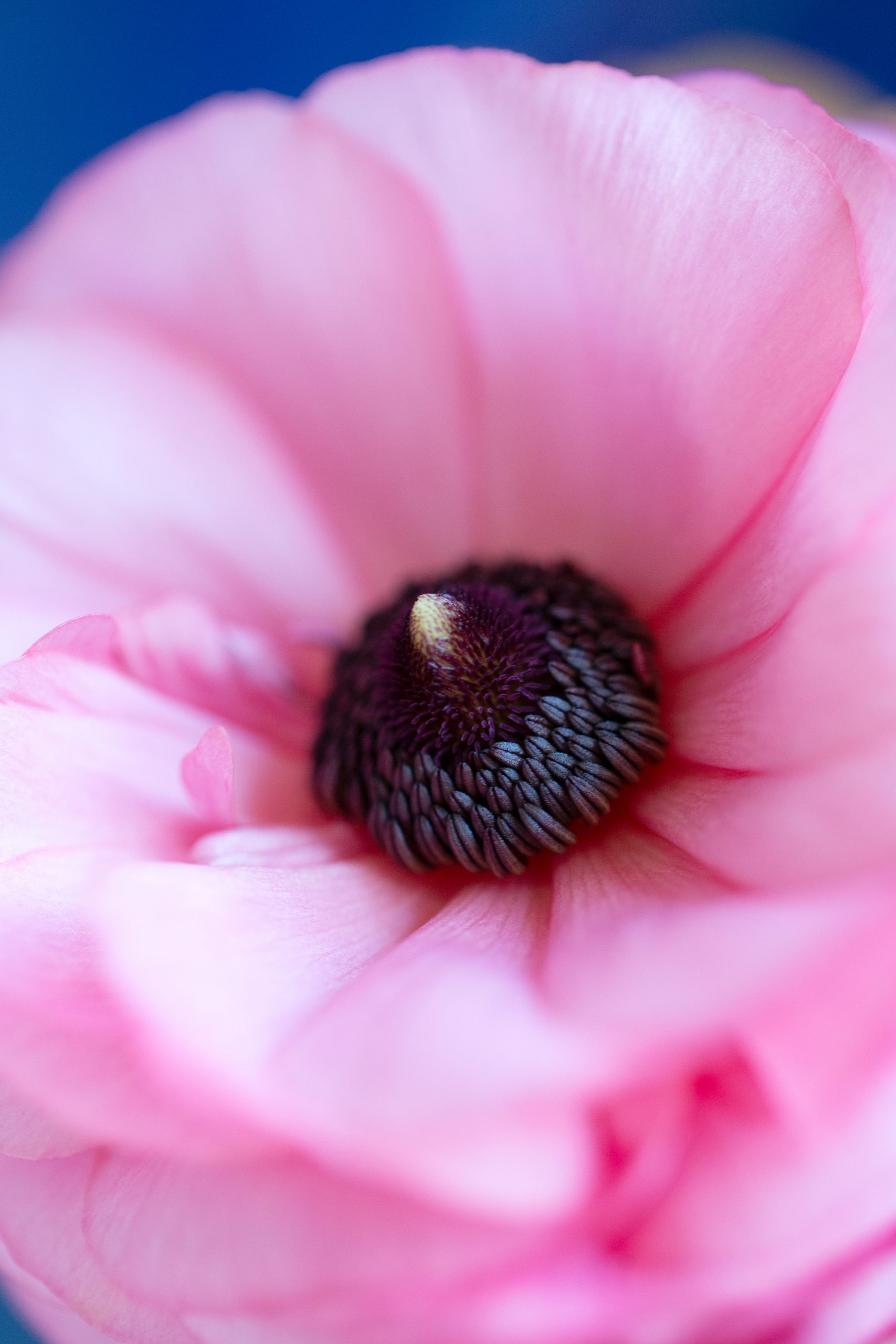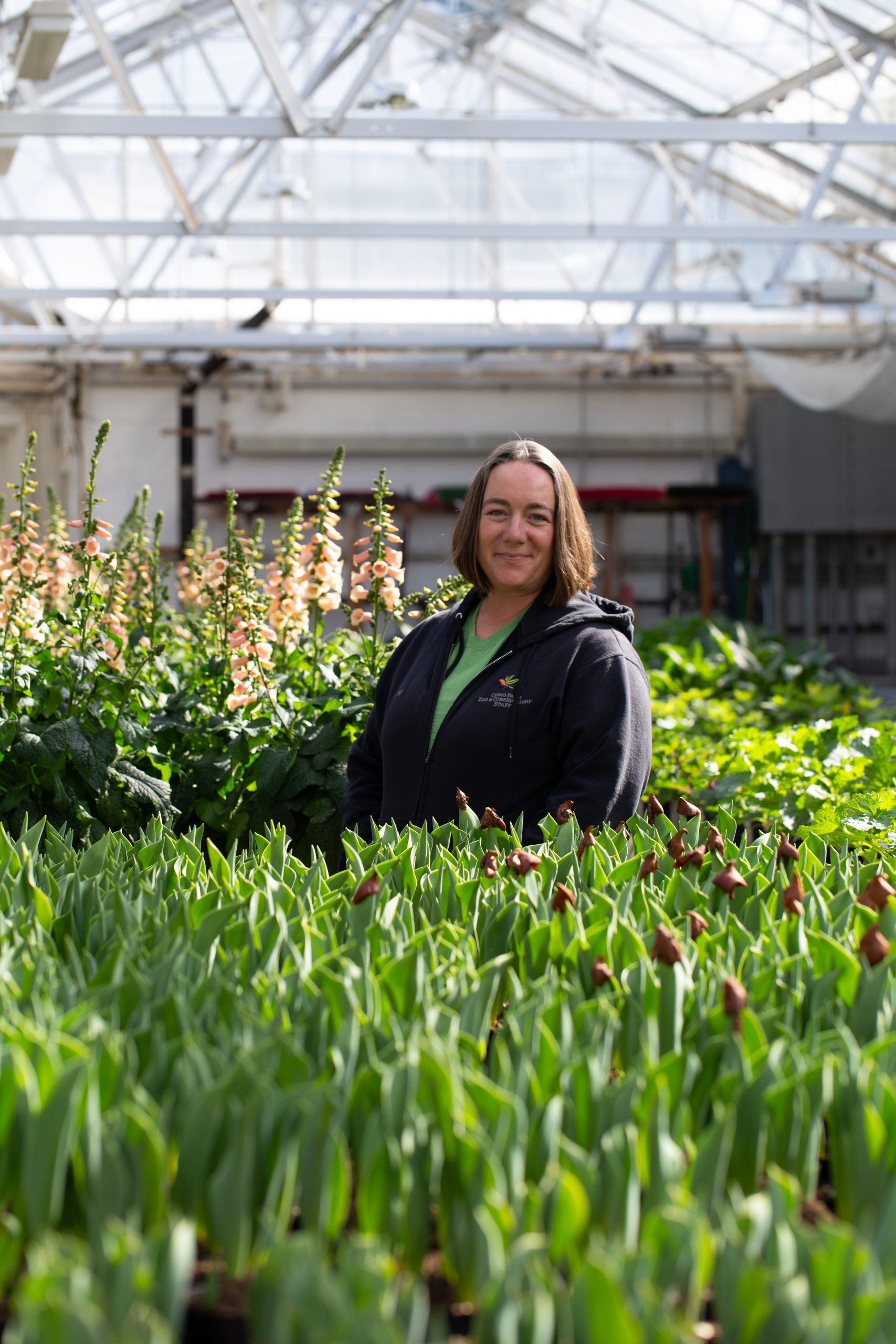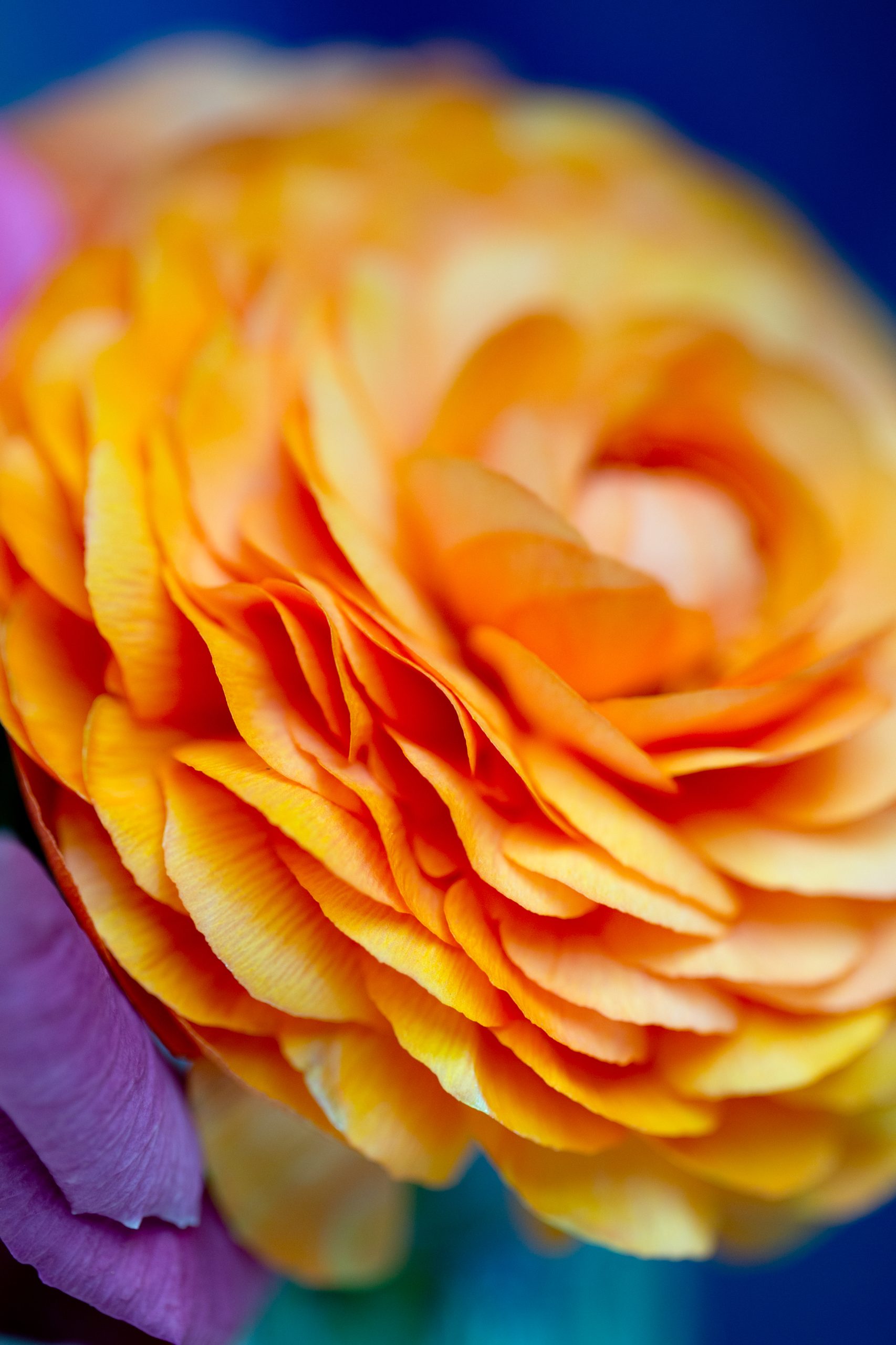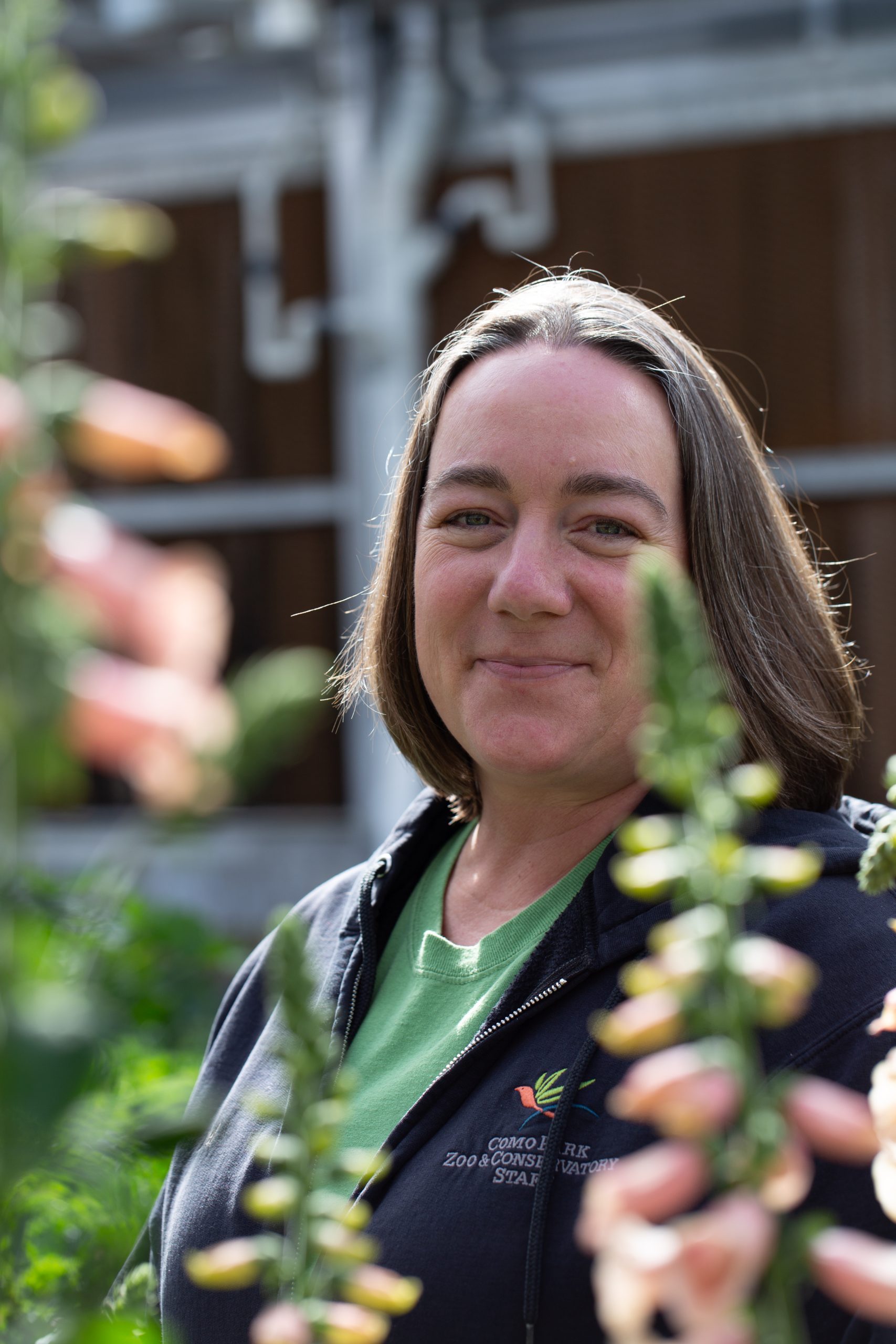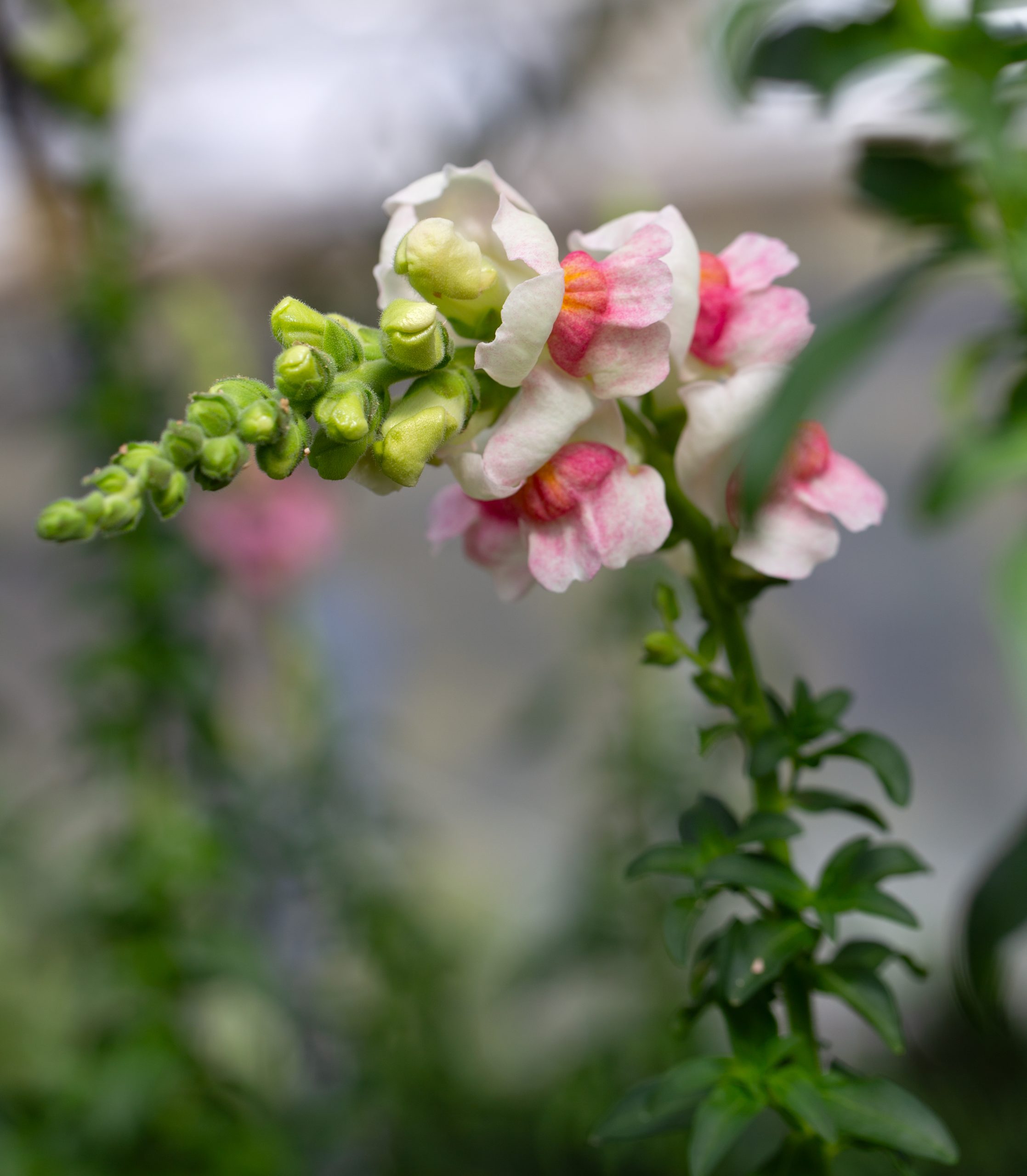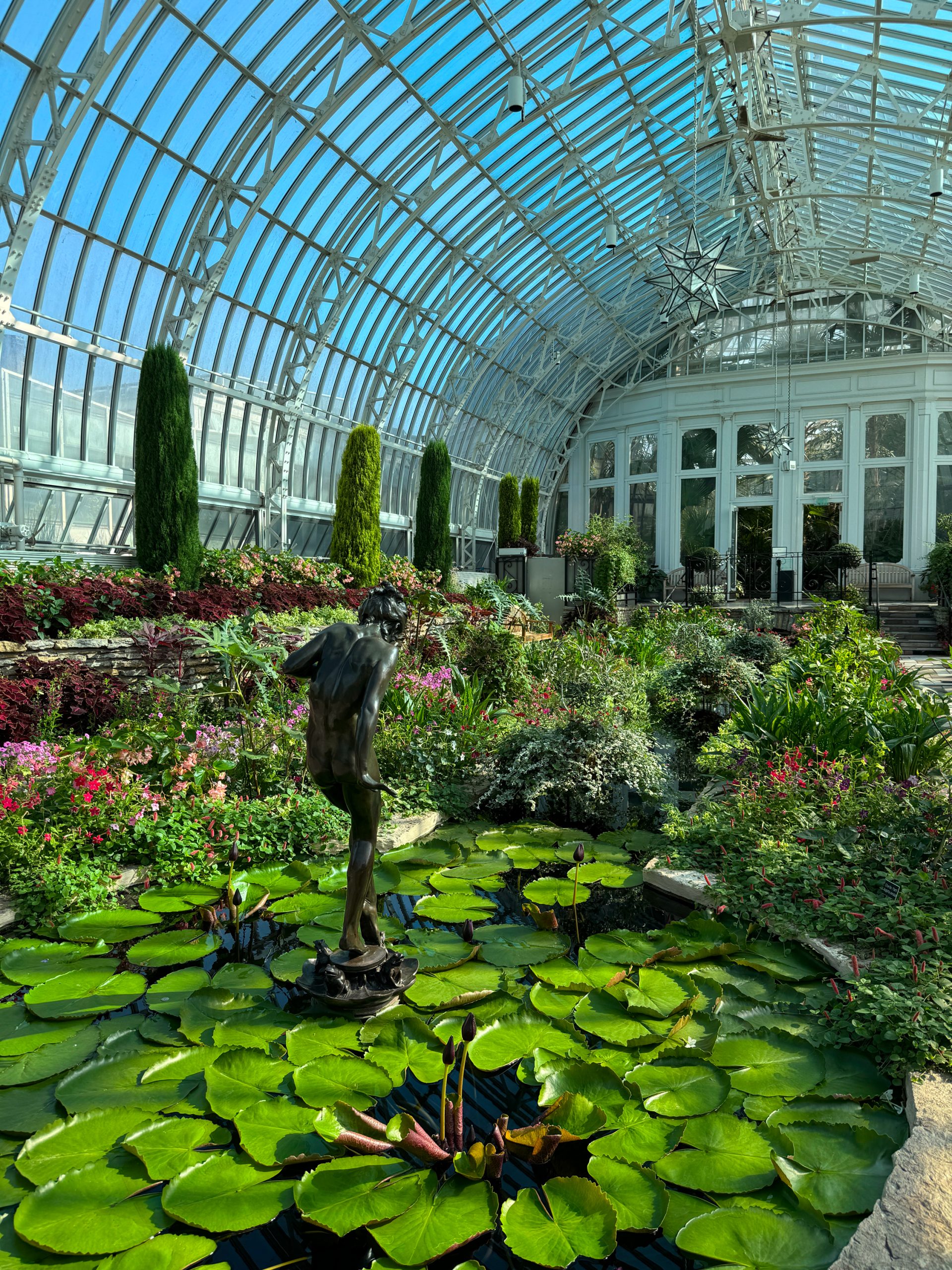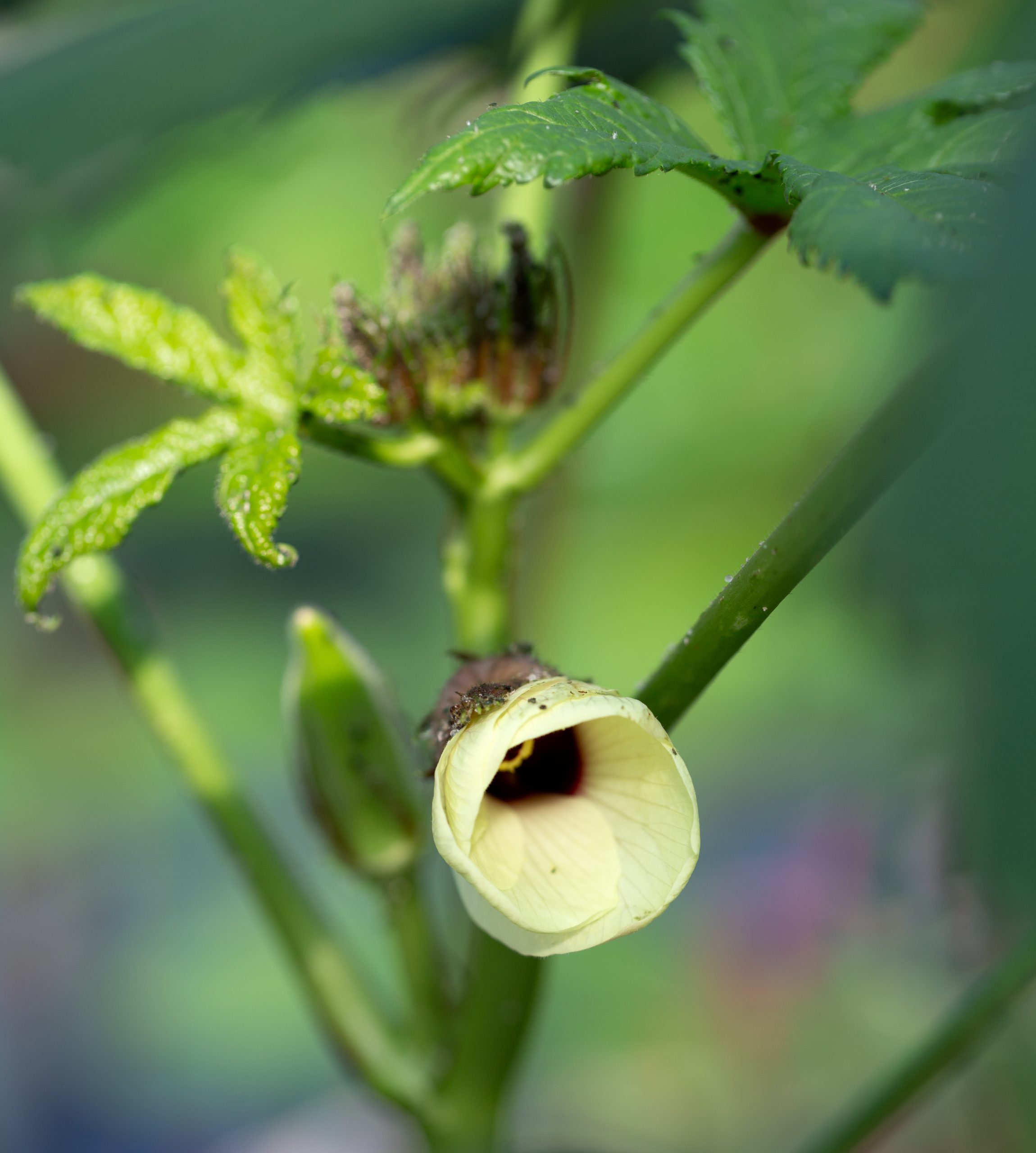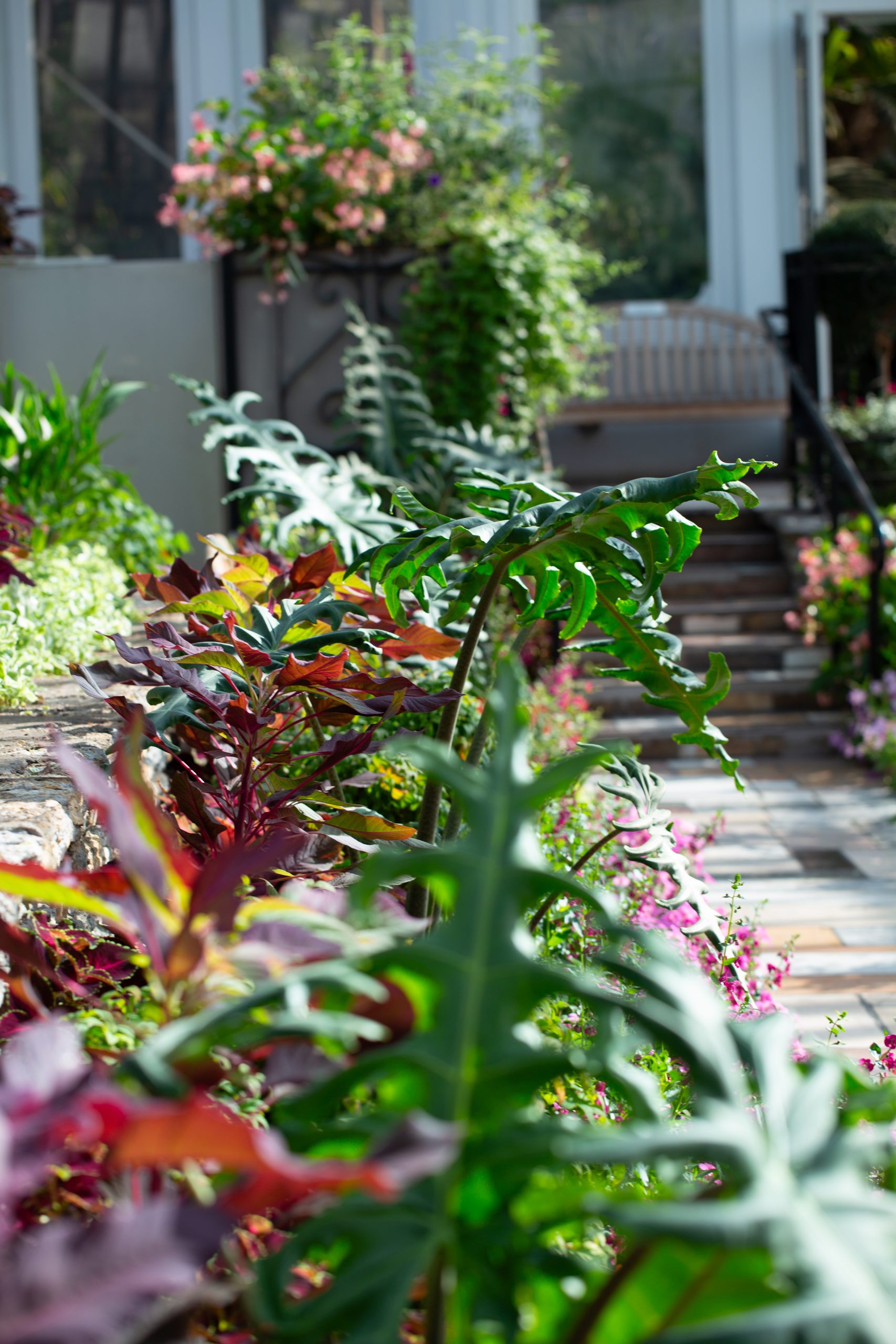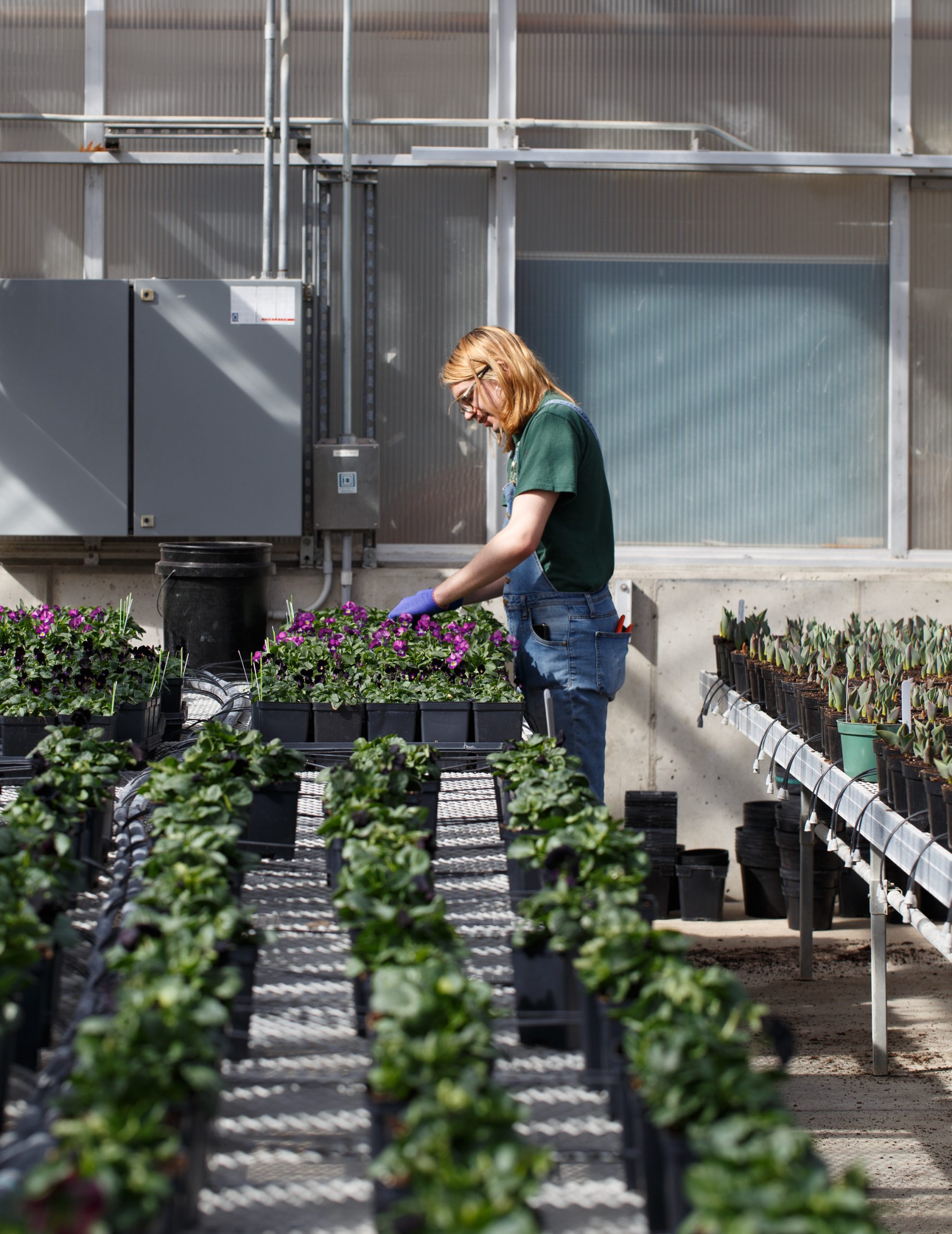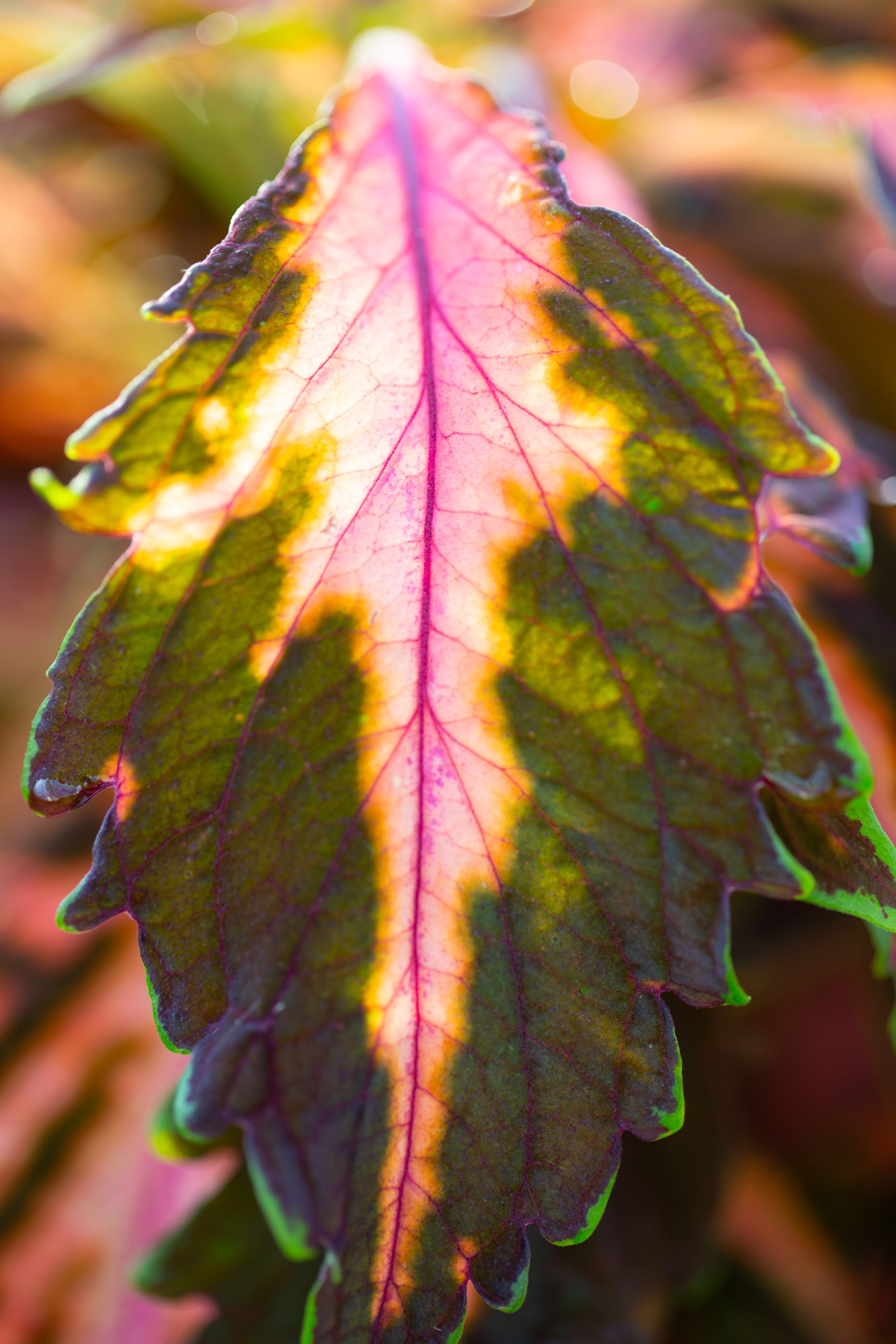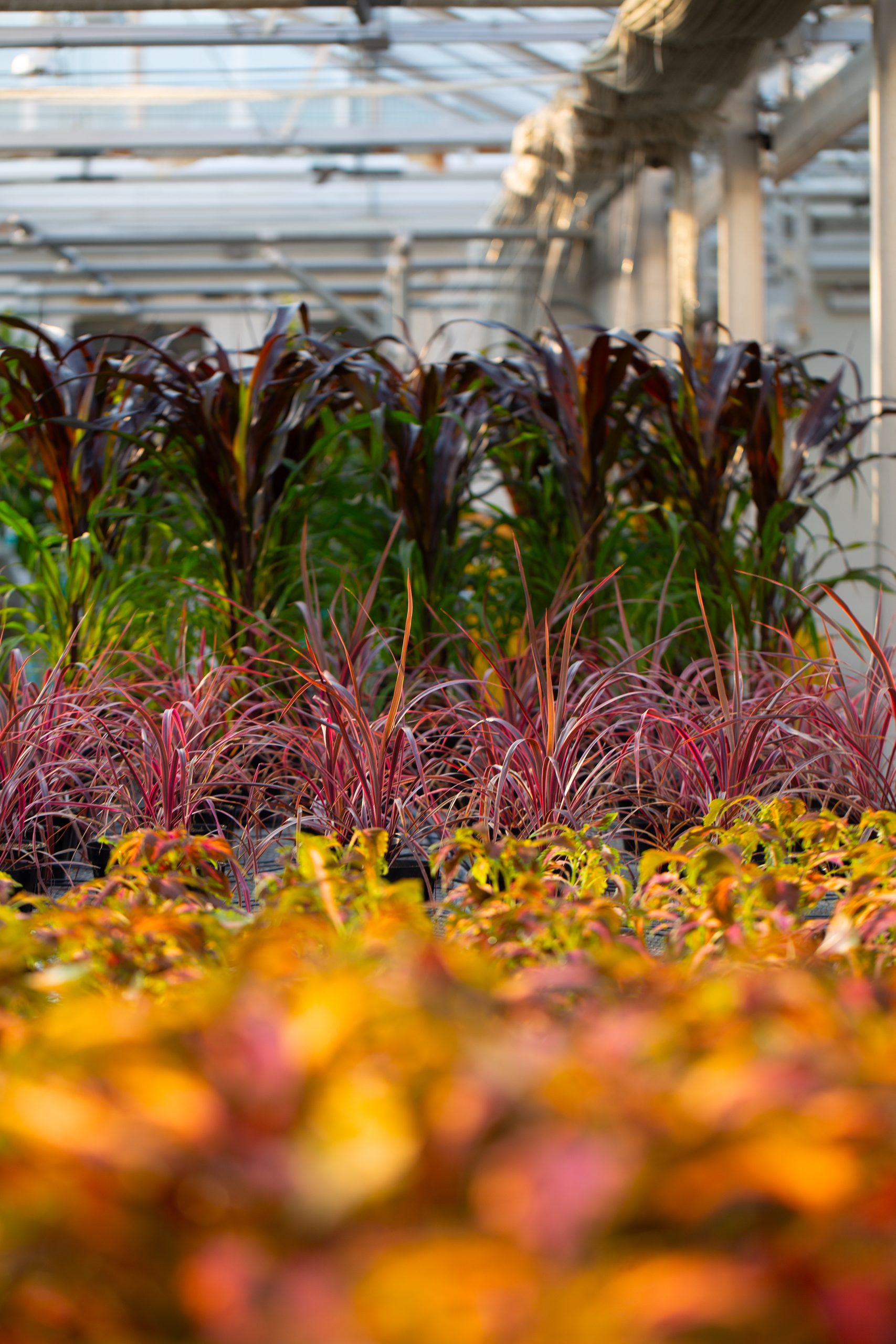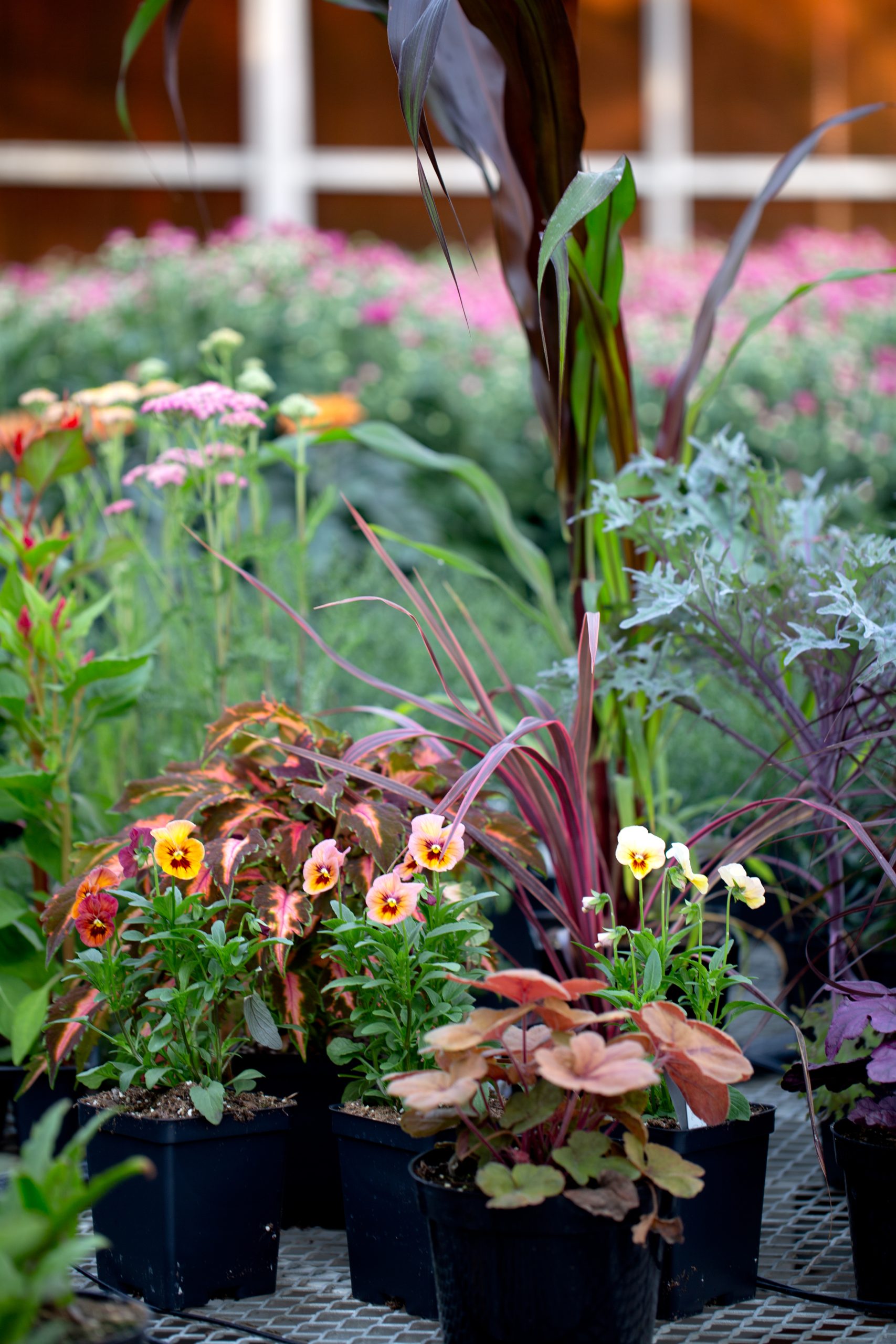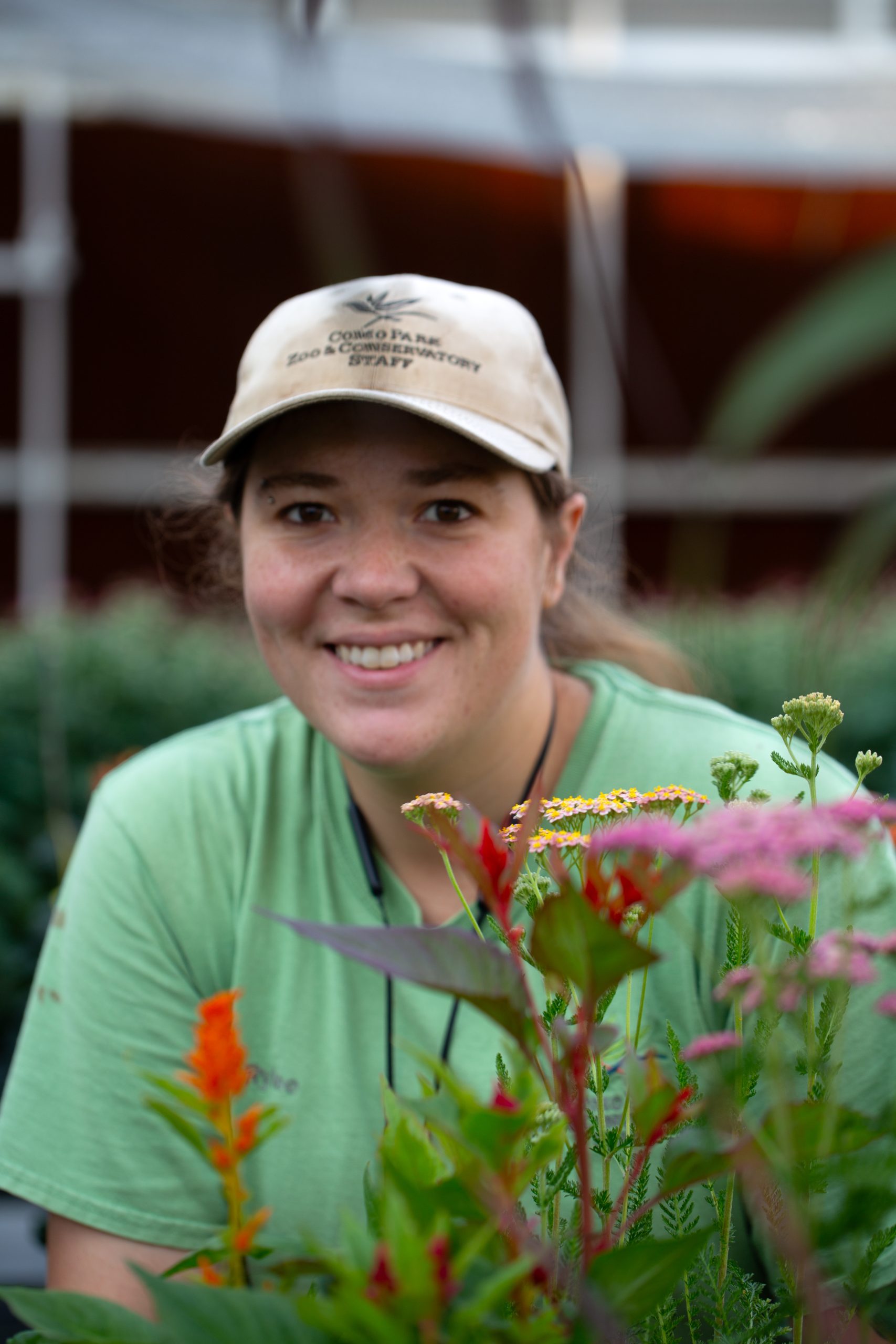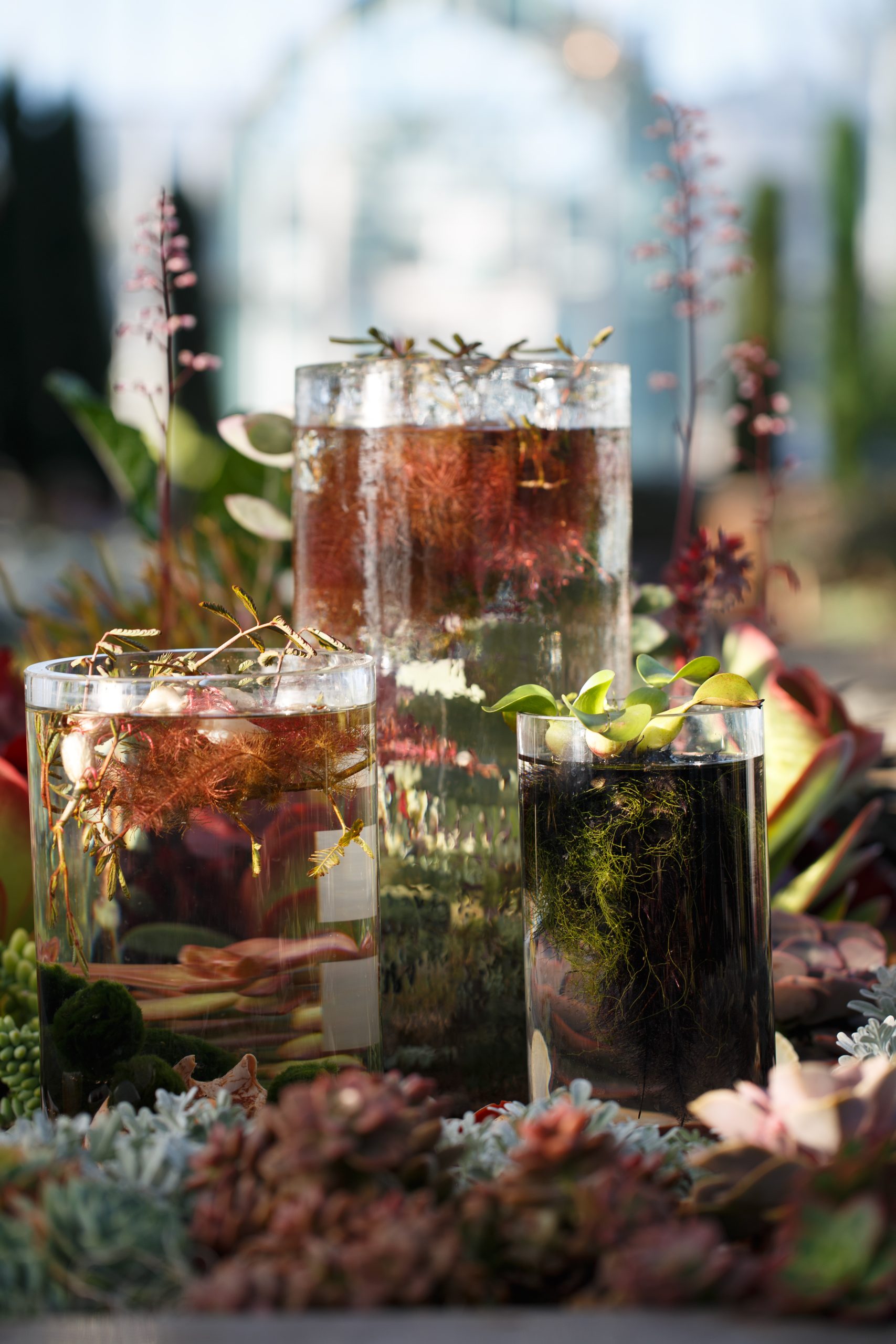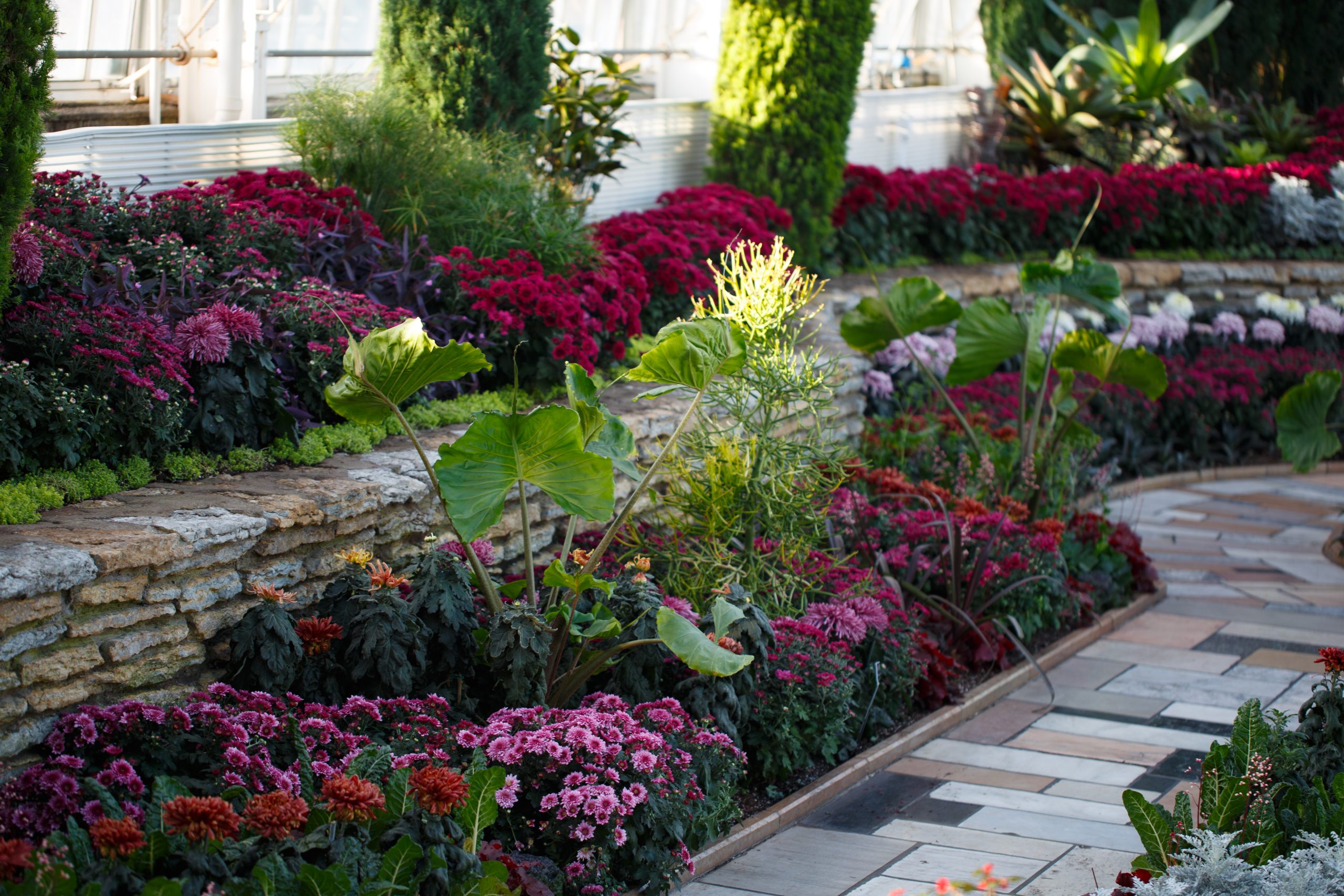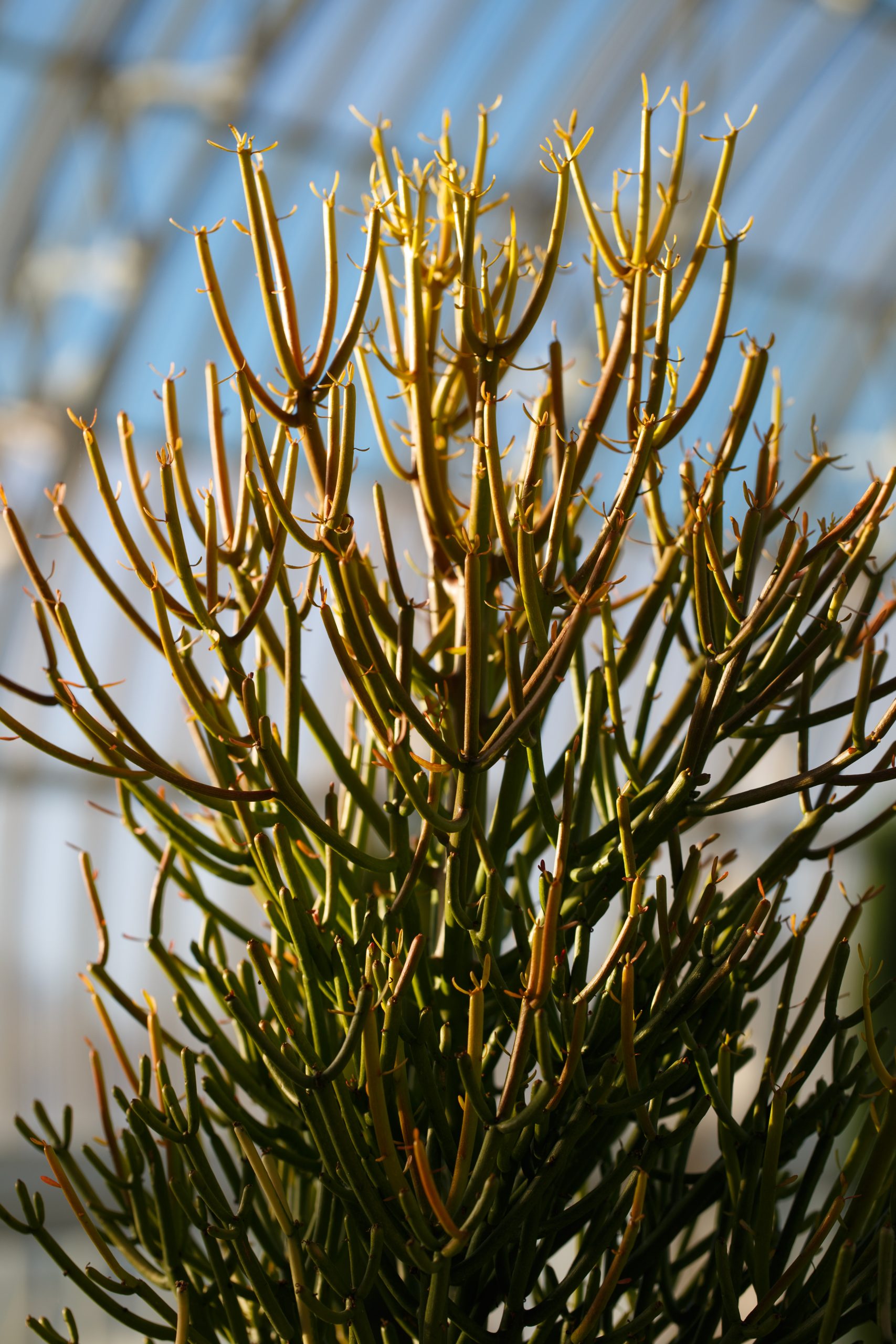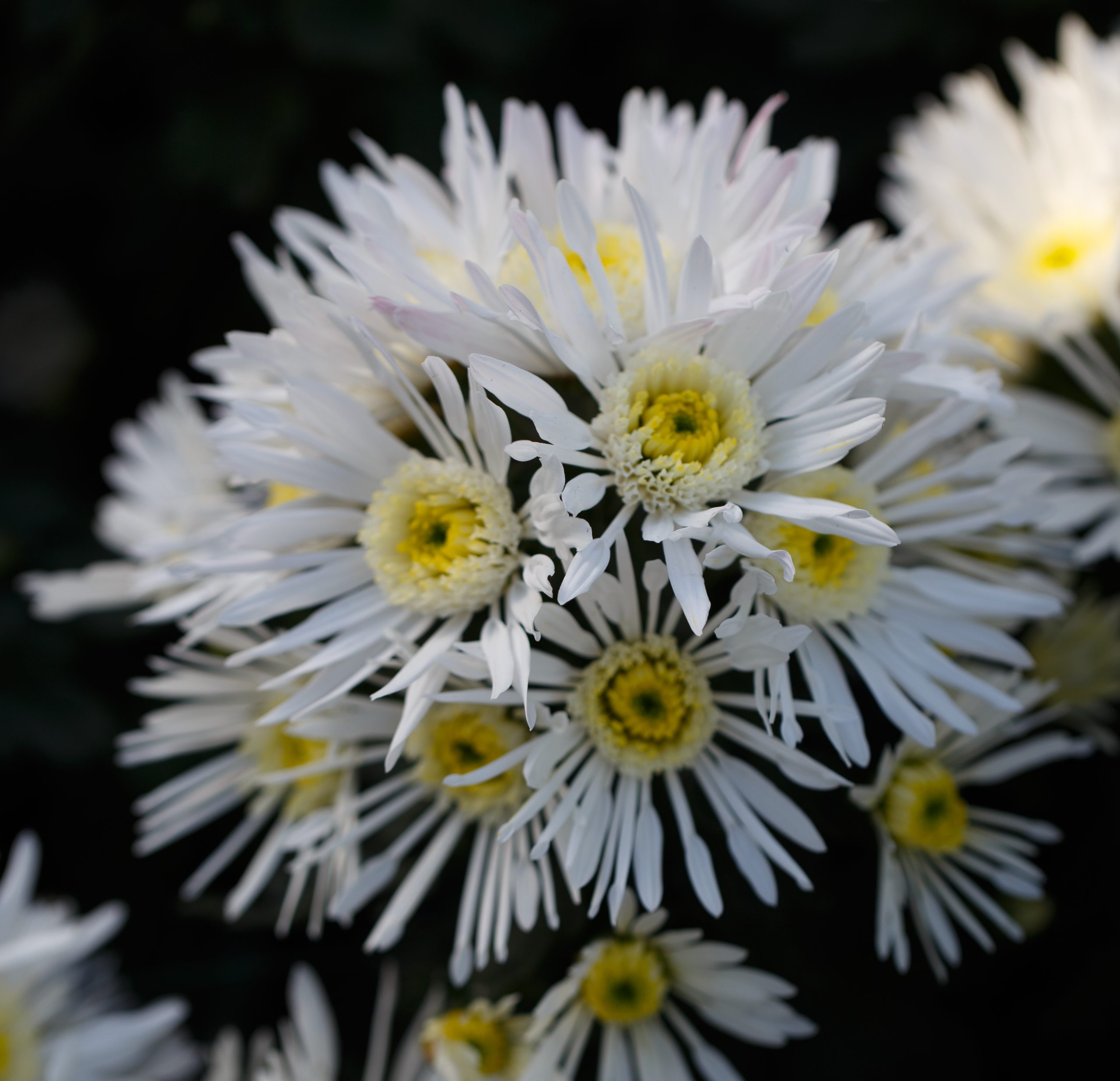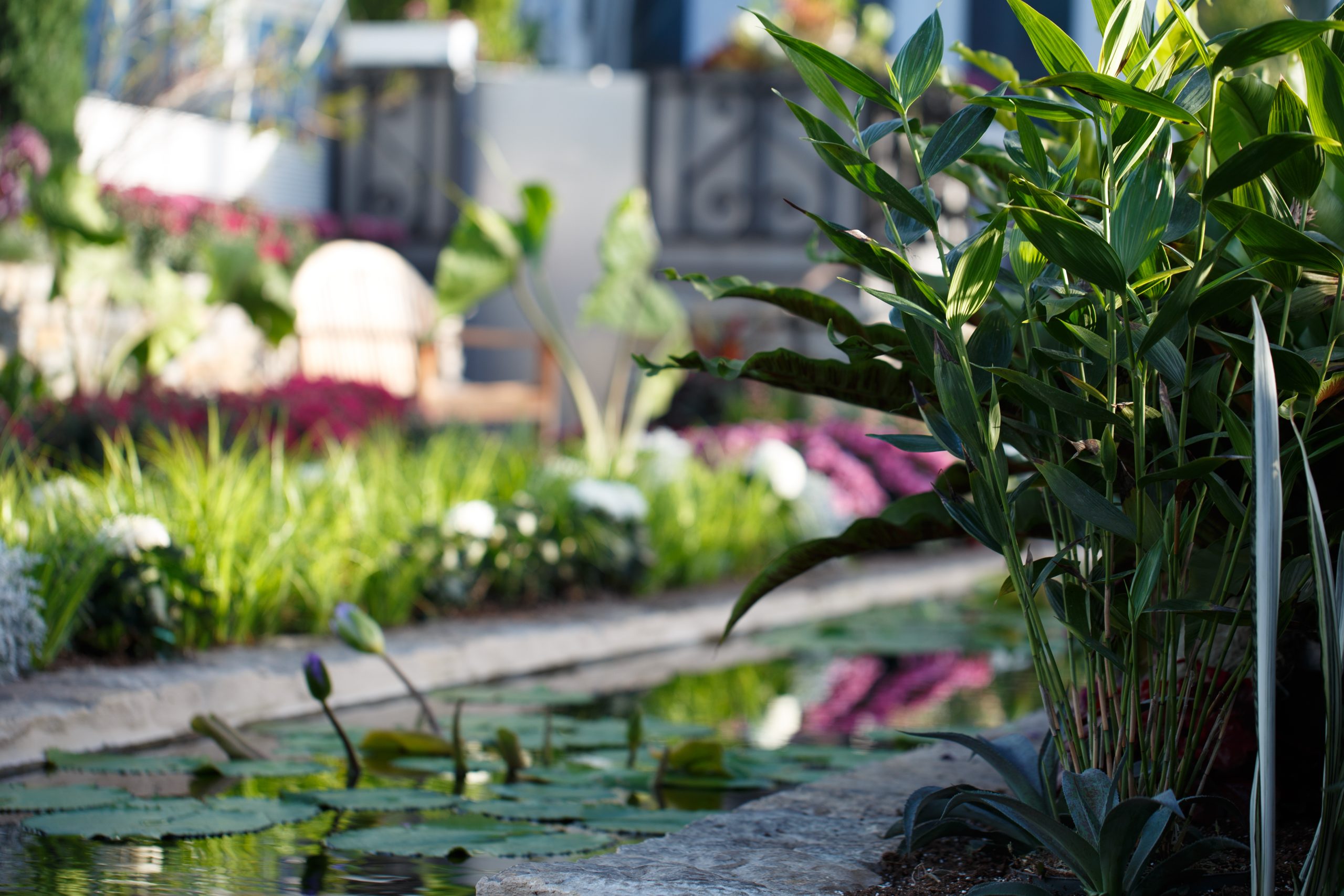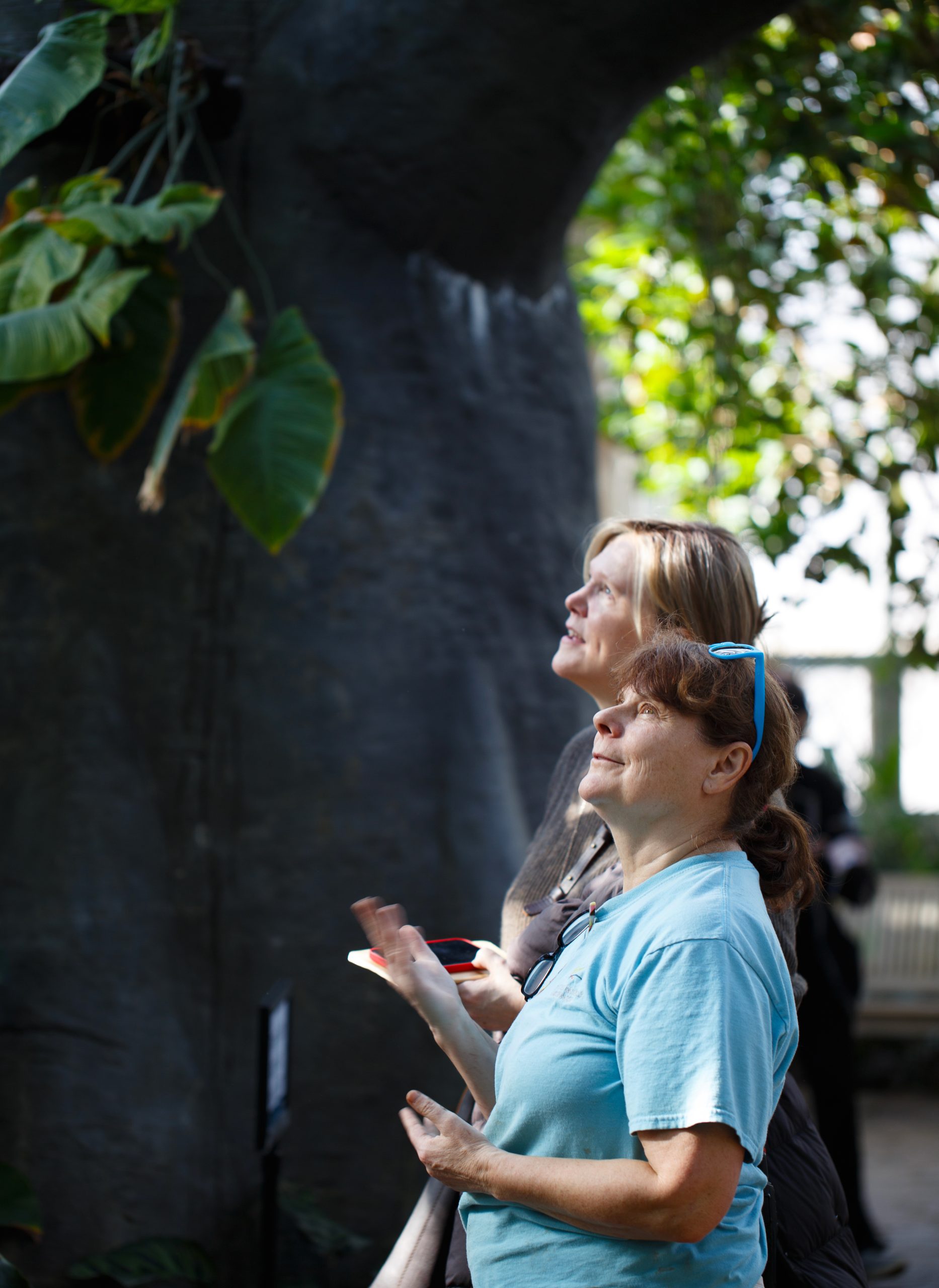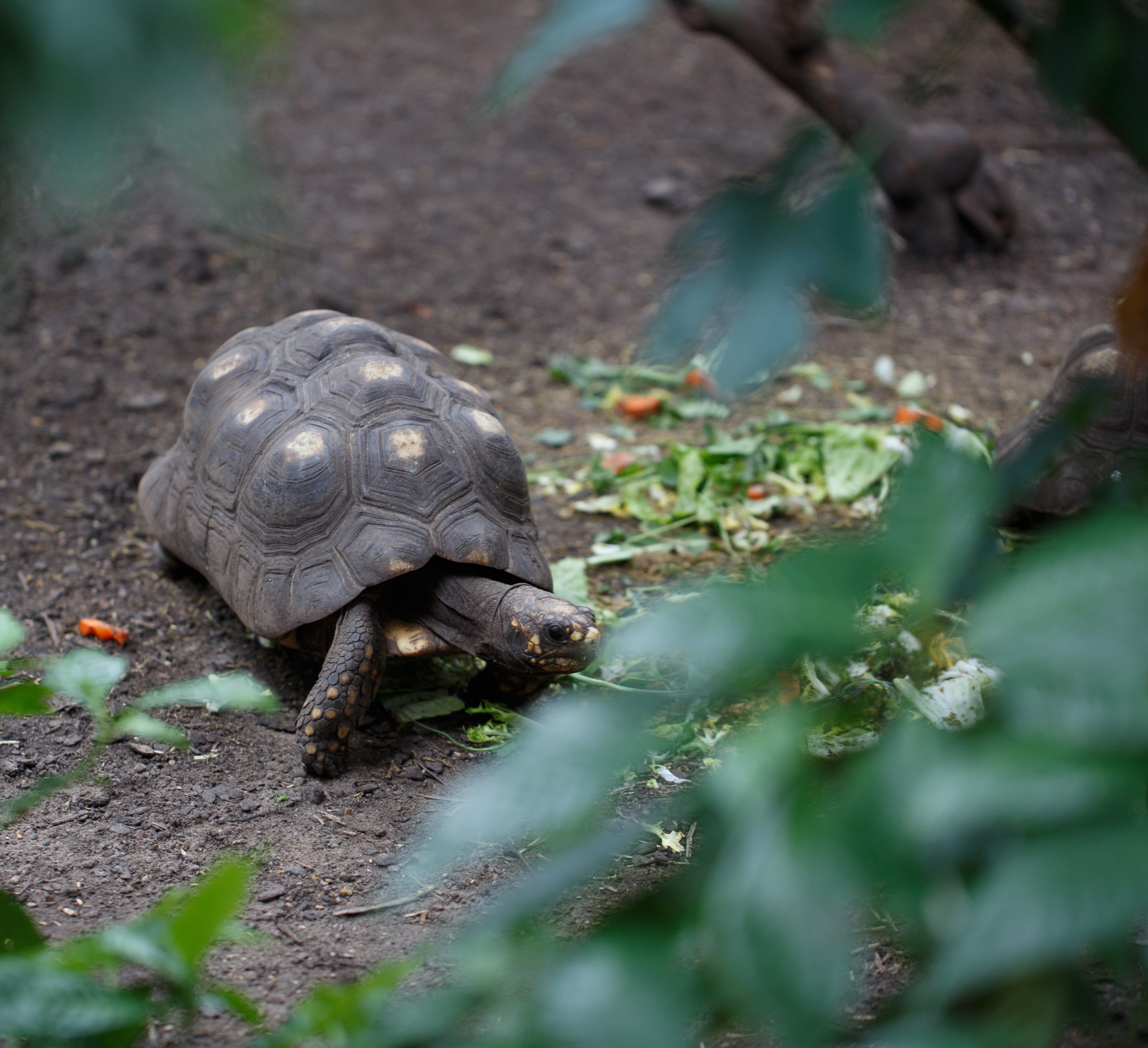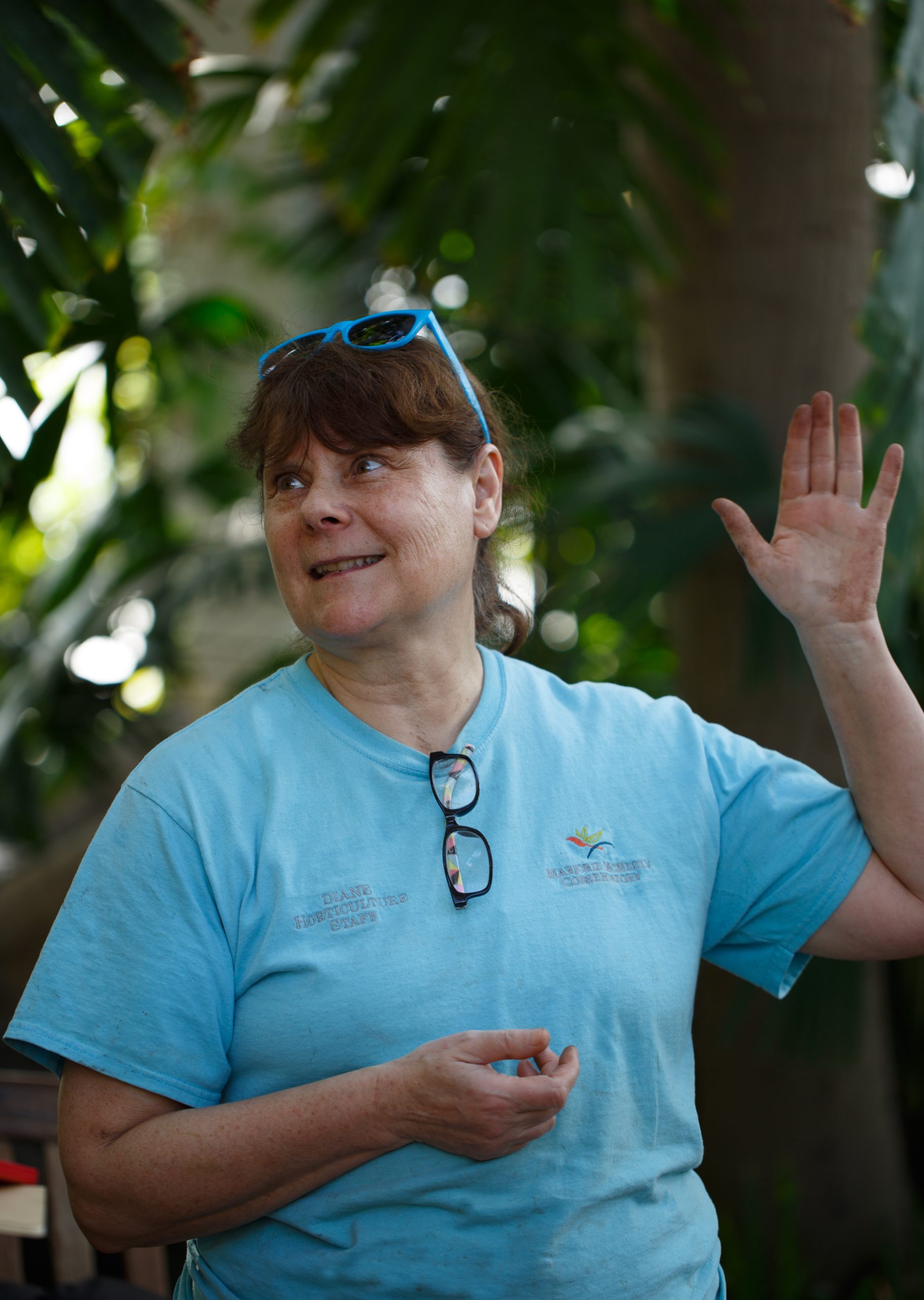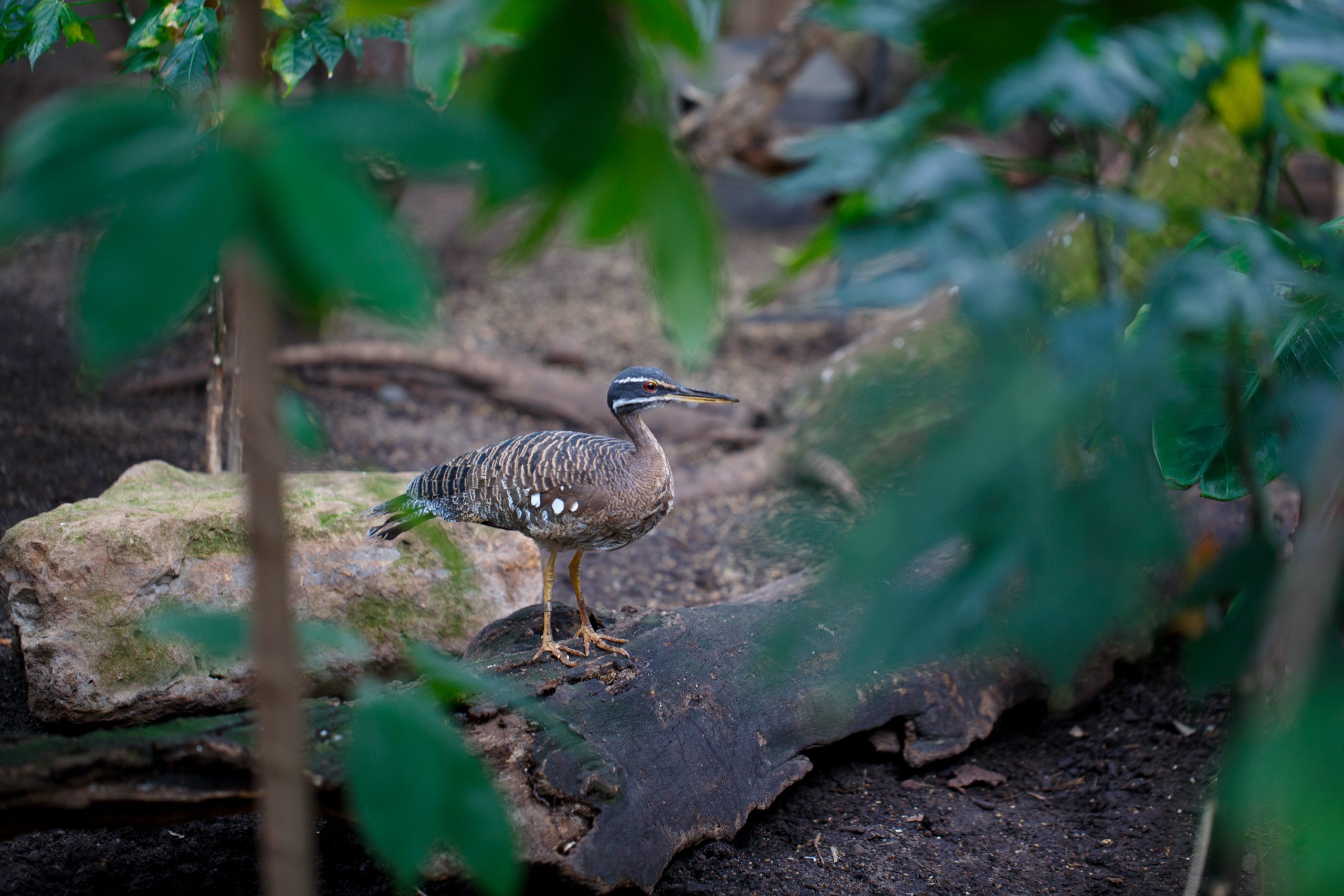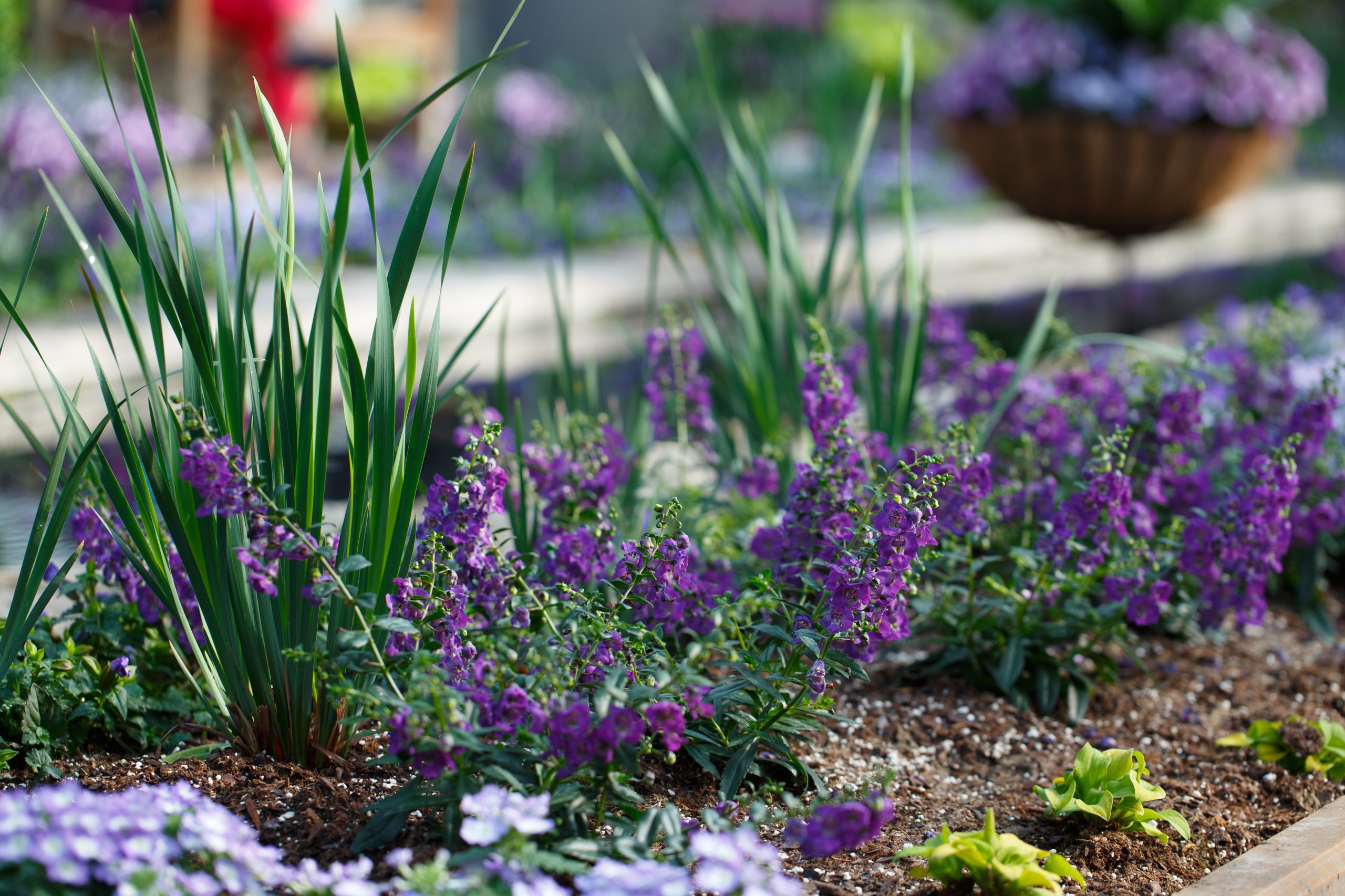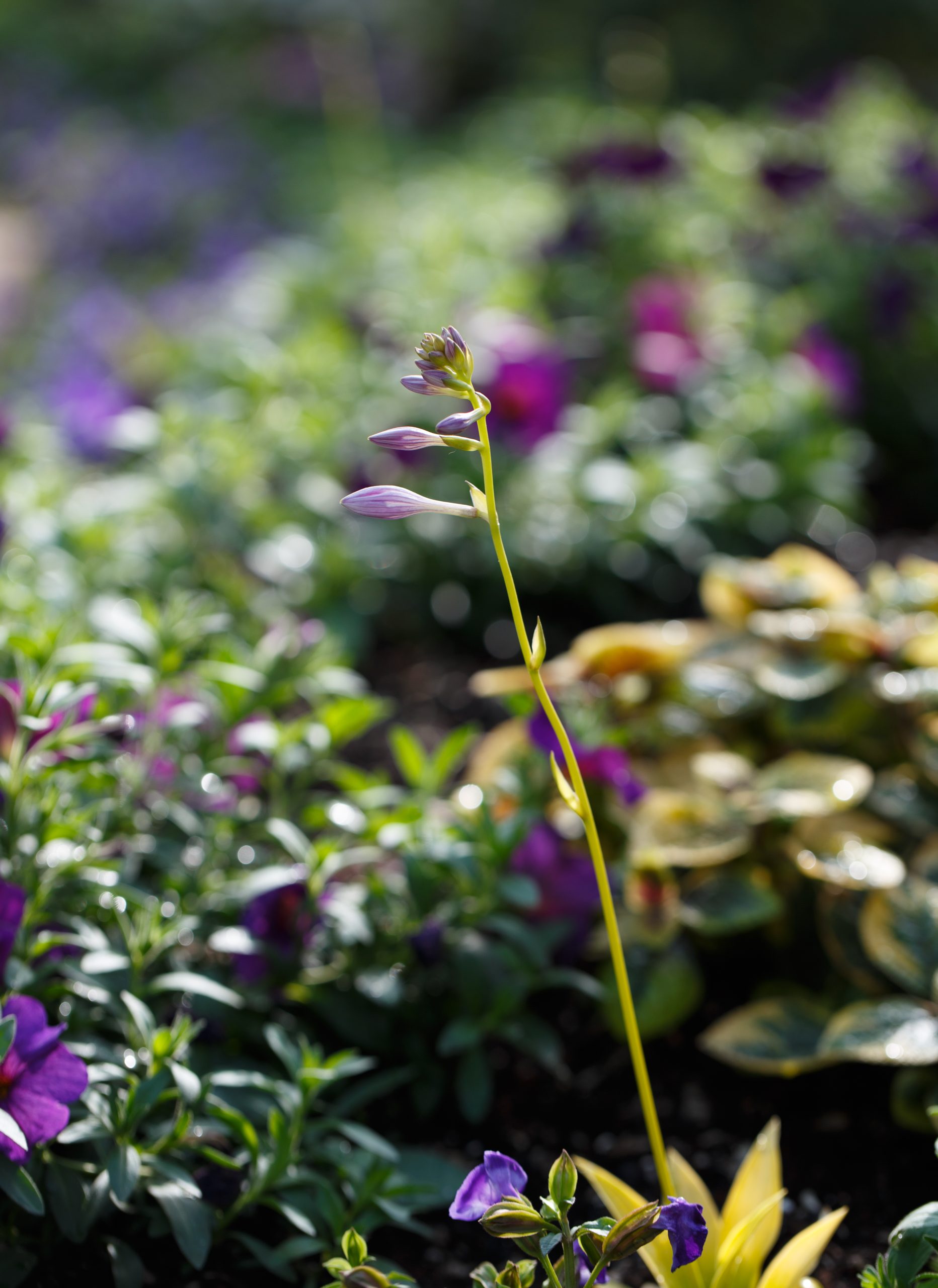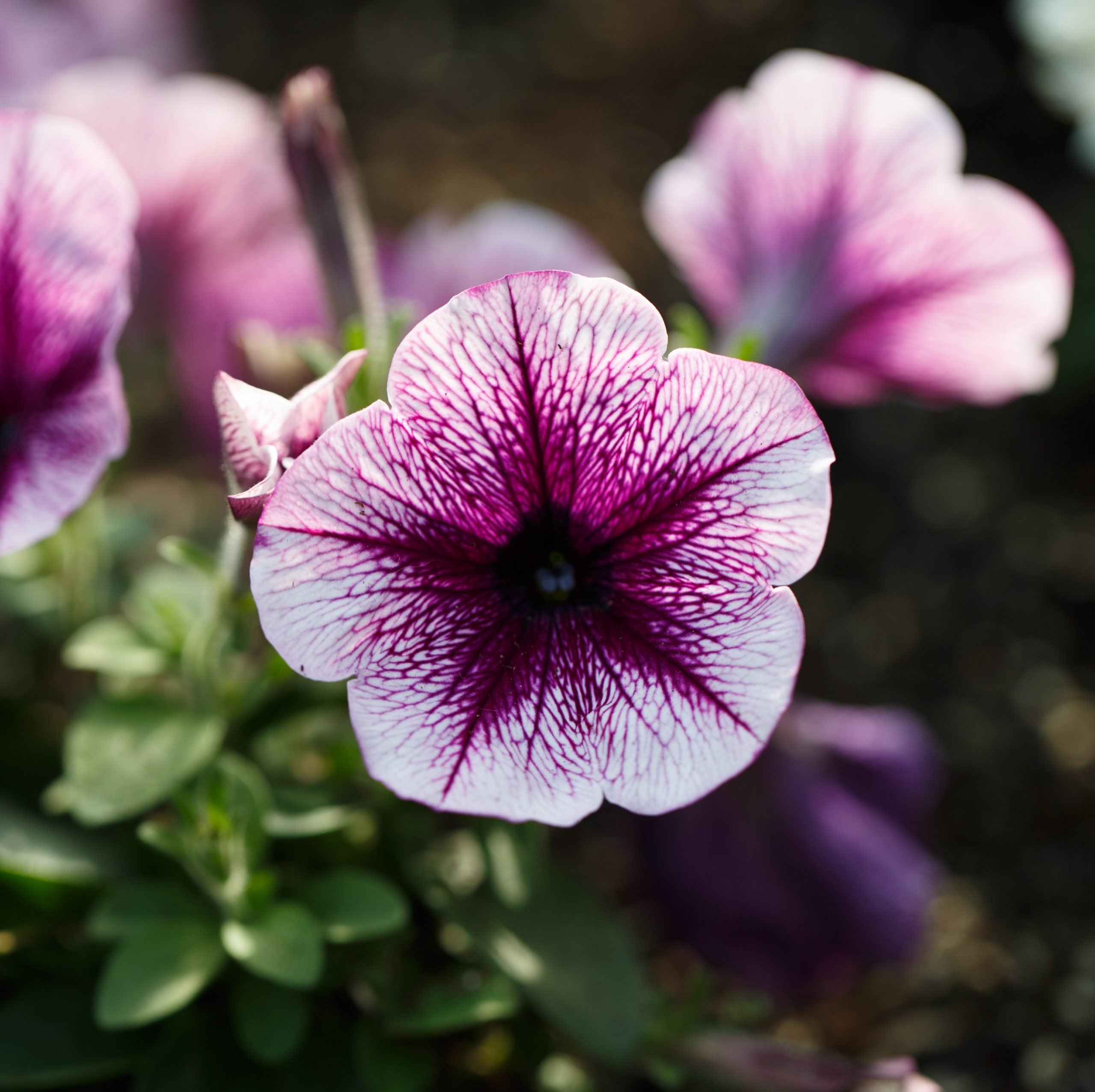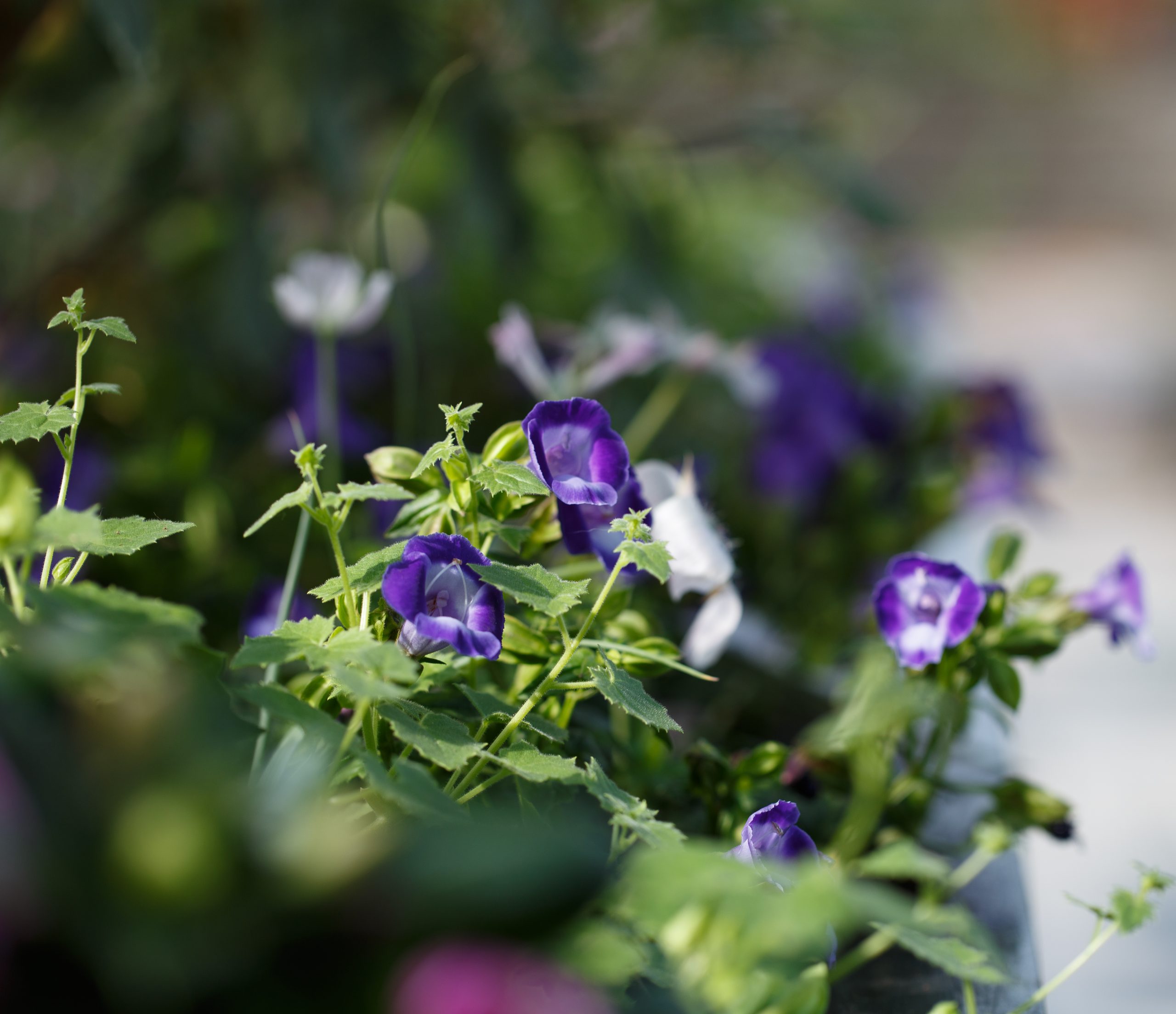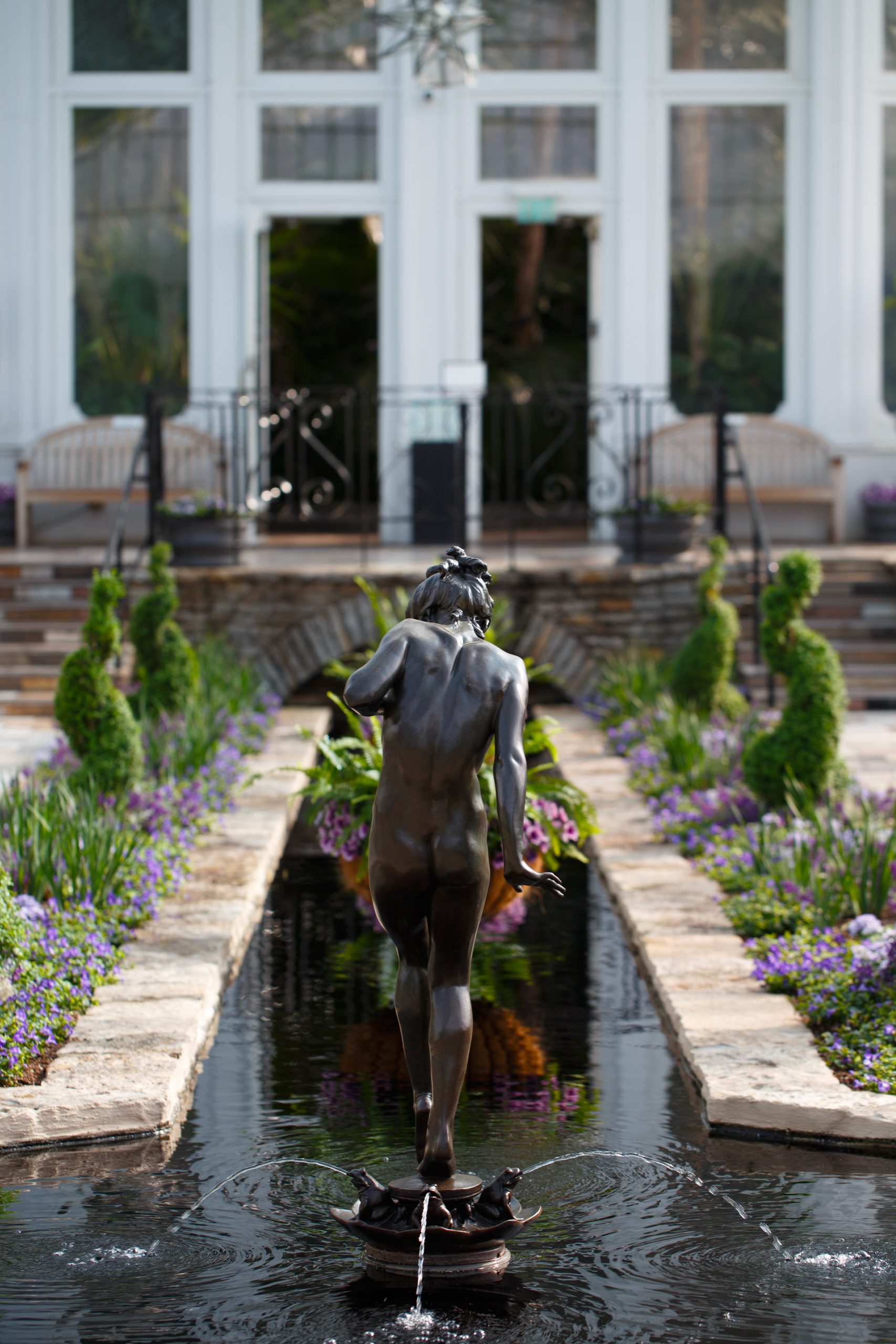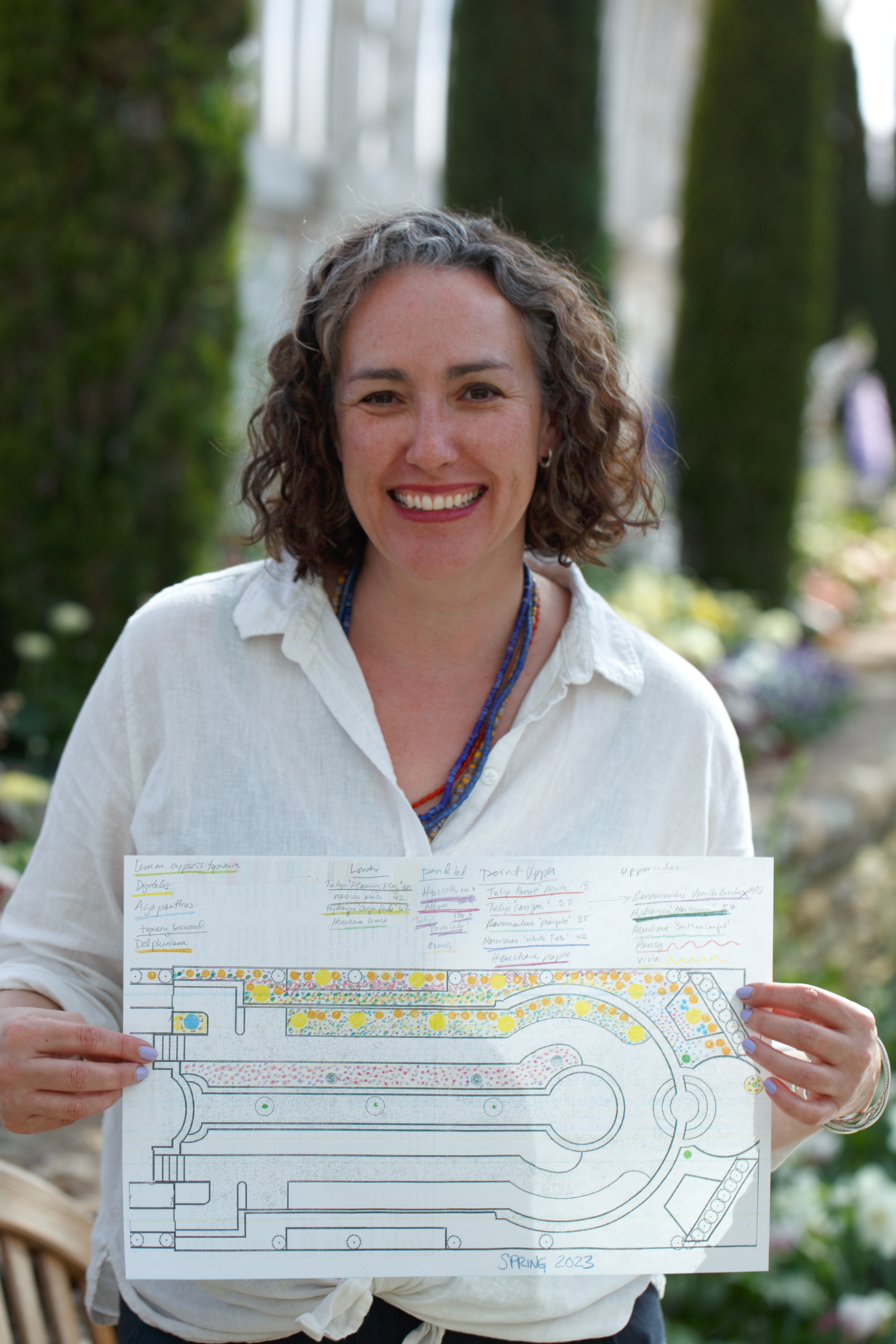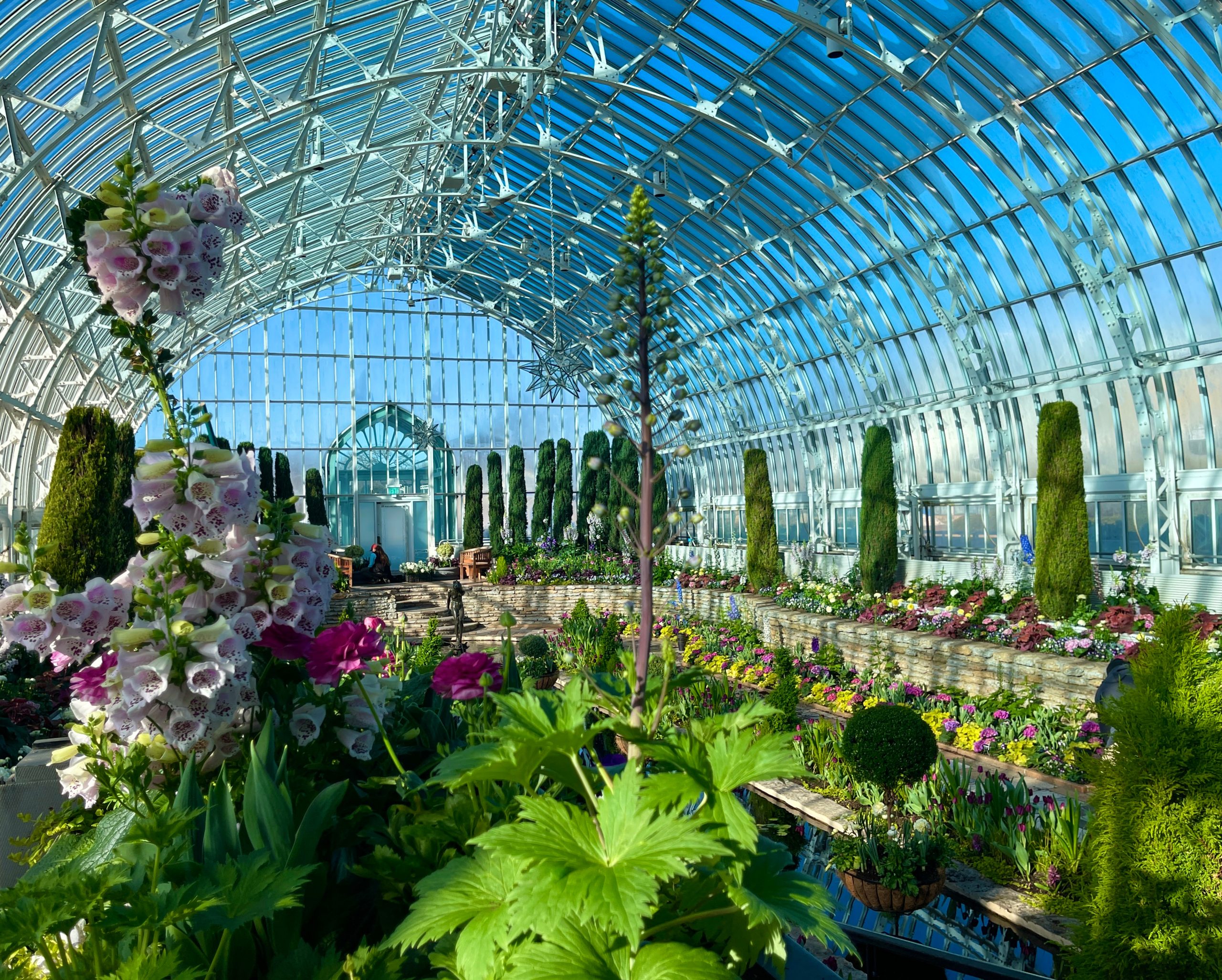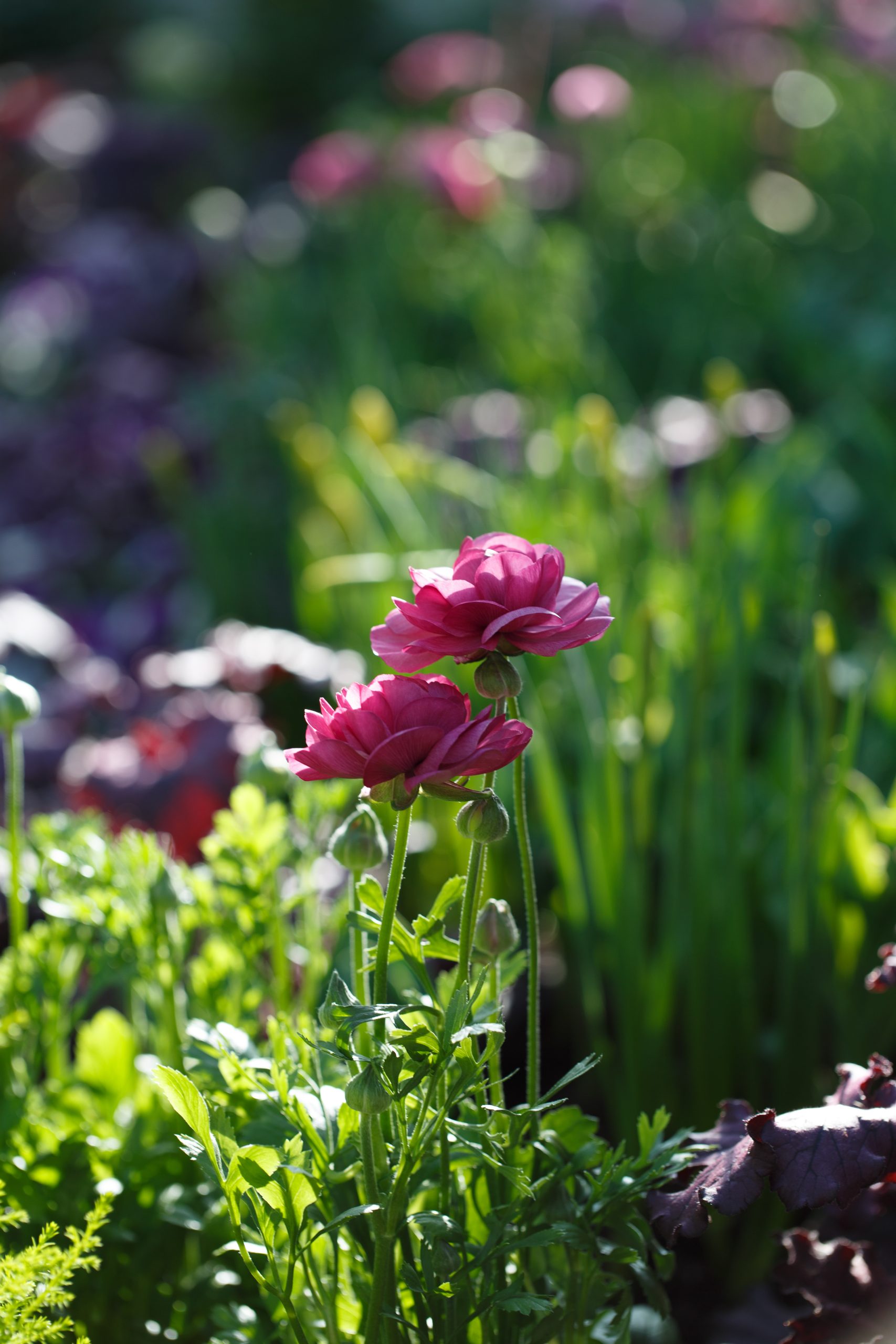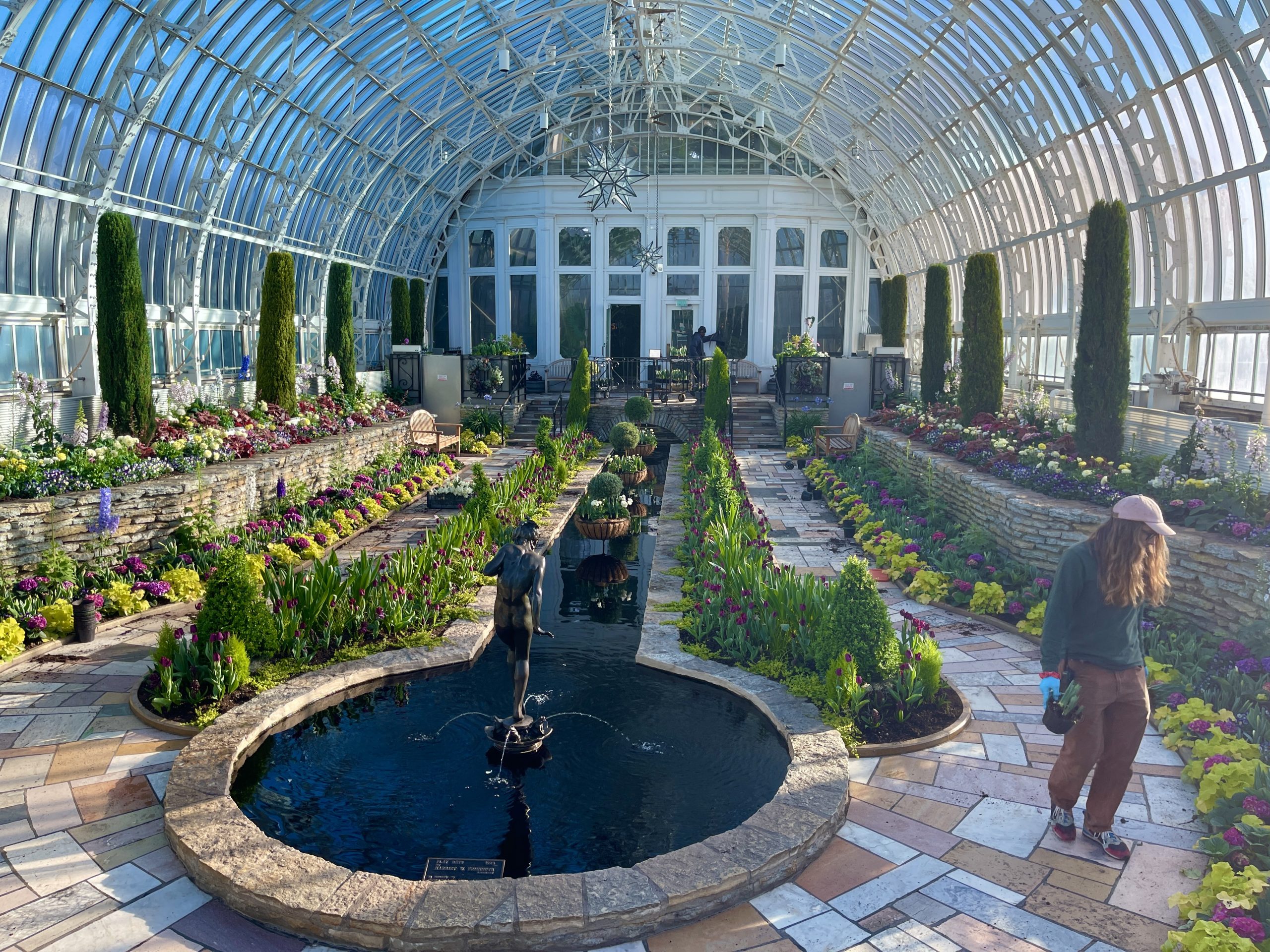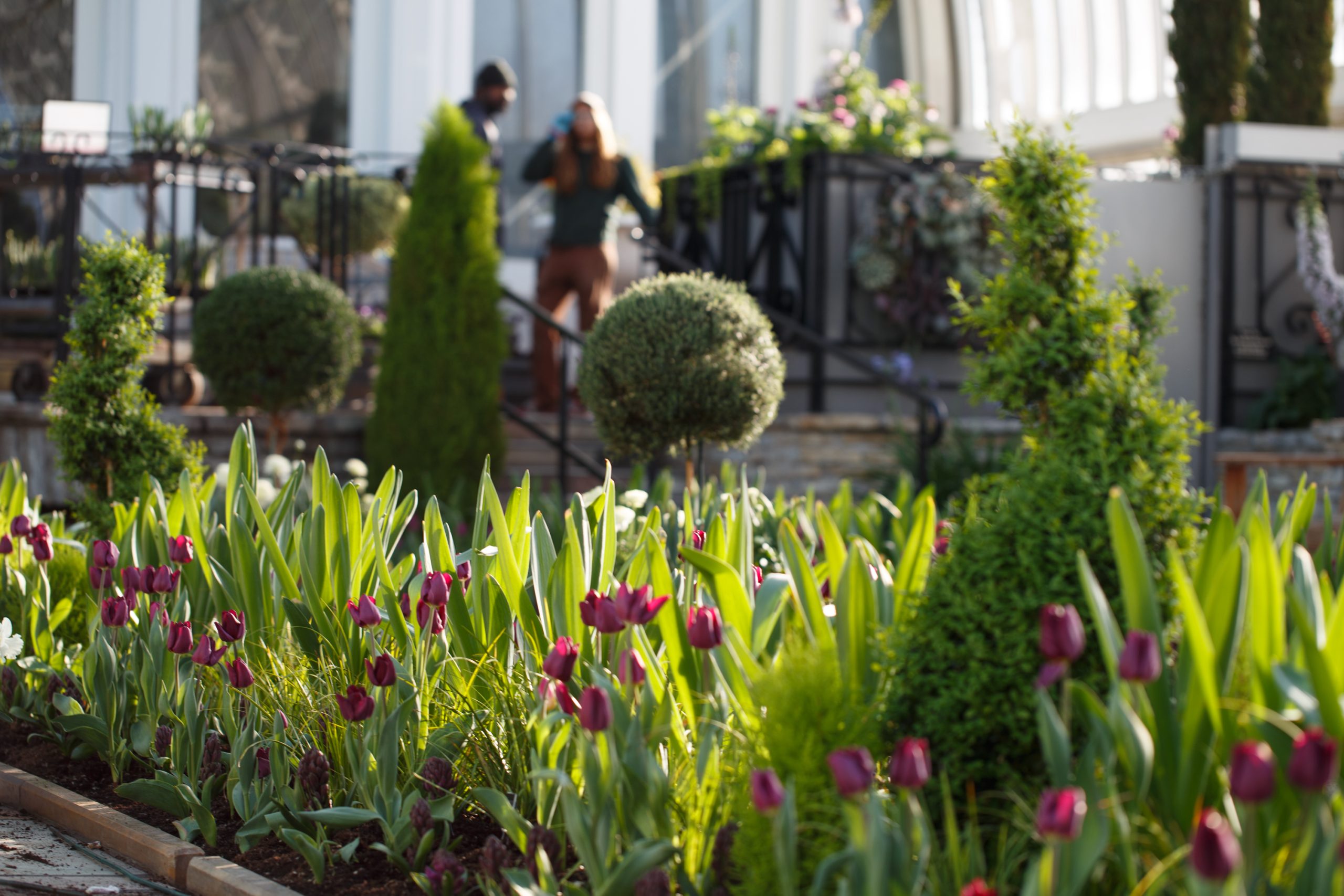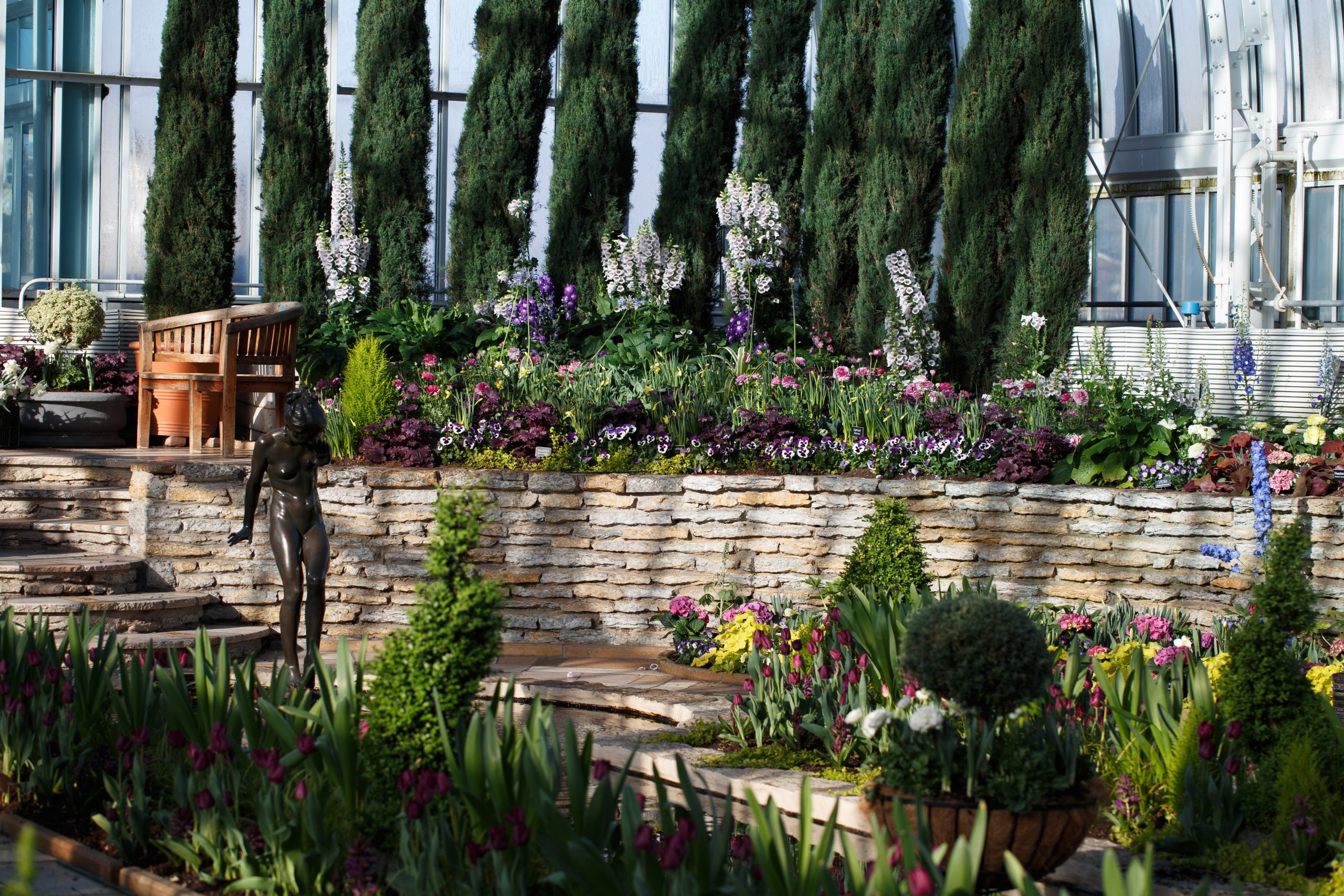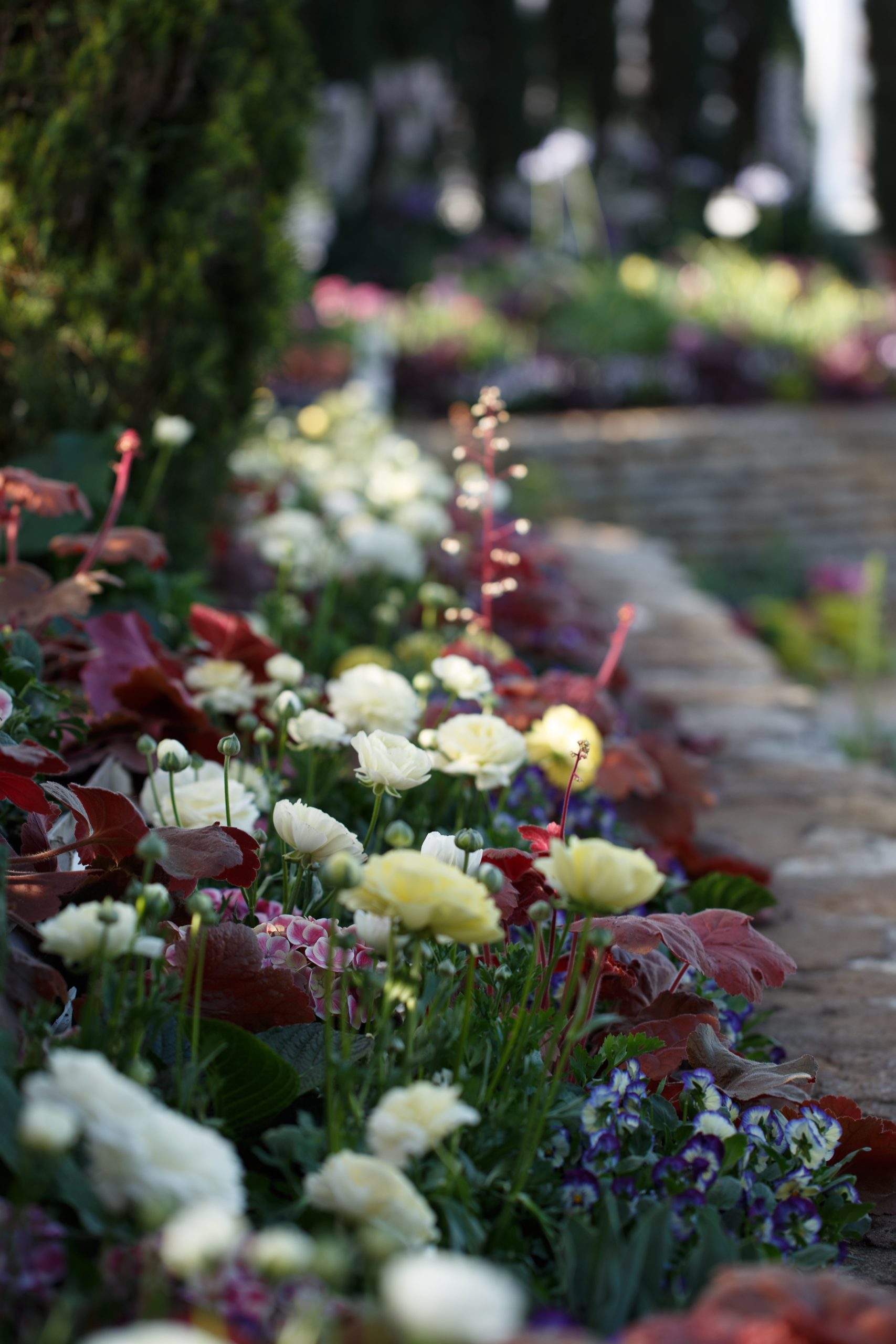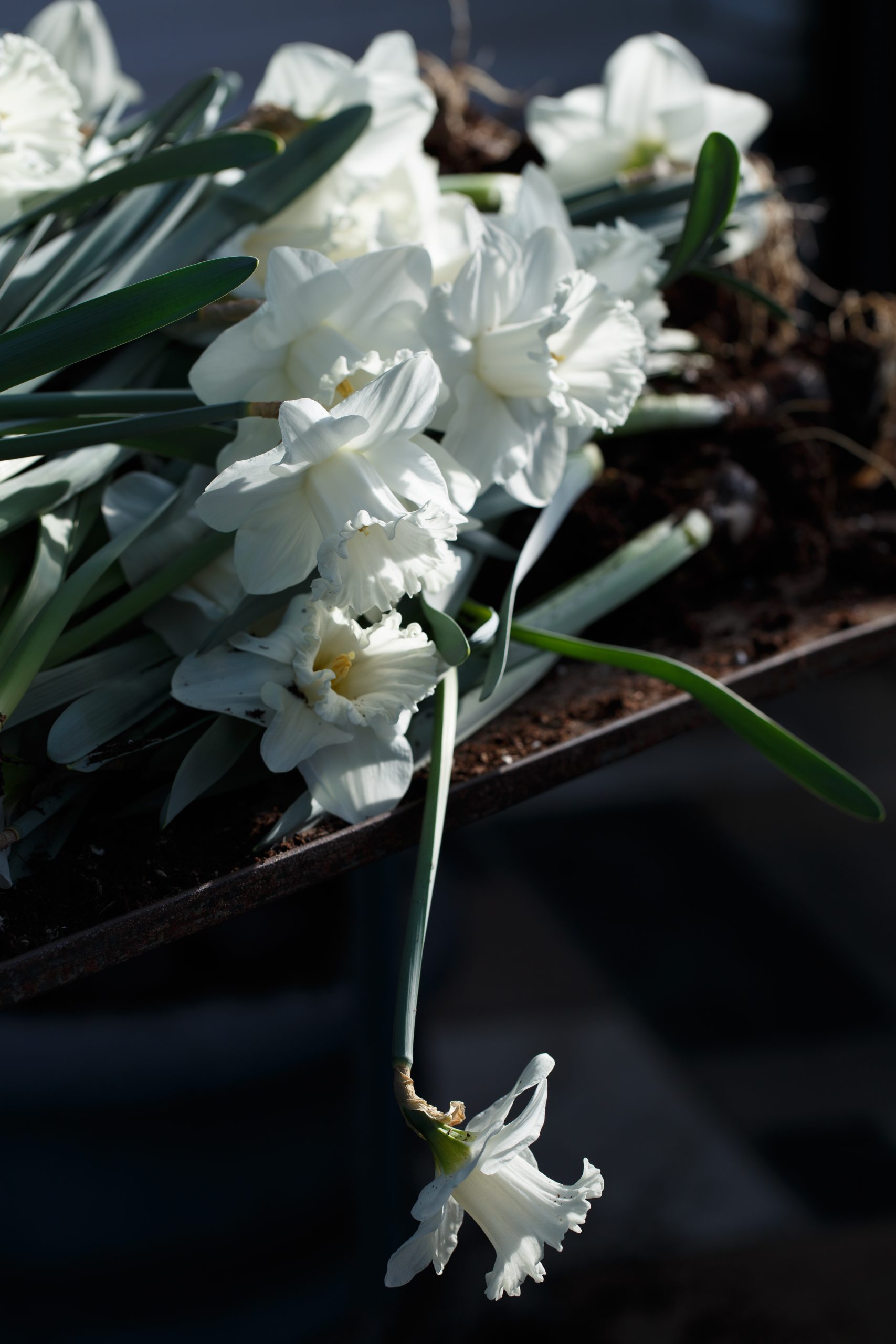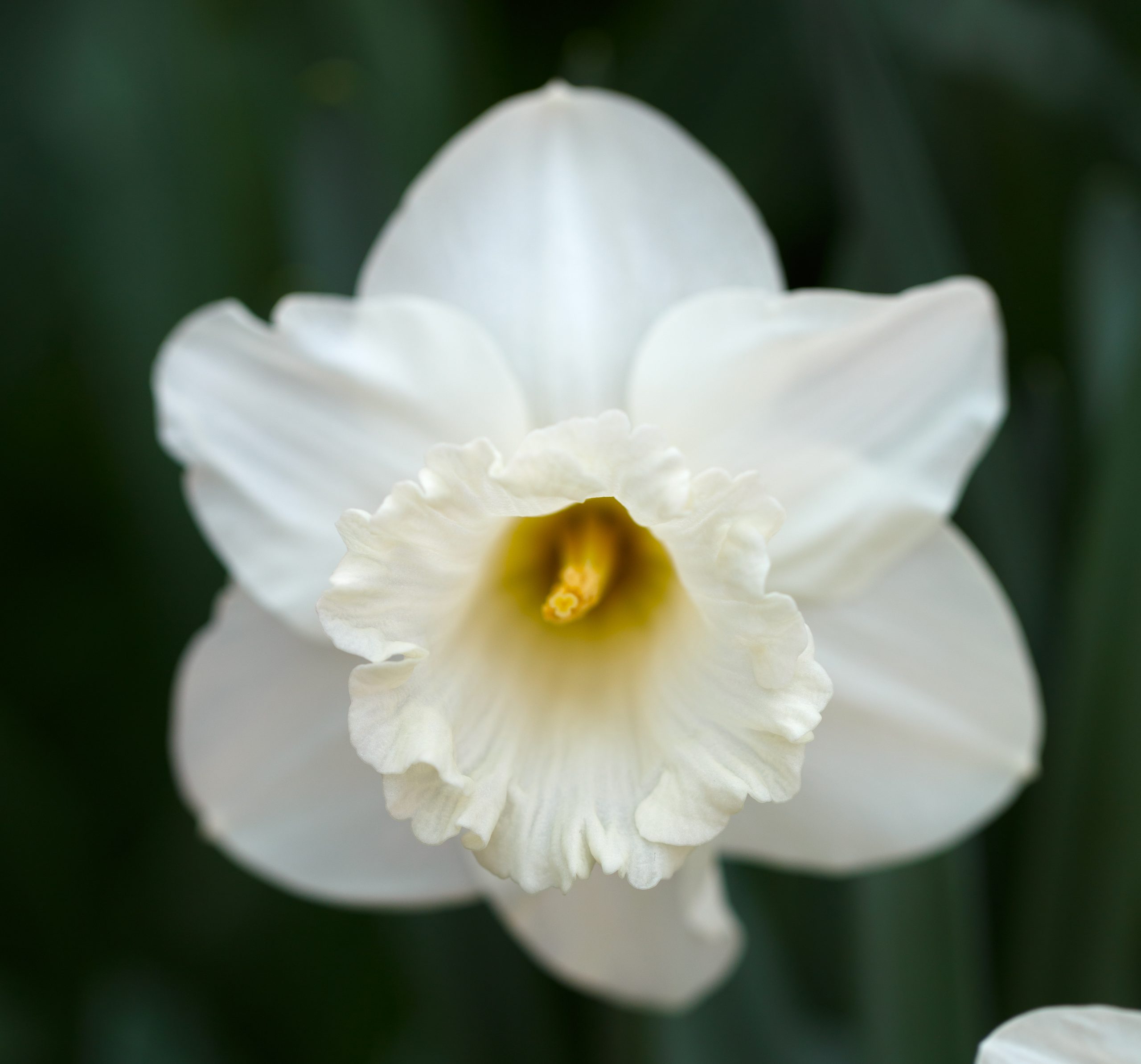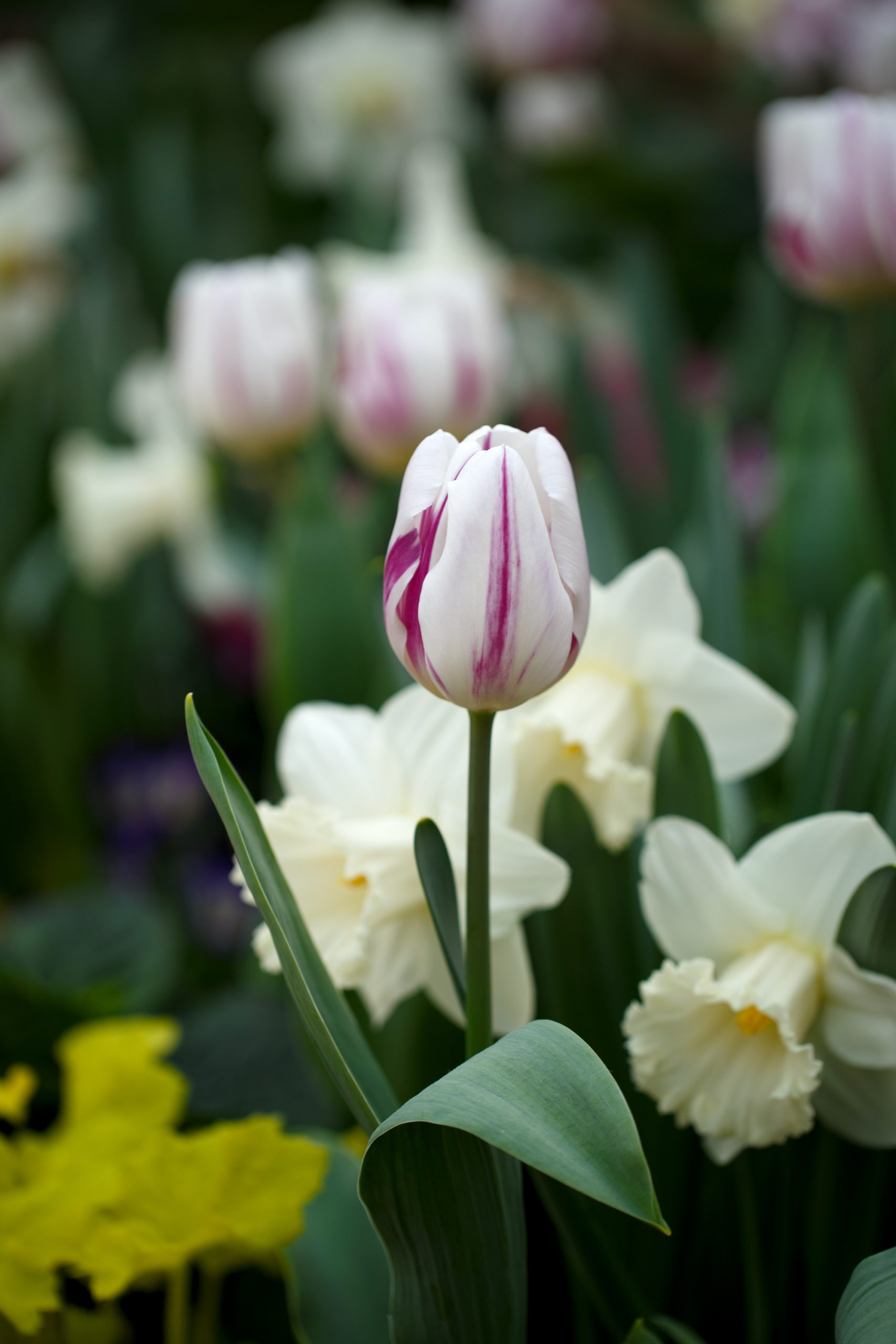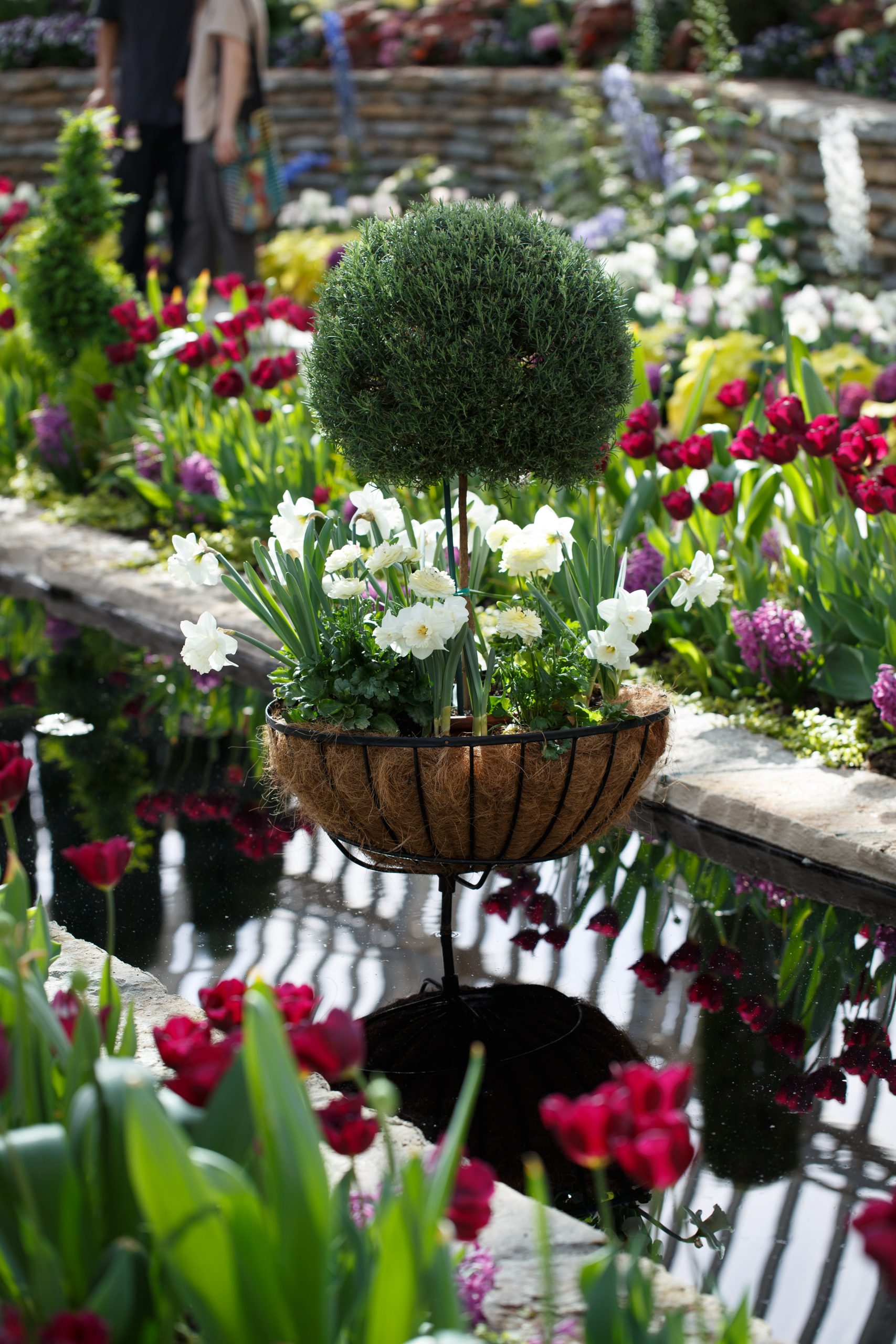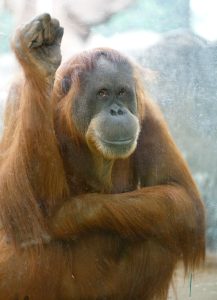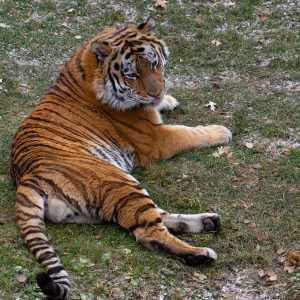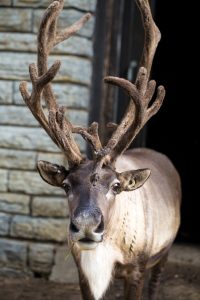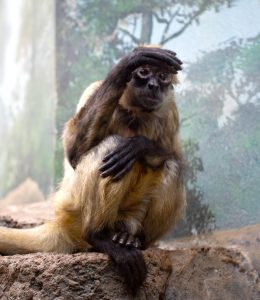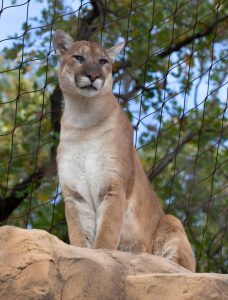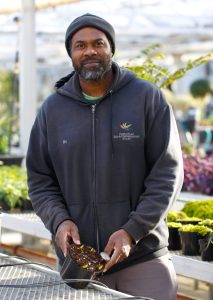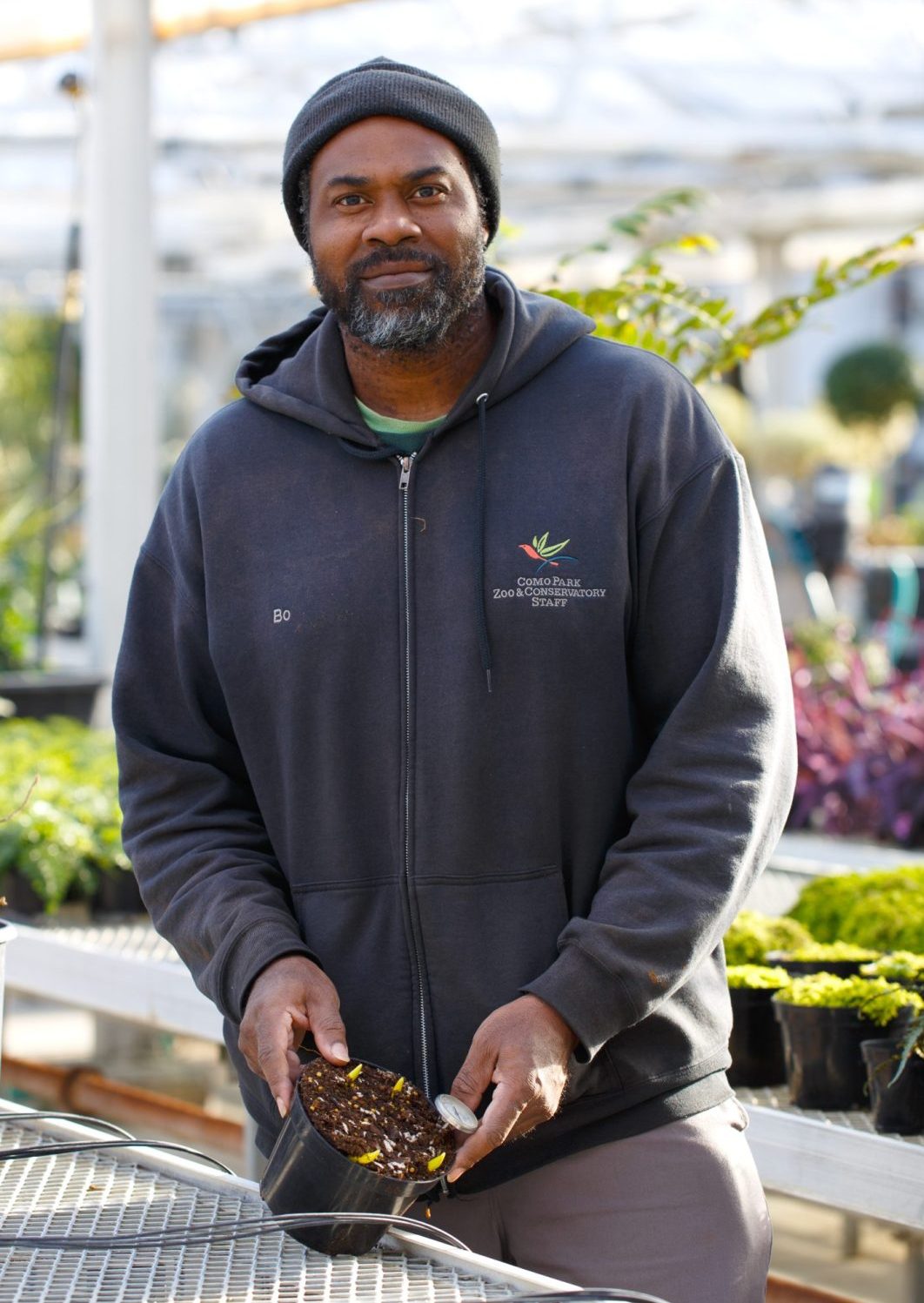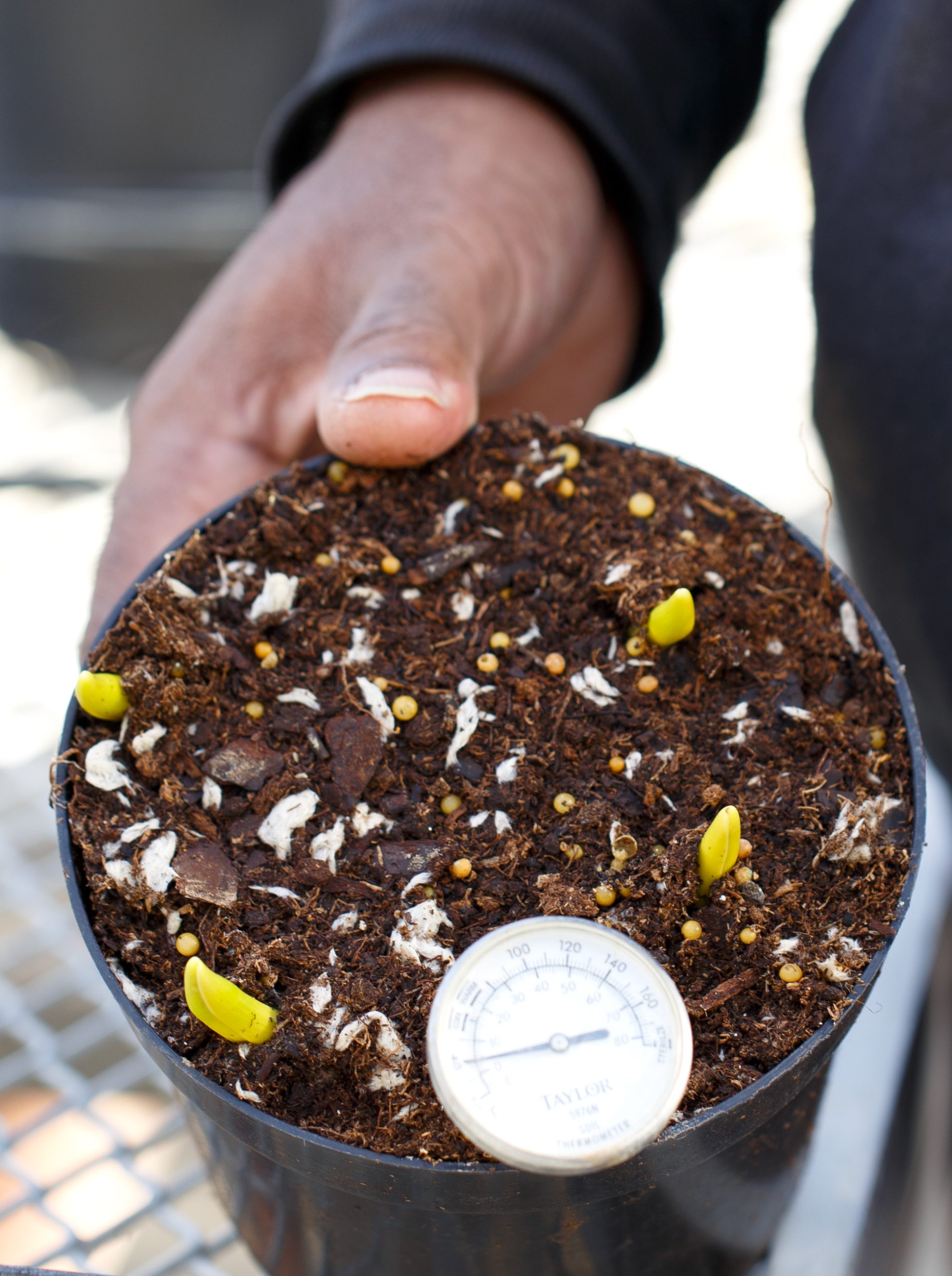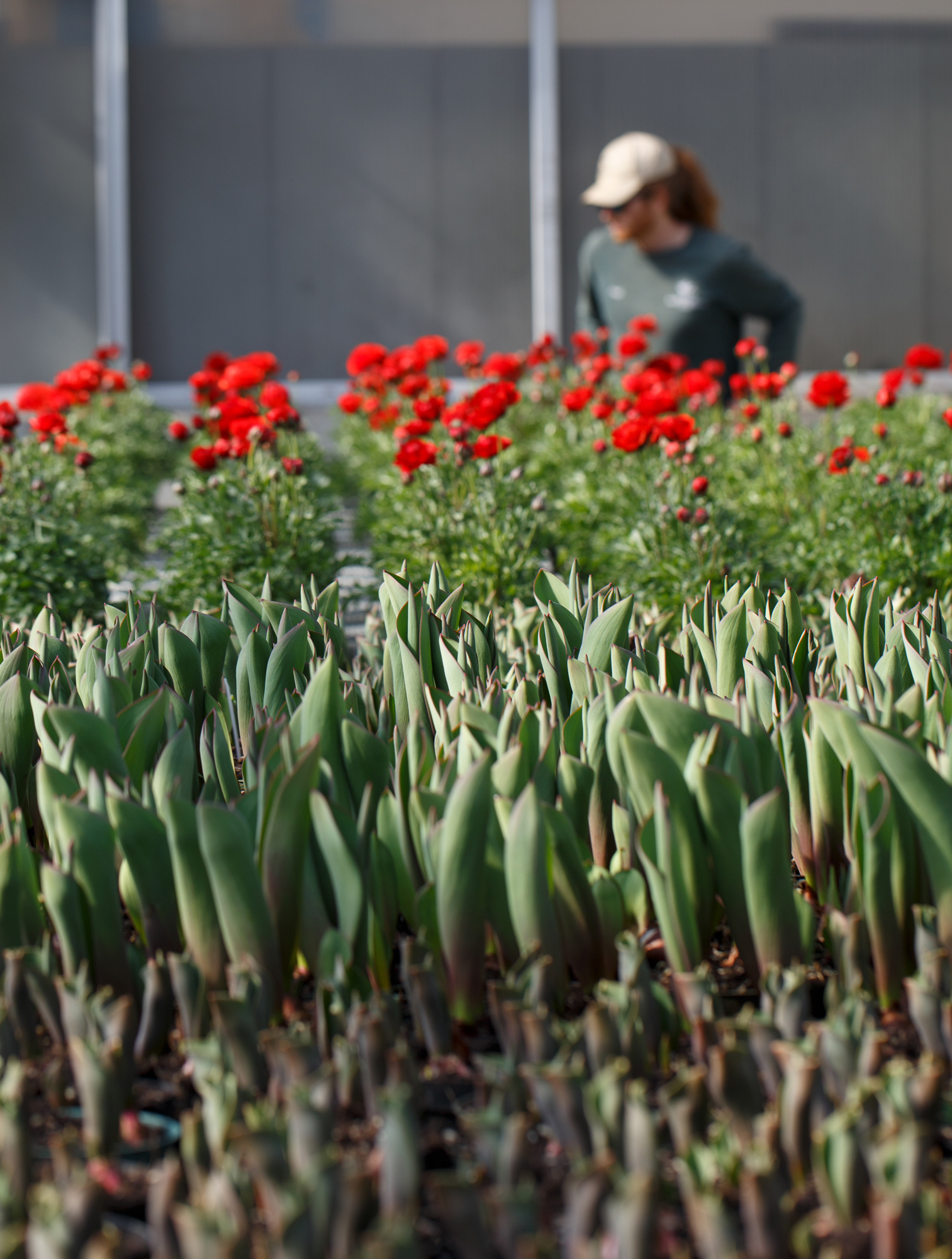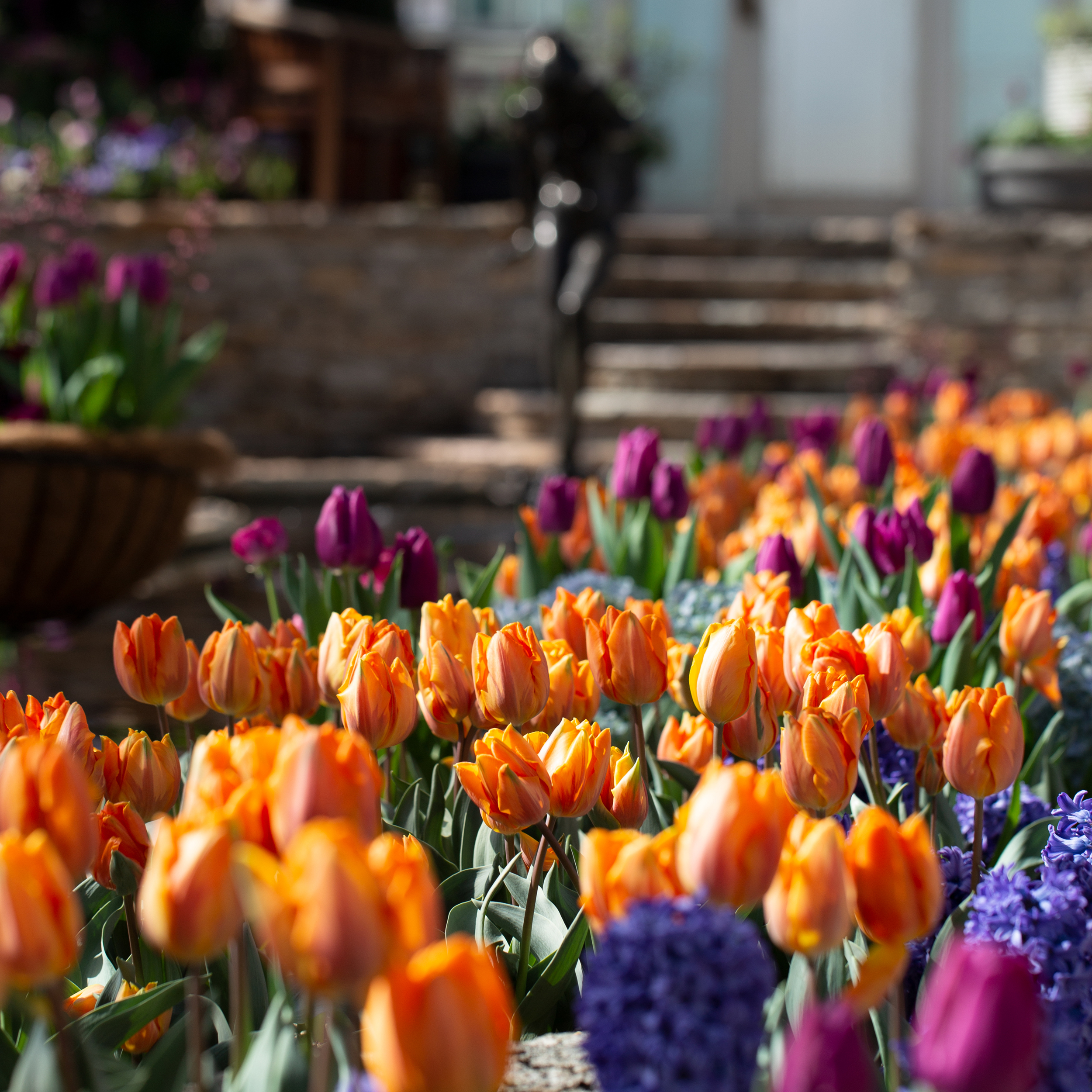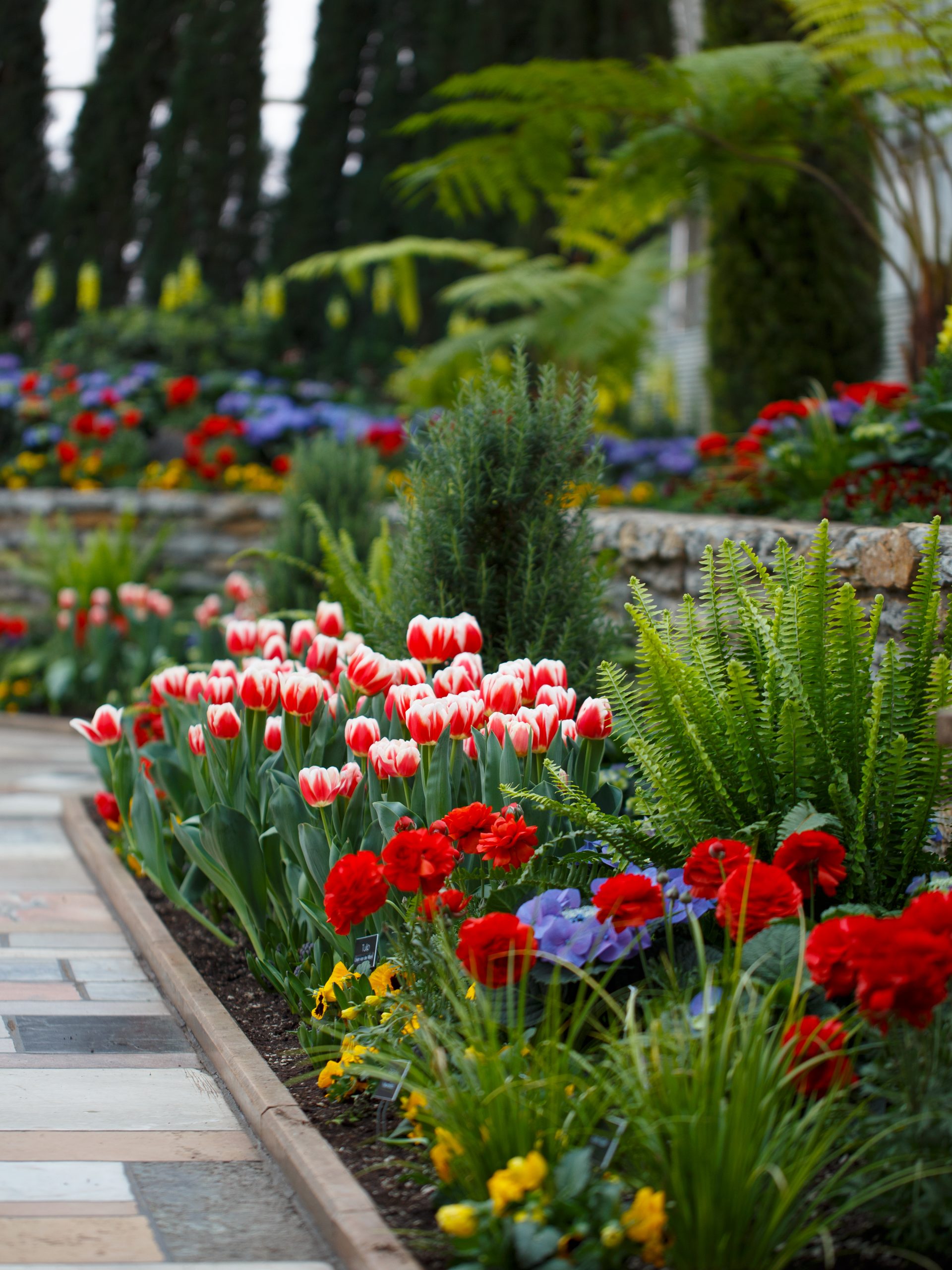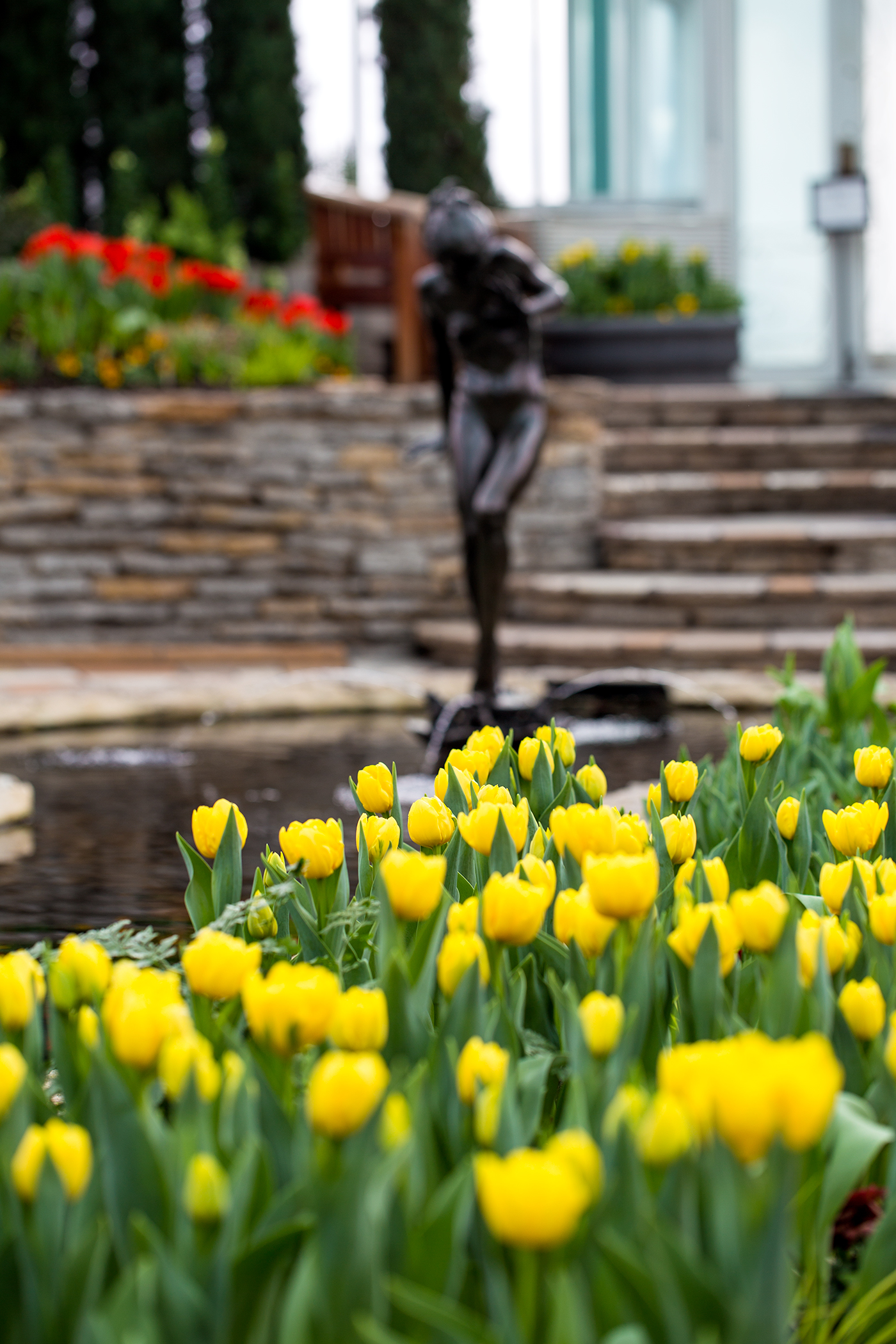Claude Monet’s gardens at Giverny inspired this season’s Part 1 Spring Flower Show, and Part 2 is dedicated to cool lavender blues
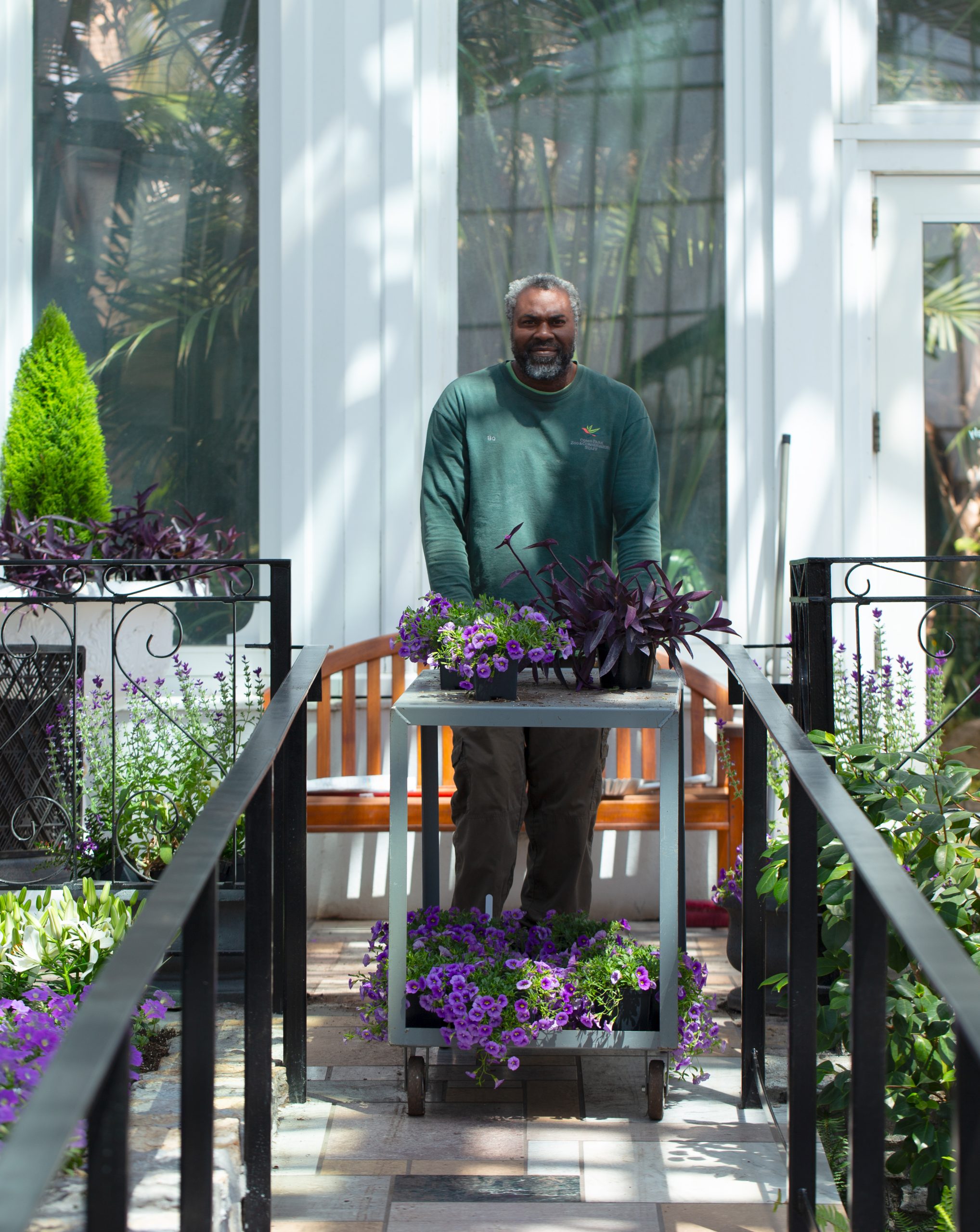
Designed by Horticulturist Bo Akinkuotu, the second part of the Spring Flower Show, open now through June 8, has washed Minnesota’s most beautiful room in the coolest of lavender blues. Enjoy this cottage garden filled with tall spires of blue delphinium and white lilies, calendula, stock, ageratum, and more!
The Marjorie McNeely Conservatory highlights five stunning flower shows each year. Your support for Como Friends helps make it possible. Thank you!
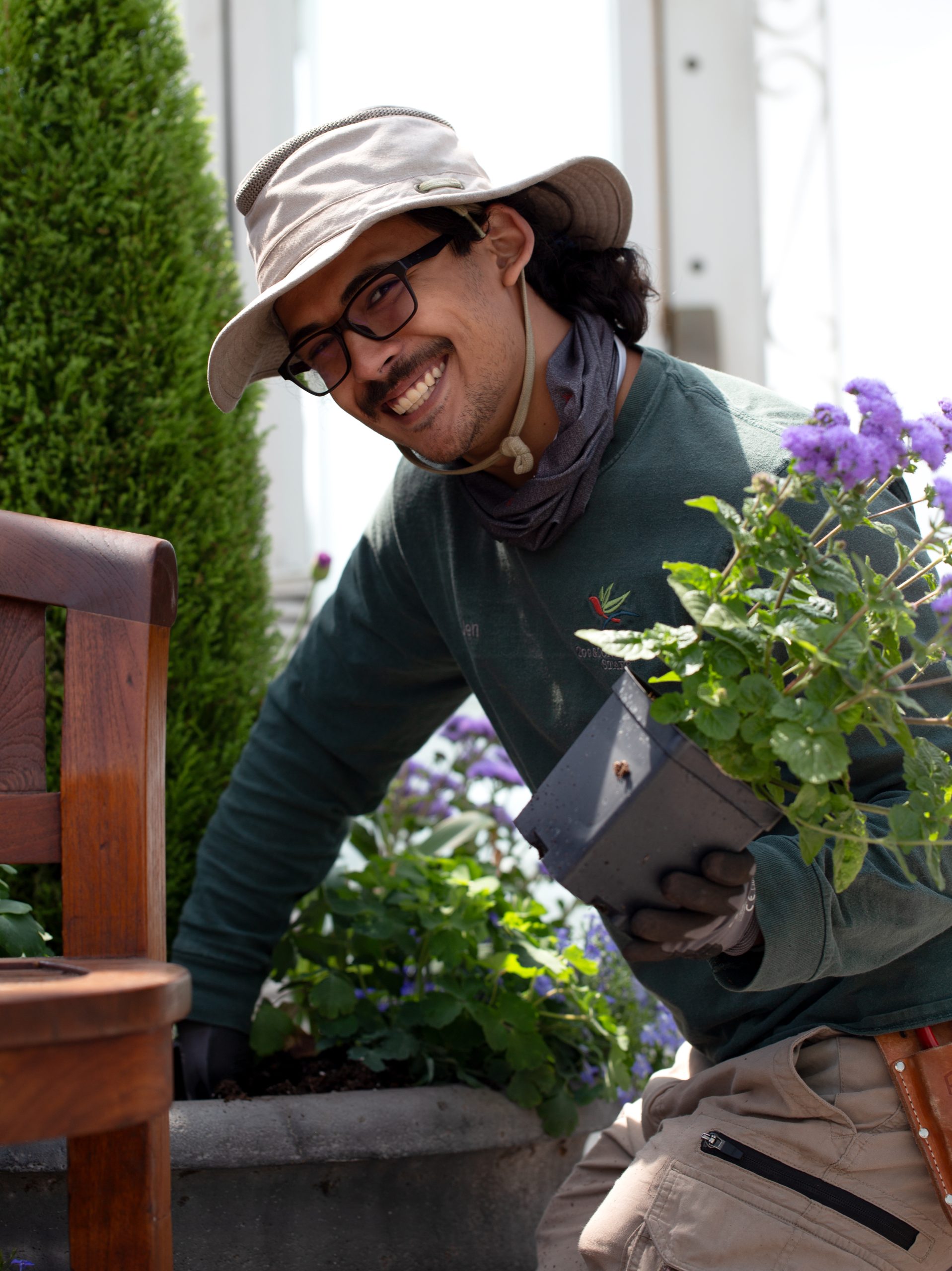
“My garden is my most beautiful masterpiece.” —Claude Monet
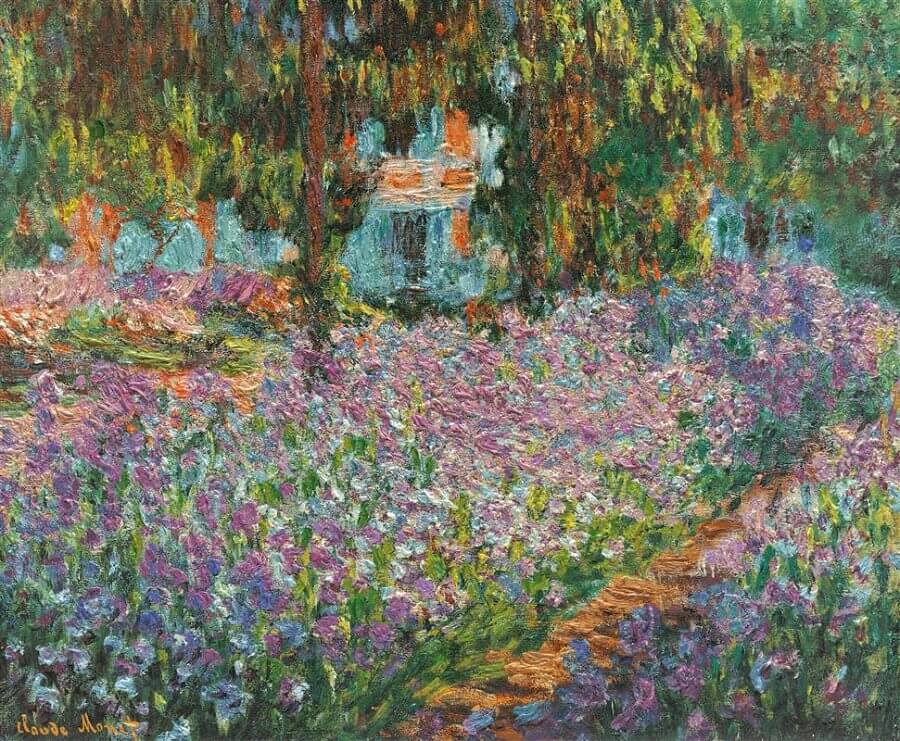

The Marjorie McNeely Conservatory’s Spring Flower Show will open March 21. Inspired by artist Claude Monet’s paintings of his beloved gardens at Giverny in France’s Normandy region, the first half of the show, running through April 27, highlights the Impressionist’s color palette of lavender, light blue, pink, and peach.
While horticulturist Ariel Dressler puts the finishing touches on Minnesota’s most beautiful room, Como Friends’ creative director Susannah Baudhuin went behind the scenes for this photographic sneak peek of the more than 7,000 bulbs, plugs, plants, and flowers about to make their debut.
“It’s on the strength of observation and reflection that one finds a way. So we must dig and delve unceasingly.” —Claude Monet
Numerous shades of ranunculus, peach foxglove, and pink snapdragons will complement show-stopping bulb selections that include blue hyacinth, pink daffodils, purple crocus, with a blend of lavender, white, and pink tulips.
Following a mid-show change from April 28 to May 2, tall spires of blue delphinium and purple foxglove will be the backdrop for a cottage garden collection of flowers including calendula, stock, ageratum, and more.
Remember to save the date for Garden Safari Gifts’ annual bulb sale on Monday, April 28, 2025. Stay tuned for details in our next Como Promo and Social Media posts.

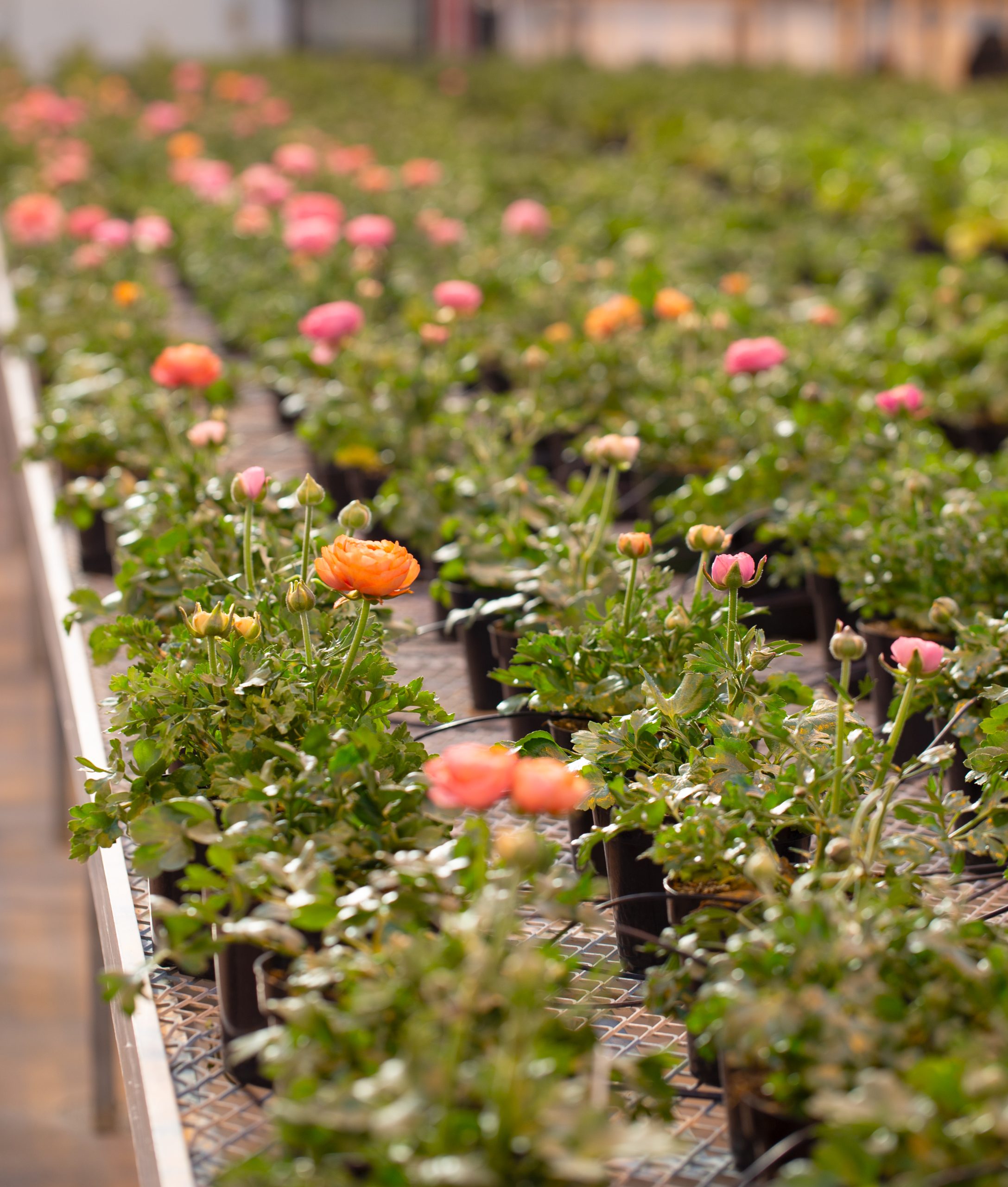

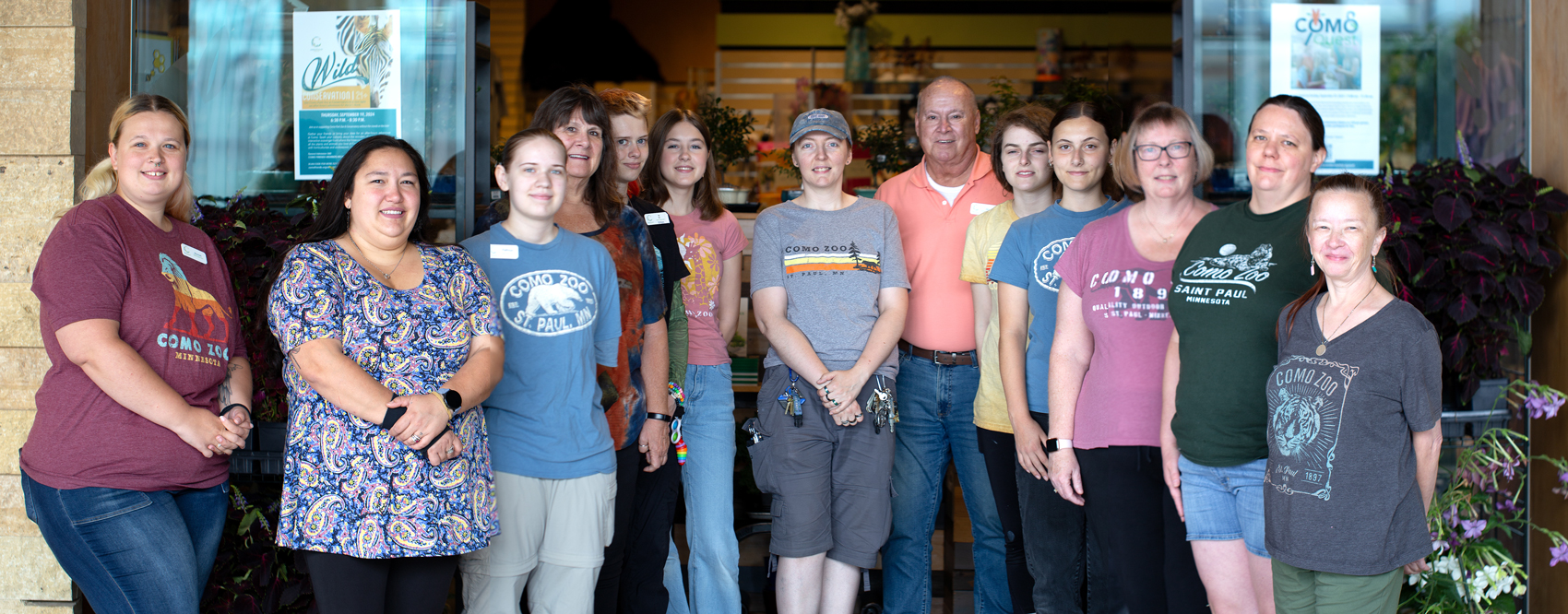
Como insiders know that Garden Safari Gifts is the place to go if you’re looking for that perfect Sparky t-shirt, puzzles and games for kids, and plush animals in the shape of nearly every species on the planet.
What you might not know is that every year, proceeds from Como Friends’ gift shop support the plants, animals, and people that converge at Como Park Zoo & Conservatory.

“The retail operation at Garden Safari Gifts has always been a big part of our business model at Como Friends, and its success is one of the reasons that Como Park Zoo & Conservatory continues to be free to visitors,” says Como Friends President Jackie Sticha. “Not only is it fun to shop there, but when you do, you’re helping to support the things that make Como so special.”
While small retail shops have been part of Como’s campus for years, Garden Safari Gifts was originally opened in 2005 as part of the Visitor Center expansion, with satellite shops later launched at Como Town, Gorilla Forest, and Polar Bear Odyssey during the busy summer months. “Consistent profits, especially in the early years, were important to establishing Como Friends as a strong nonprofit,” says Terri Scheunemann, Como Friends’ director of retail operations.
From the start, Como souvenirs and animal-themed gifts have been big sellers with visitors. But more recently, Garden Safari Gifts has curated a collection of more sustainably sourced and conservation-minded gifts, from beeswax food wrappers, to bags and bedspreads made from recycled cloth, and reusable straws and water bottles to help cut down on single-use plastics. “Supporting Como’s conservation mission has definitely been a growing part of our marketing plan, and our visitors seem to really like it,” says Sheila Wewers, Como Friends’ associate director of retail operations.
While most items at Garden Safari Gifts sell for less than $20, every purchase you make there has had a powerful impact at Como, investing in everything from cutting-edge animal care, to accessible education programs, to gorgeous public gardens. “Simply making the decision to shop at Garden Safari Gifts can help make great things happen at Como,” says Sticha. “Whether you make direct donations or shop with us, it’s all part of the community support that Como depends on.”
Remember, during the holiday season Como Friends members enjoy 20 percent off every purchase at Garden Safari Gifts through December 31.
In the Marjorie McNeely Conservatory we bid a fond farewell to the Summer Flower Show ending on September 22, and a warm welcome to the Fall Flower Show opening on September 27
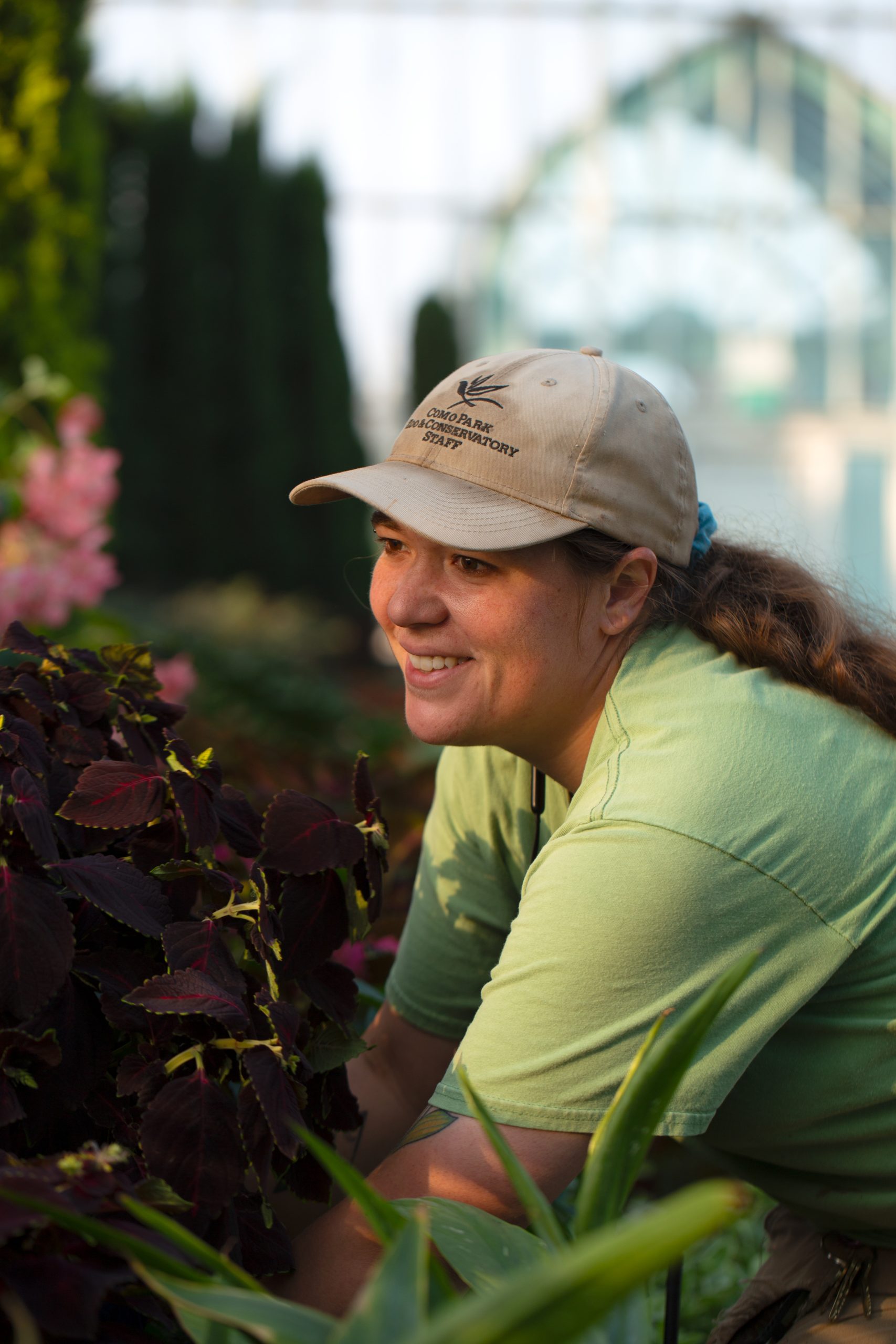

The annual shift from warm summer sunshine to crisp autumn glow seems to happen overnight, but at the Marjorie McNeely Conservatory, this seasonal change takes months of careful planning. As Como’s Summer Flower Show fades on September 22, and the Fall Flower Show comes into bloom on September 27, check out this pictorial preview of the behind-the-scenes prep work that helps Minnesota’s most beautiful room make a change of season.
Horticulturist Rylee Werden and RightTrack Apprentice Willow are collaborating to bring their vision of an autumn sunset to life in Minnesota’s most beautiful room. “Other than the mums of course, we are planning to feature a variety of fall plants in sunset colors including yarrow, celosia, ornamental peppers, chard, violas, heuchera, kales, sunflowers, marigolds, millet and grass,” says Werden.
A first-time show for Willow, who has been working closely with the entire horticulture team for more than a year now. “It’s been great to hear Willow’s ideas and incorporate my vision and hers together,” says Werden. “We are really excited to see everyone’s reaction to our ombre color scheme from around the pool to try to mimic our inspiration of a sunset on the water.” Here’s a sneak peek.
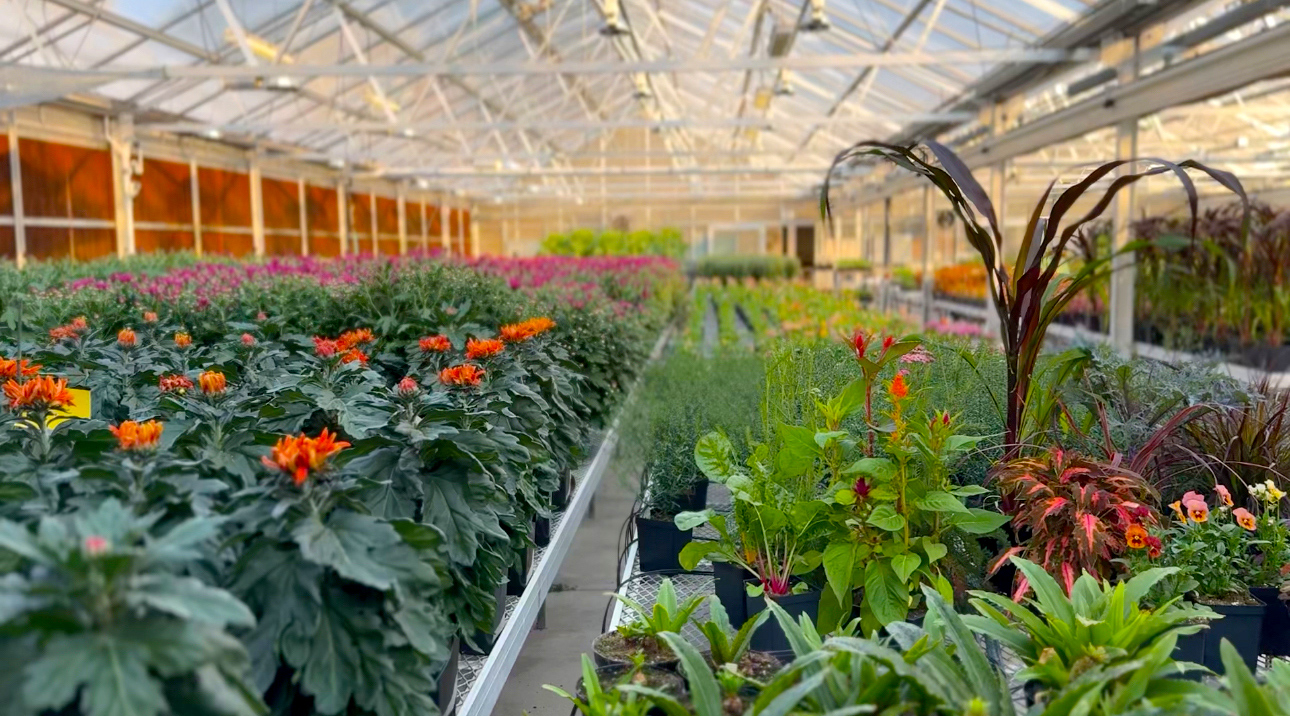


Como’s chrysanthemum show has been a tradition since 1915, but you’ve never seen a fall flower show quite like this one! With an “Under the Sea” theme, the display includes anemone mums, green stingray colcassia, spider mums, and succulents that combine to create a cool octopus’s garden vibe in Minnesota’s most beautiful room. Check out this photo preview, and make plans to see it before October 30, when the fall flower show’s second half transforms into a celebration of Dia de los Muertos.
Did you know that the succulents used in the Fall Flower Show are the very same succulents used in the Gates Ajar display this summer!

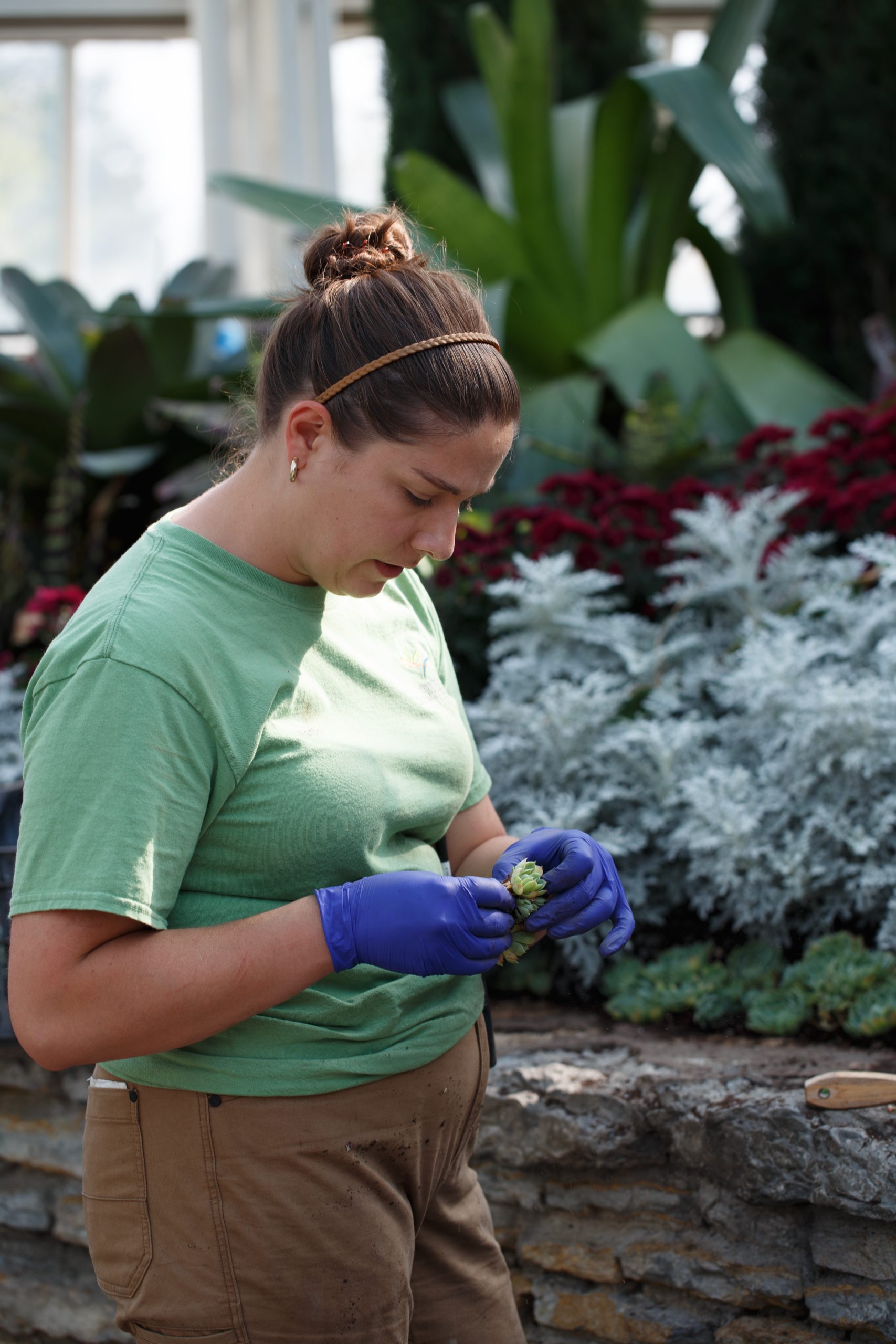
Open from 10 a.m. to 4 p.m. every day, the Fall Flower Show is always free to visitors, thanks to your contributions to Como Friends.
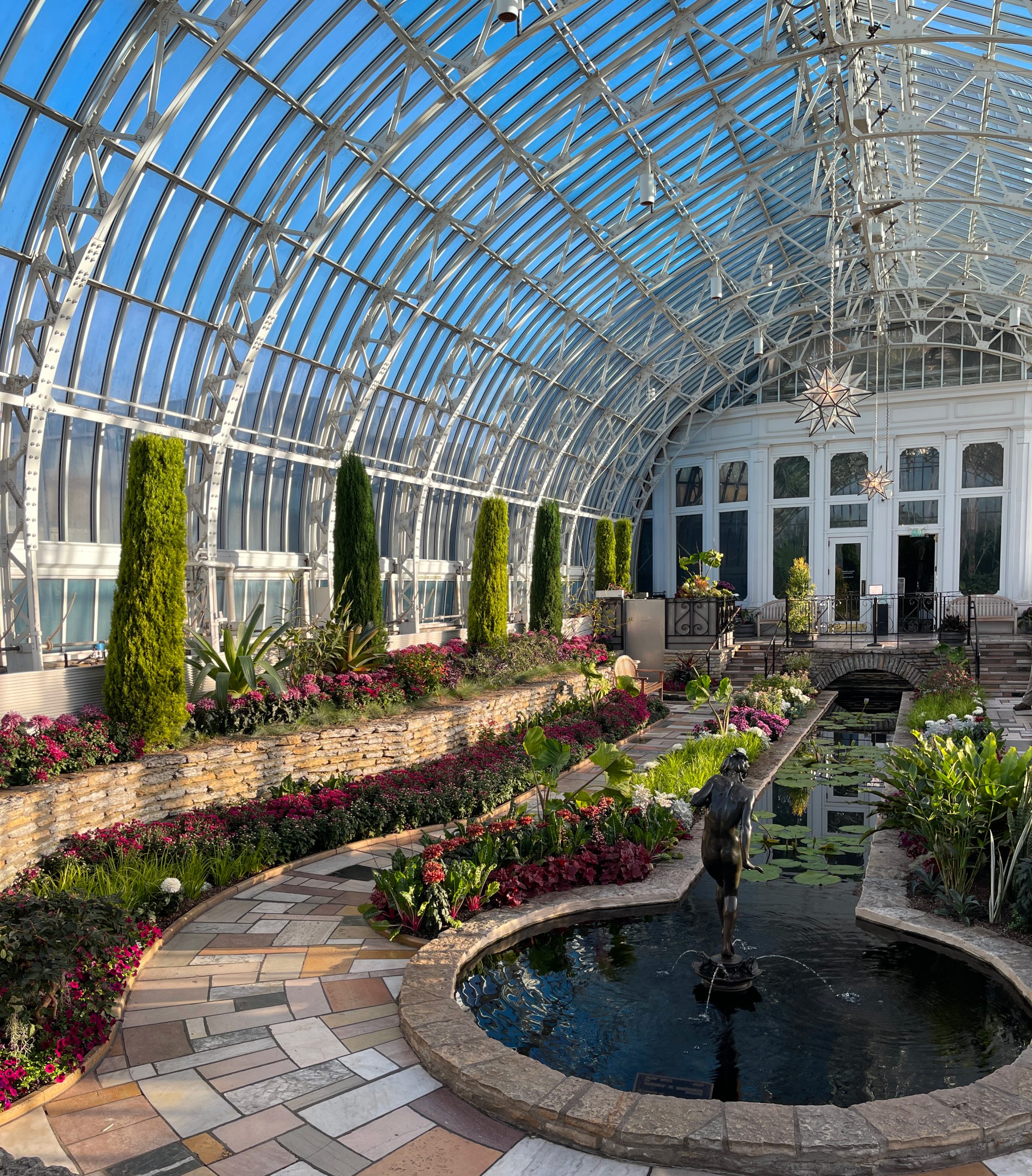
The biodiversity of Como’s rainforest habitat requires complex care
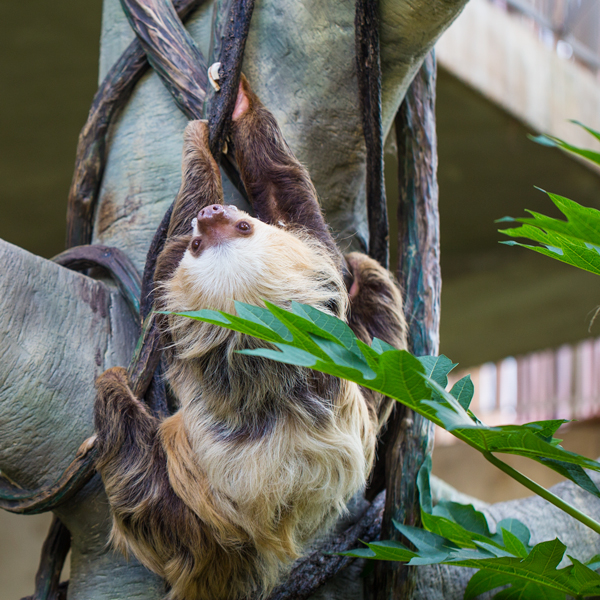
“When we try to pick out anything by itself,” the famous naturalist John Muir once wrote, “we find it hitched to everything else in the Universe.”
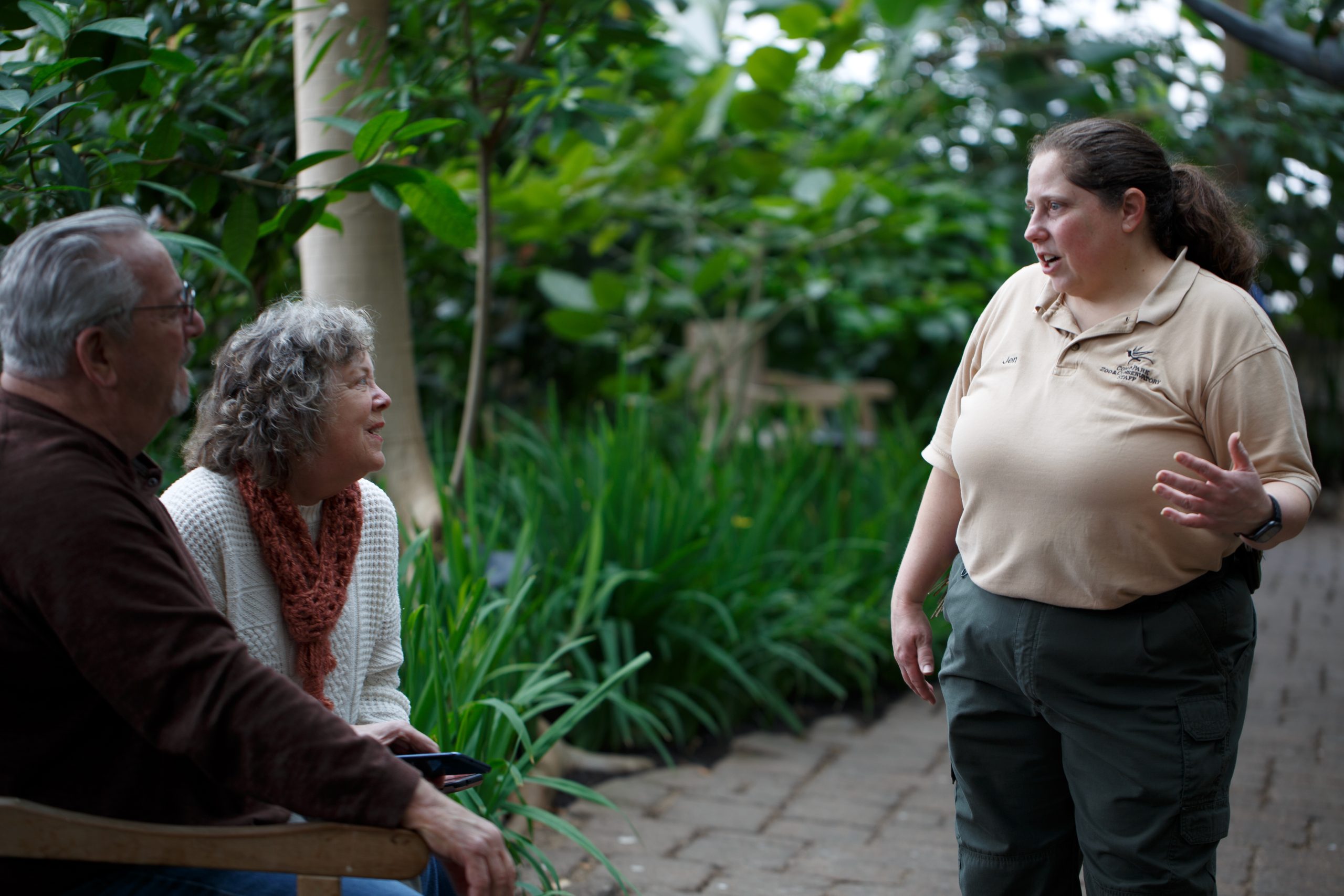
The profound interdependence of plants, animals and people is one of the lessons Como Park Zoo & Conservatory strives to convey to more than a million visitors every year, and nowhere is that lesson more evident than in Tropical Encounters. Opened in 2006, the immersive rainforest habitat features an extensive array of tropical plants and trees, and an equally diverse range of animals, from high-flying tanagers, to a slithering anaconda, to Chloe, Como’s beloved free-ranging sloth.
With so many living things under one roof, Como Zoo keepers and Marjorie McNeely Conservatory horticulturists collaborate closely within Tropical Encounters to ensure that making a change in one corner of the habitat doesn’t have negative impacts for other residents of the rainforest. That’s why the Tropical Encounters team is taking its time on a major soil replacement project this season paid for by your contributions to Como Friends.
Visitors this summer may notice that horticulturists are taking a staged approach to the process, removing spent soil from one location at a time, to make sure that the root systems of rainforest trees and the animals that live in the vicinity are all thriving. The effort is a little bit like repotting a giant terrarium, says horticulturist Diane Rafats: “We do take special care in this habitat. Everything we do here can affect everything that lives here.”
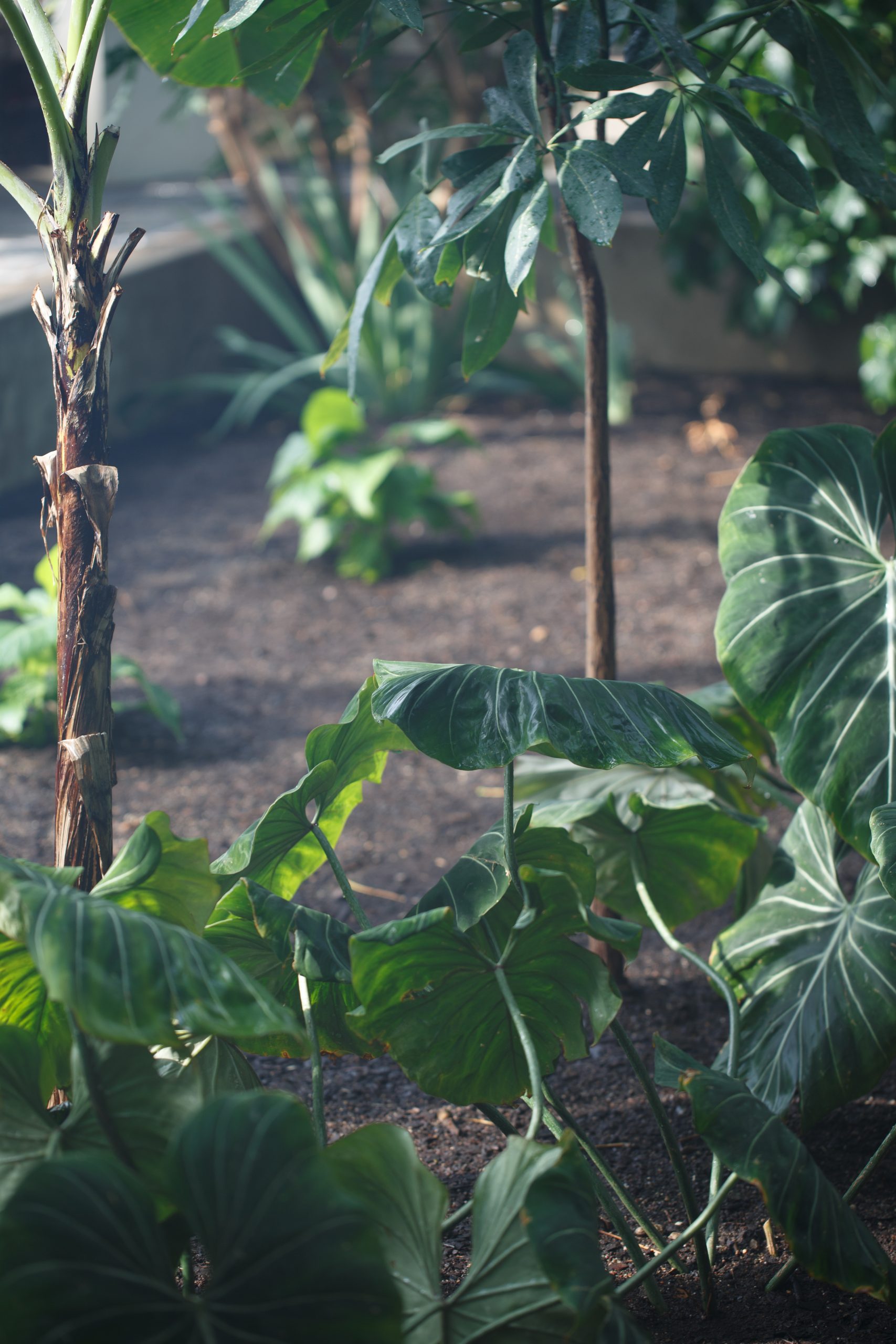
Private support secured by Como Friends is critical to making behind-the-scenes improvements that keep every corner of the Marjorie McNeely Conservatory healthy and thriving. This year, Como Friends’ funding will also support a new lighting system for the North Garden’s gorgeous collection of economic plants, a new sound system to improve the experience for visitors, and a new design plan to renovate and repair Como’s popular Victorian Water Garden pool. Thank you!
It’s been a busy season of new arrivals at Como Zoo
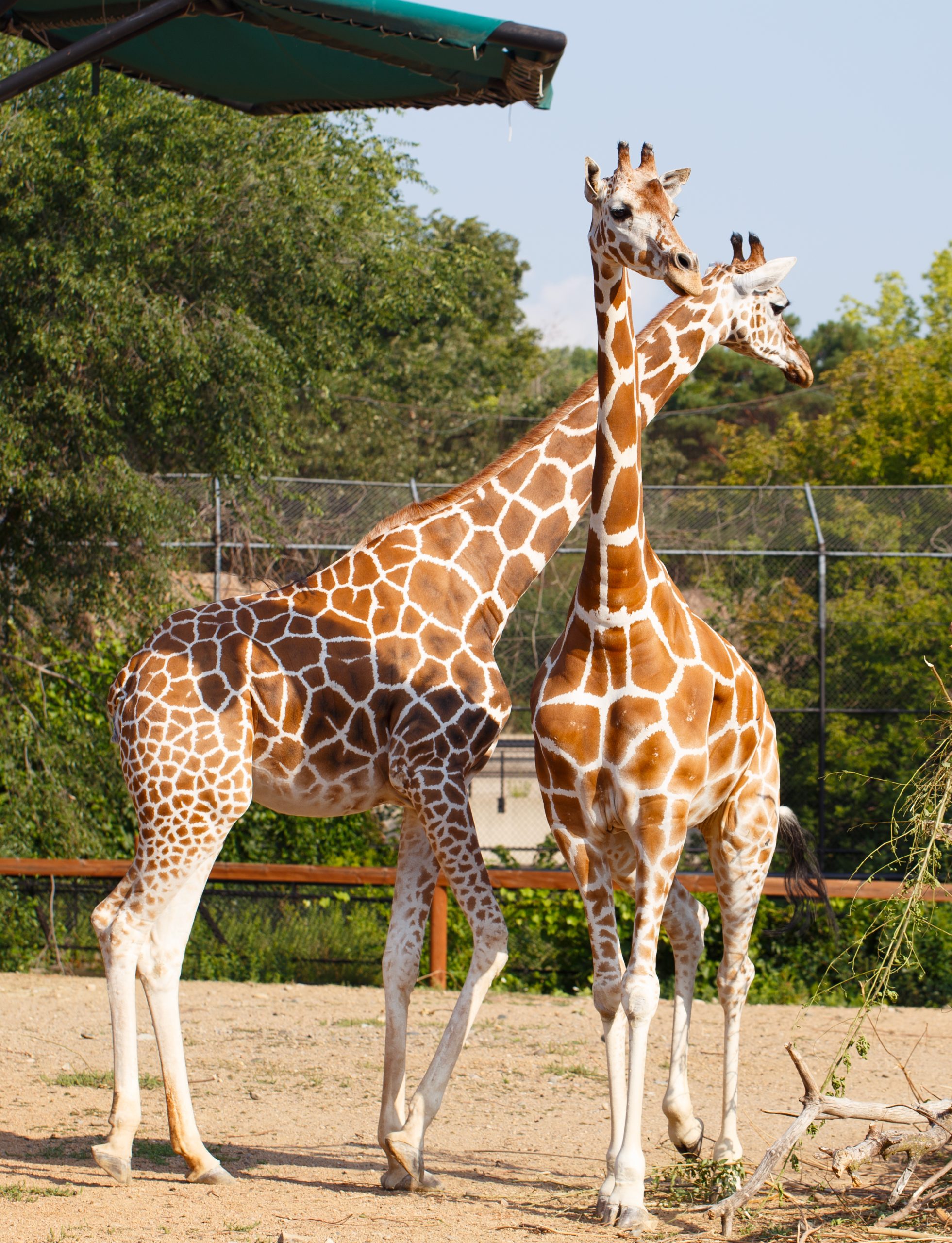
Stanley, Houdini, Mutambi, Stevie….there are a lot of new names to match to new faces at Como Zoo. Here’s a sneak peek of the new animals you should be sure to meet on your next visit.
-
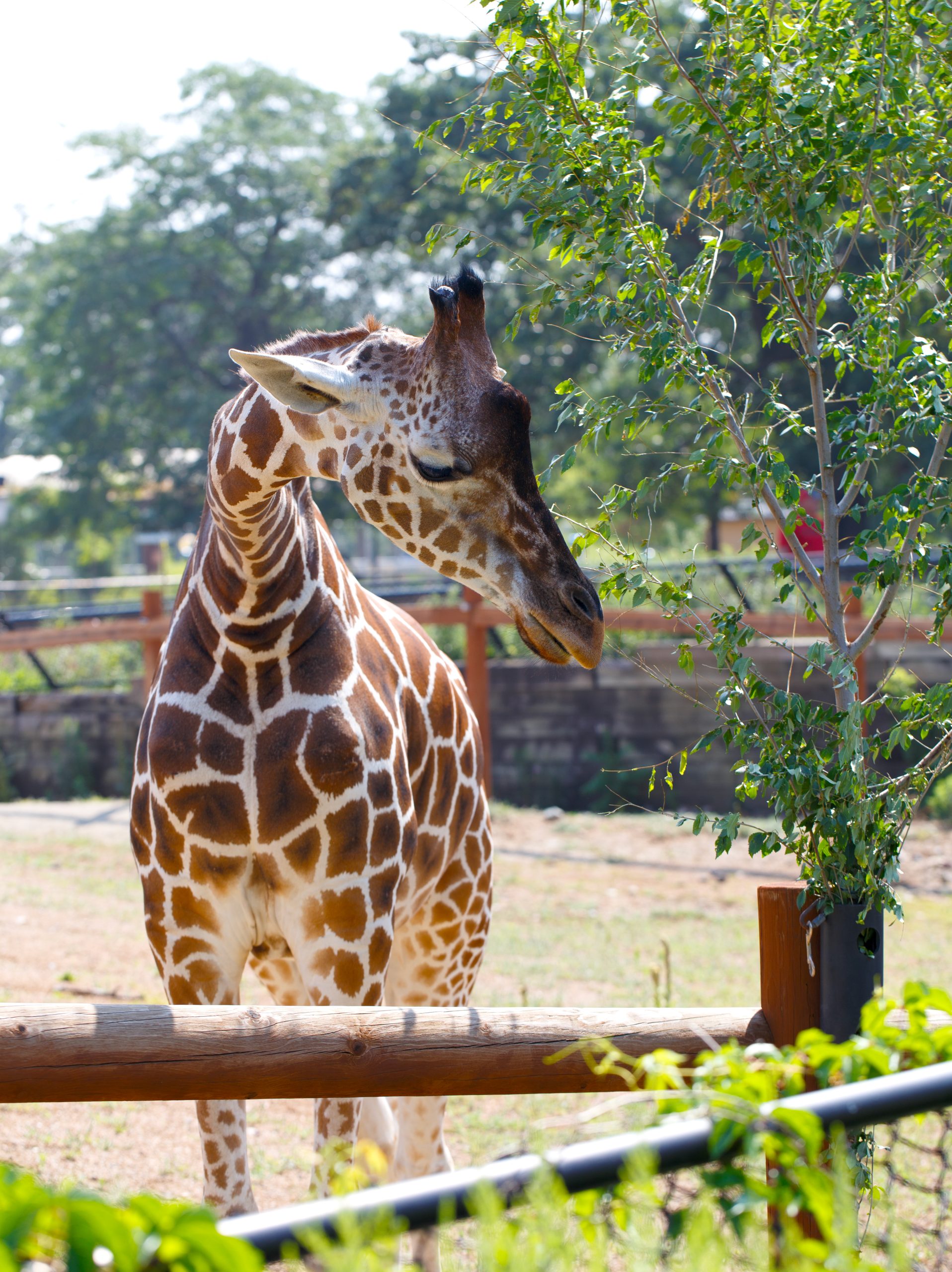
Zinnia
Species: Reticulated GiraffeSeven-year-old Zinnia arrived at Como Zoo this spring to be a companion to Clover, who lost her long-time friend, 23-year-old Daisy, earlier this year. Zinnia is easy to recognize, says senior keeper Jill Erzar, because of her “beautiful dark face and the cute freckles on her bum.” Though she’s got a laid-back vibe, keepers say she’s very food-oriented and is increasingly curious about the giraffe feeding station. So far, Zinnia and Skeeter, the habitat’s resident male giraffe, are giving each other lots of space. “Skeeter seems to be terrified of her,” Erzar says. “We have no idea what that’s about.”
-
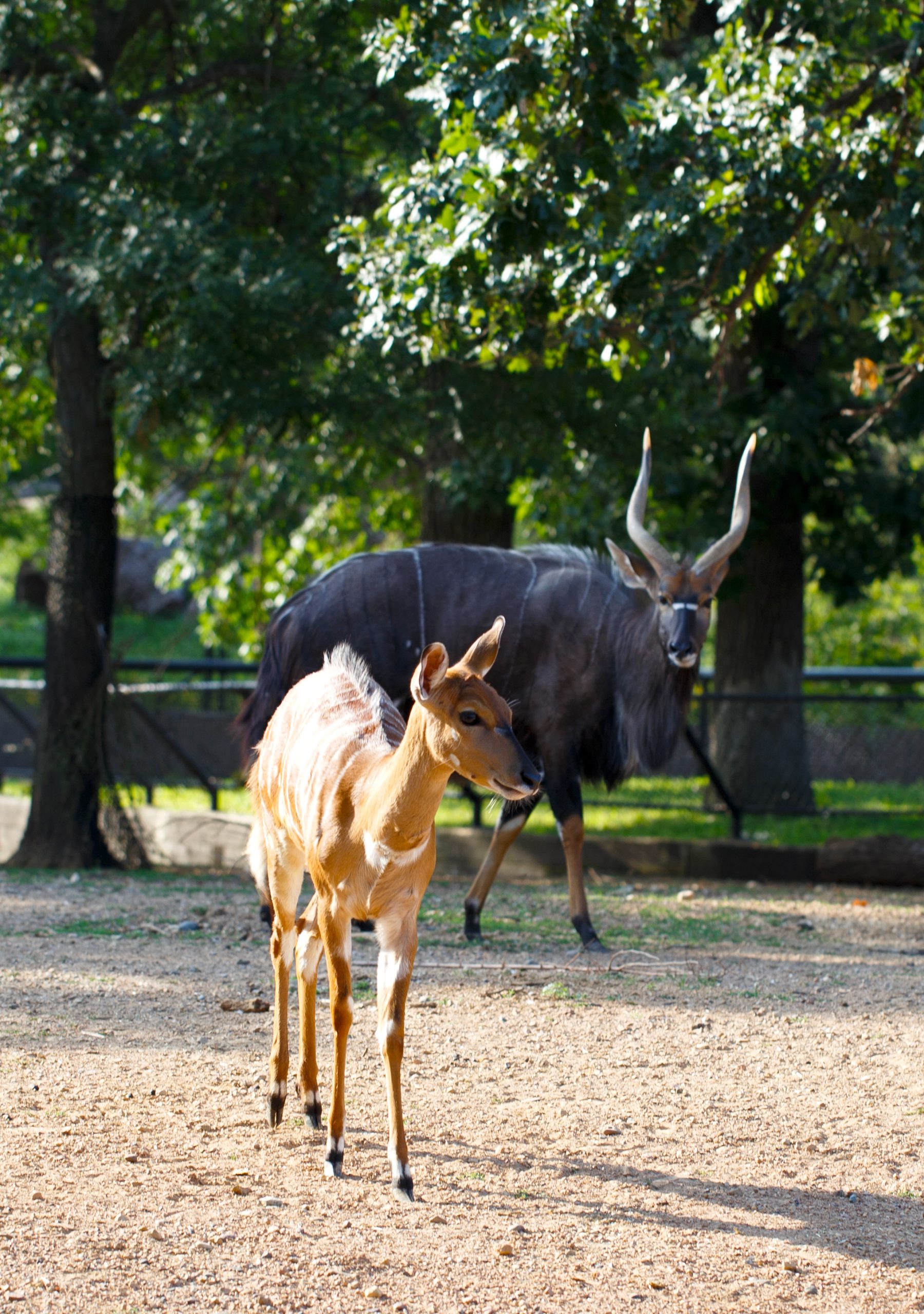
Stanley and Stevie
Species: NyalaThese spiral-horned antelopes native to southern Africa are known for their eye-catching coats and their gregarious nature. “The nyala are very calm, interactive and engaging,” says Erzar. “They don’t mind crowds either—they’re incredibly chill.” Brought to Como Zoo this spring as part of a species survival plan, the two young nyala may become a breeding pair if the chemistry is right. “We haven’t seen any behavior like that so far, but nyala males have a unique breeding display. The mane along their spine stands completely upright when they’re trying to attract a mate, so that’s something we’ll be looking out for in Stanley.”
-

Ziggy and Sago
Species: Hoffmann’s Two-Toed SlothsThe milk crates you see strung up in the former lemur habitat have become a favorite hang-out spot for Ziggy, a 2-year-old male sloth who’s just moved in with his partner Sago, a 5-year-old female. The couple could become a breeding pair in the future, though, as zookeeper Mike Marazzi explains, the courtship process can be very slow. “Sloths are very private about things, so any breeding that takes place is usually going to happen overnight, and when they do have a baby, it could be a bit of a surprise to us since female sloths don’t always show their pregnancies with a visible weight gain,” he explains. Though they’re living in the primate building this summer, sloths are not related to their neighbors the orangutans and spider monkeys. Instead, they belong to the superorder Xenarthra, and share a family tree with anteaters and armadillos.
Photo taken by Zookeeper Michelle Hays.
-
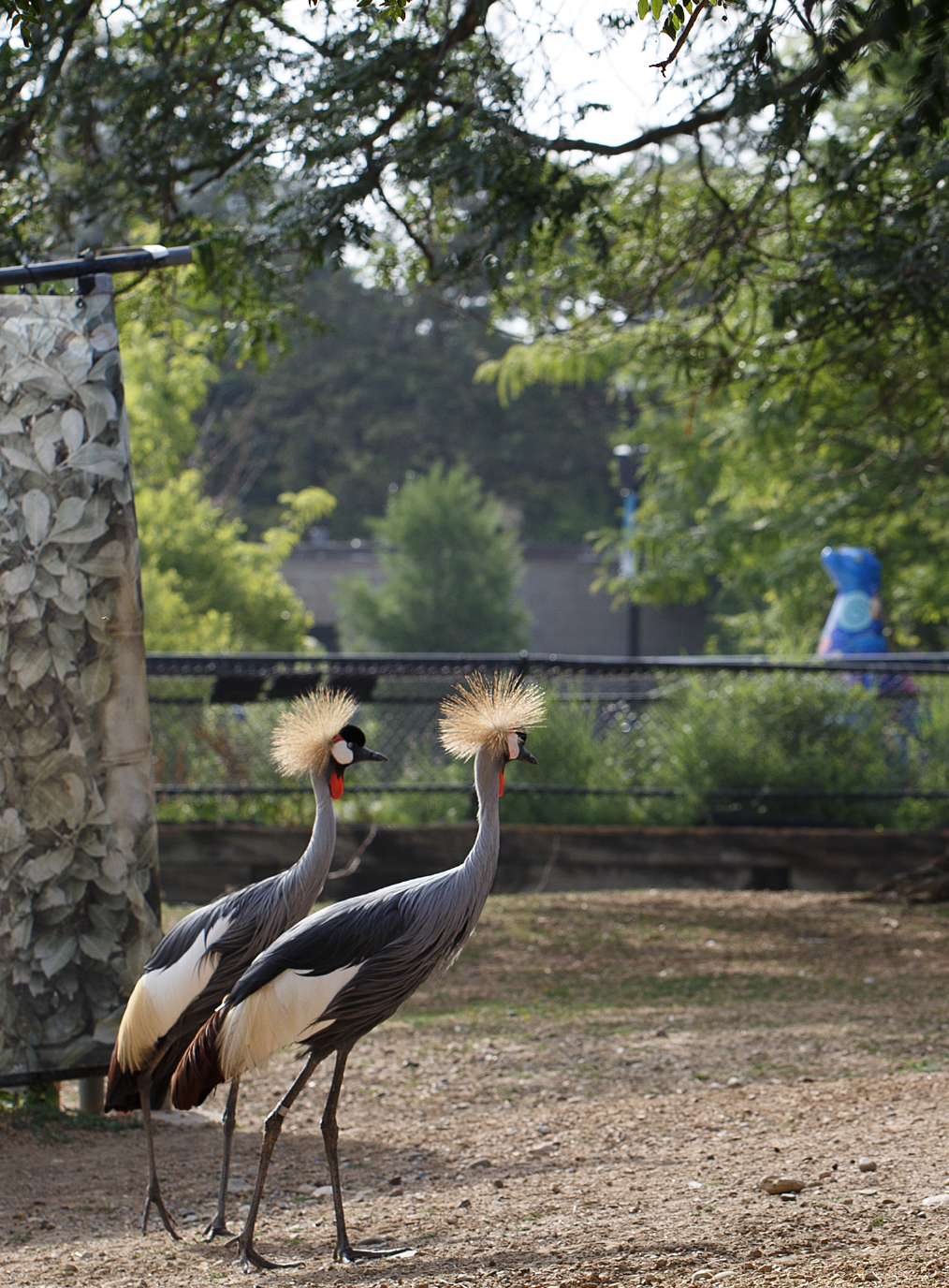
Houdini and Mutambi
Species: African Gray crowned craneHoudini, 13, and Mutambi, 5, are part of a species survival plan breeding recommendation for the gray crowned crane, the national bird of Uganda. But so far, Houdini is only doing his courtship dance for his keepers. “Houdini hasn’t quite figured out that his girlfriend is awesome,” Erzar says. You might notice the cranes stamping their feet—a behavior that helps flush insects and other prey out of the grass.
To learn more about the new faces at Como Zoo, check out the Fall edition of the Como Friends Insider. Delivered free to Como Friends’ members, this quarterly newsletter features behind-the-scenes stories about the people, plants and animals that make Como Park Zoo & Conservatory Minnesota’s most visited cultural destination. Become a member today!
the Summer Flower Show is always free to visitors, thanks to your contributions to Como Friends
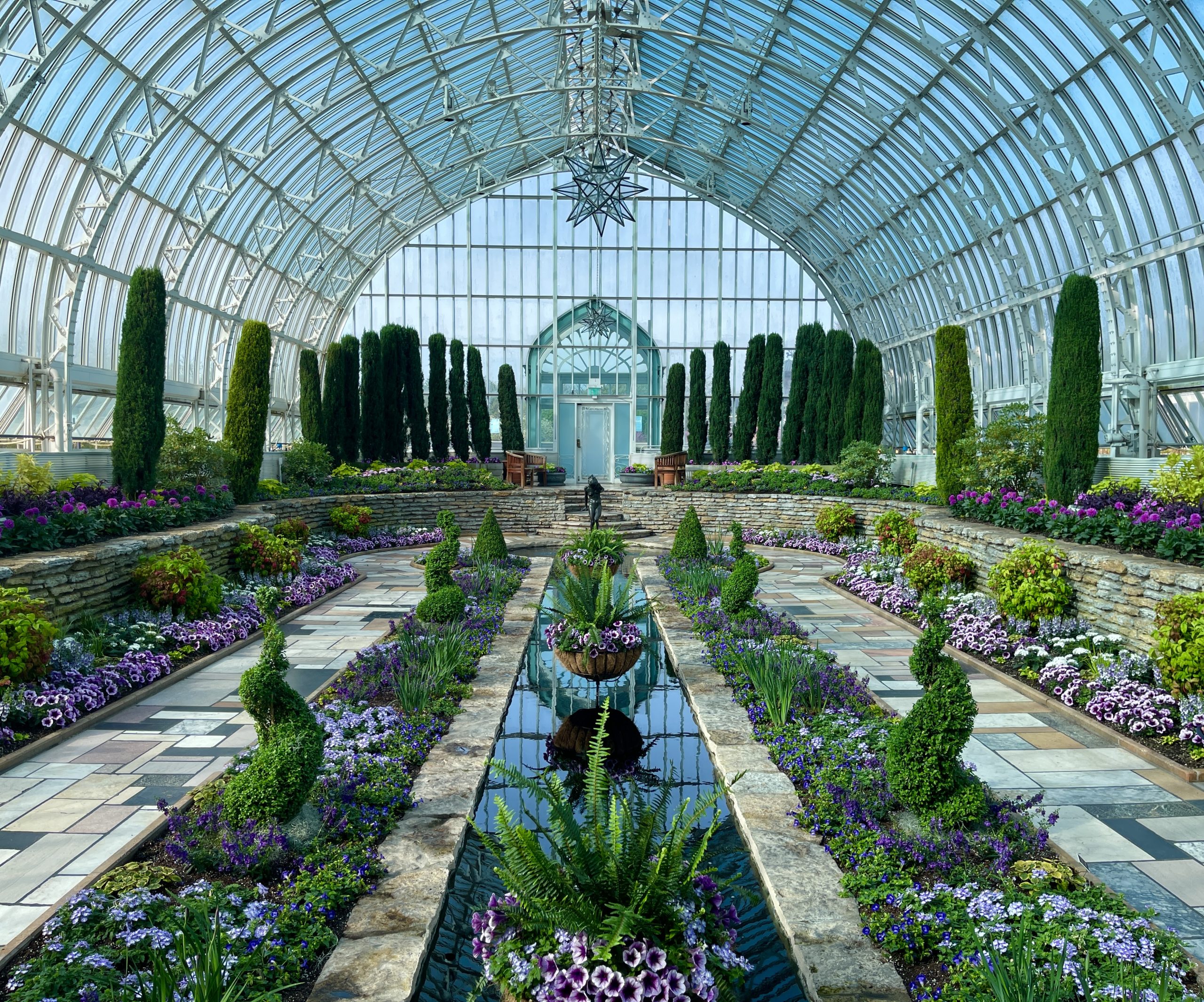
Summer starts early in the Sunken Garden, where the Marjorie McNeely Conservatory’s Summer Flower Show is already in bloom. Brimming with bright colors and new varietals, the year’s longest running flower show is a great place to find inspiration for your own backyard. Open from 10 a.m. to 6 p.m. every day, the Summer Flower Show is always free to visitors, thanks to your contributions to Como Friends.
Nearly a year in the making, the Marjorie McNeely Conservatory’s Spring Flower Show is finally in bloom
Since her arrival last year, Dr. Lisa Philander, the Marjorie McNeely Conservatory’s new horticultural curator, has been digging in to every corner of Como’s horticultural operations, from climbing ladders to prune the fig trees in the North Garden, to drawing up the design for this season’s Spring Flower Show.
Starting back in July 2022, Dr. Philander selected the flowers, bulbs and plants she wanted to see this season in the Sunken Garden. “That’s why there are so many hyacinth, because I just love hyacinth,” she says.
She also knew she wanted to incorporate several topiaries donated by her friend and master gardener Marge Hols, the long-time Pioneer Press gardening columnist, who passed away last summer. Hols was also a past president of the St. Paul Garden Club, whose members have been generous donors and volunteers of the Marjorie McNeely Conservatory over the years. “I love that we have her topiaries in the show, in her honor,” Dr. Philander says.
With a vibrant palette of chartreuse green, purple, pink and yellow, Dr. Philander also mixed grasses and giant allium around the beds surrounding the pool to resemble “a springtime meadow with bulbs popping up,” she says. “We’re just trying it out, but the hope is that they’ll bloom in succession, so there will be something new for visitors to see every day.”
The Marjorie McNeely Conservatory’s Spring Flower Show is free to the public and open every day, from 10 a.m. to 6 p.m., through April 30. Made possible, in part, by your contributions to Como Friends, the Spring Flower Show is the most anticipated and well-attended display of the year.
“Conserving resources is part of our mission at Como Friends, so we’re happy to support the beautiful flowers people will see this spring in the Sunken Garden, and to provide shoppers the opportunity to reuse the bulbs and make their gardens look great,” says Jackie Sticha, president of Como Friends.
Each year, Como grows about three times as many tulips as will fill the Sunken Garden, so that as each bloom peaks and fades, horticulturists can swap in a fresh flower. Once they’ve made their debut in the Sunken Garden, hundreds of bulbs are then recycled and sold each year at Como Friends’ Garden Safari Gifts for replanting in garden beds and backyards all over the Twin Cities. “Conserving resources is part of our mission at Como Friends, so we’re happy to support the beautiful flowers people will see this spring in the Sunken Garden, and to provide shoppers the opportunity to reuse the bulbs and make their gardens look great,” says Jackie Sticha, president of Como Friends. Be sure to follow Como Friends’ Facebook page for announcements about this frequent sell-out event.
Outstanding veterinary care can prolong the lives of animals like Daisy the giraffe. But for Como Zoo keepers, humane animal care can also make for heartbreaking decisions.
With more than a thousand animals of 215 different species in Como’s care, death is part of the natural life cycle at Como Zoo. Even so, recent months have felt especially challenging, as Como Zoo said goodbye to two iconic animals well known to and beloved by the public.
Last week, keepers made the difficult decision to humanely euthanize Daisy, a 23-year-old reticulated giraffe, who had been suffering from severe degenerative arthritis. A few months earlier, Como lost another beloved animal ambassador, 46-year-old orangutan Amanda, who was diagnosed with an inoperable abdominal mass that was causing chronic damage to her kidneys.
“Daisy was a strong, beautiful matriarch – quick to judge and slow to accept her human coworkers,” says Como Zoo senior keeper Jill Erzar. “She was a fierce and protective mother who would do anything to keep her calves safe. She was an extraordinary ambassador for giraffe, helping us connect visitors to her wild counterparts by telling her story.”
A fixture at Como Zoo, famous for her art work and her flair with textiles, Amanda the orangutan, who died at 46, was the quintessential animal ambassador, a gregarious great ape who helped to personalize nature while inspiring visitors to protect it.
Losses like this are hard on the whole zookeeping staff, says Erzar. “But being transparent about these events is an important way to tell the public about how much effort goes into life and death decisions about animal care,” she says, noting that there’s an even longer list of Como Zoo animals whose lives were saved or improved by major interventions over the last year. Below is a look at a few of them:
Dental Surgery for Tsar: A few years ago, Tsar the tiger went into cardiac arrest during a root canal and nearly died. “Dr. Fausto Bellezzo, our veterinarian at the University of Minnesota, jumped on him and did the most heroic CPR to bring him back,” says Erzar. “But we were very hesitant to immobilize him again.” When it became clear Tsar needed the procedure again in October, Como consulted with a team of tiger experts to help minimize the high risks of putting large cats under anesthesia, preparing for “every possible scenario we could imagine,” says Erzar. With 17 keepers and specialists assembled, this year’s procedure went “like clockwork,” and the 9-year-old tiger is back on the prowl.
Hormone Therapy for Forest: When they’re growing, reindeer antlers are covered in a complex vascular network called “velvet” that sheds as the antler hardens. But without the usual surge of male hormones required to boost the process, Forest’s antlers bled extensively, causing the castrated reindeer to collapse on exhibit last year. “Como vet tech Andrea Persson raced in and got a tourniquet on him right way,” says Erzar. This year, keepers found a much simpler solution—a short-term hormone implant that’s helped the reindeer develop and drop his antlers according to schedule.
Cataract Surgery for Gomez: One of the longest-lived spider monkeys at Como, 31-year-old Gomez was also one of its most recognizable, coming directly up the bay window of his habitat and shading his eyes to get a better look at visitors. “For decades, he had cataracts that were infringing on his vision, and that was his unique way of dealing with light sensitivity,” explains primate keeper Em Brunmeier. In March, Gomez had successful cataract surgery that will allow him to see well into his golden years. “We still see him shade his eyes at times, but it’s more of a reflex or a little salute at this point,” says Brunmeier.
Helping Jasper Navigate: Orphaned in the wild and brought to Como Zoo in 2018, mountain lions Jasper and Ruby have always stayed close together, and this year, a medical exam may have found the reason. “Jasper has progressive retinal atrophy, retinal tissue that either never forms or is not connected quite right or is lost over time,” says Erzar. Knowing more about his visual impairment has helped keepers develop a better plan for his care, which will involve keeping him outdoors where he’s most comfortable. “We are very lucky he has Ruby and they are close, because we do see her help him out,” Erzar says, adding that while his functional blindness won’t hurt his quality of life, it may help visitors feel more connected to the cougar. “When you see an animal that’s dealing with a challenge that a lot of humans face as well, it helps build that connection and that empathy about what humans and animals have in common.”
For the Marjorie McNeely Conservatory’s team of horticulturists, the Spring Flower Show is an act of love
Tulips have been gaining on roses as the favored flower of Valentine’s Day, a flower trend that Como horticulturist Bo Akinkuotu says is easy to understand. Not only are tulips said to signify true and perfect love, he says, “they also come in practically every color, and they give us all that first sign of spring that we all look forward to seeing.”
In keeping with decades of tradition, tulips will also be the star players in the Marjorie McNeely Conservatory’s Spring Flower Show, scheduled for March 25 through April 30. But getting nearly 10,000 bulbs to bloom on cue for the show’s four-week run requires a full year of tender loving care, especially from Akinkuotu, who is responsible for this year’s tulip crop. “This is my first time managing the tulips, so the pressure is really on,” he says. Here’s a look at how the Marjorie McNeely Conservatory’s horticultural staff makes it happen:
1). Planning for the Spring Flower Show happens nearly a year in advance, as the Conservatory staff take down the previous season’s show, study which plants performed best, and create a new design for the year ahead. While many bulbs can be recycled and reused, funding from Como Friends helps to keep every flower show feeling fresh, providing for the new varietals and exotic bulbs that winter-weary Minnesotans long to see every spring.
2). By fall, Como’s backstage growing space begins to fill with crates of spring bulbs, which are potted up in stages by Como’s horticultural staff and a team of community volunteers. The majority still come from the Netherlands, where more than 90 percent of the world’s tulips are farmed.
3). Thanksgiving Day is the unofficial deadline for getting up to 10,000 tulips and supporting players like daffodils, hyacinth, and ranunculus into pots and ready for winter. With their roots just formed, the spring bulb crop moves into a backstage cooler for up to four months. The Marjorie McNeely Conservatory’s climate control system—recently updated thanks to contributions to Como Friends—is critical to the process, creating the cold conditions that spark the flower formation within each bulb.
“Conserving resources is part of our mission at Como Friends, so we’re happy to support the beautiful flowers people will see this spring in the Sunken Garden, and to provide shoppers the opportunity to reuse the bulbs and make their gardens look great,” says Jackie Sticha, president of Como Friends.
4). The warm-up starts in early March, as horticulturists move each bulb back into the growing range, rising soil temperatures help the flowers to mature within the bulbs, with early flower stalks emerging in time for the show’s debut on March 25. “Getting the timing right here is critical,” says Akinkuotu, adding that with pricey plant material, “we want to get the biggest bang for our buck.” The chilly temps visitors may notice in the Sunken Garden help to keep the flowers at their peak for longer.
5). Each year, Como grows about three times as many tulips as will fill the Sunken Garden, so that as each bloom peaks and fades, horticulturists can swap in a fresh flower. Once they’ve made their debut in the Sunken Garden, hundreds of bulbs are then recycled and sold each year at Como Friends’ Garden Safari Gifts for replanting in garden beds and backyards all over the Twin Cities. “Conserving resources is part of our mission at Como Friends, so we’re happy to support the beautiful flowers people will see this spring in the Sunken Garden, and to provide shoppers the opportunity to reuse the bulbs and make their gardens look great,” says Jackie Sticha, president of Como Friends. Be sure to follow Como Friends’ Facebook page for announcements about this frequent sell-out event.



